Hinge Points: An Inside Look at North Korea’s Nuclear Program
2008
Dates: February 13-16, 2008
Yongbyon visit: February 14, 2008
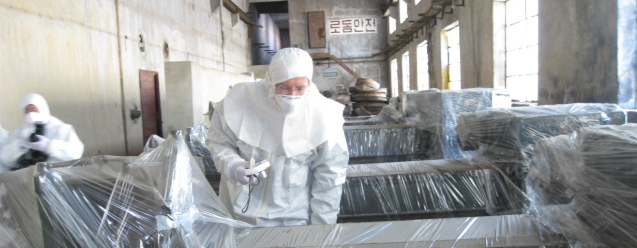
This visit came about only six months after the 2007 trip. The North Korean side stressed that the principal reason for that visit was to verify the seriousness of their disablement actions at the Yongbyon Nuclear Center.
Stanford delegation included Siegfried S. Hecker, CISAC, Stanford University, W. Keith Luse, senior staffer to Senator Richard Lugar, U.S. Senate, and Joel Wit, senior fellow at the Johns Hopkins University School of Advanced International Studies U.S.–Korea Institute and former U.S. State Department official.
In his trip report, Hecker wrote:
“Our visit leads me to conclude that the DPRK leadership has made the decision to permanently shut down plutonium production if the United States and the other four parties live up to their Oct. 3, 2007 commitments. However, they have retained a hedge to be able to restart the facilities if the agreement falls through.”
S. Hecker, Report of Visit to the Democratic People’s Republic of North Korea (DPRK), Pyongyang and the Nuclear Center at Yongbyon, Feb. 12 – 16, 2008.
Notes of Discussions with Dr. Ri Hong Sop
2008: Disablement verification visit to Yongbyon
In the beginning of 2008, the IAEA and the United States had a constant presence in Yongbyon. The access afforded the U.S. technical team, the IAEA inspectors, and Hecker’s Stanford delegation underscored that having feet on the ground was crucial for getting critical insights into Yongbyon’s operations and the North’s nuclear program. During the visit to the Yongbyon nuclear complex on February 14, 2008, the Stanford delegation received “extraordinary” permission to use their own cameras inside the complex. The photographs below document in detail the disablement actions implemented by the time of the visit.
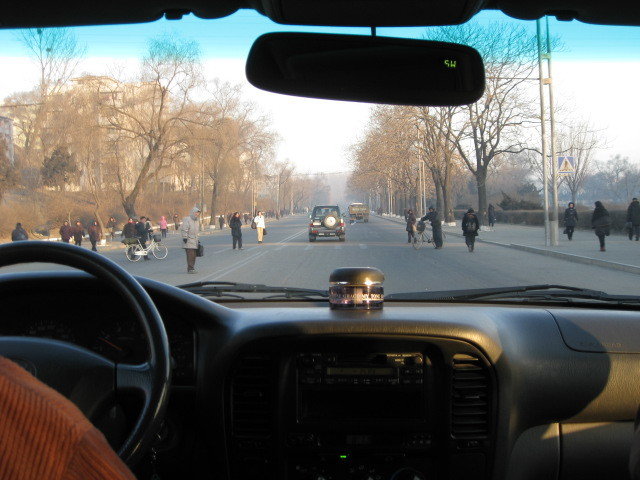
A busy morning in Pyongyang – on way to Yongbyon.
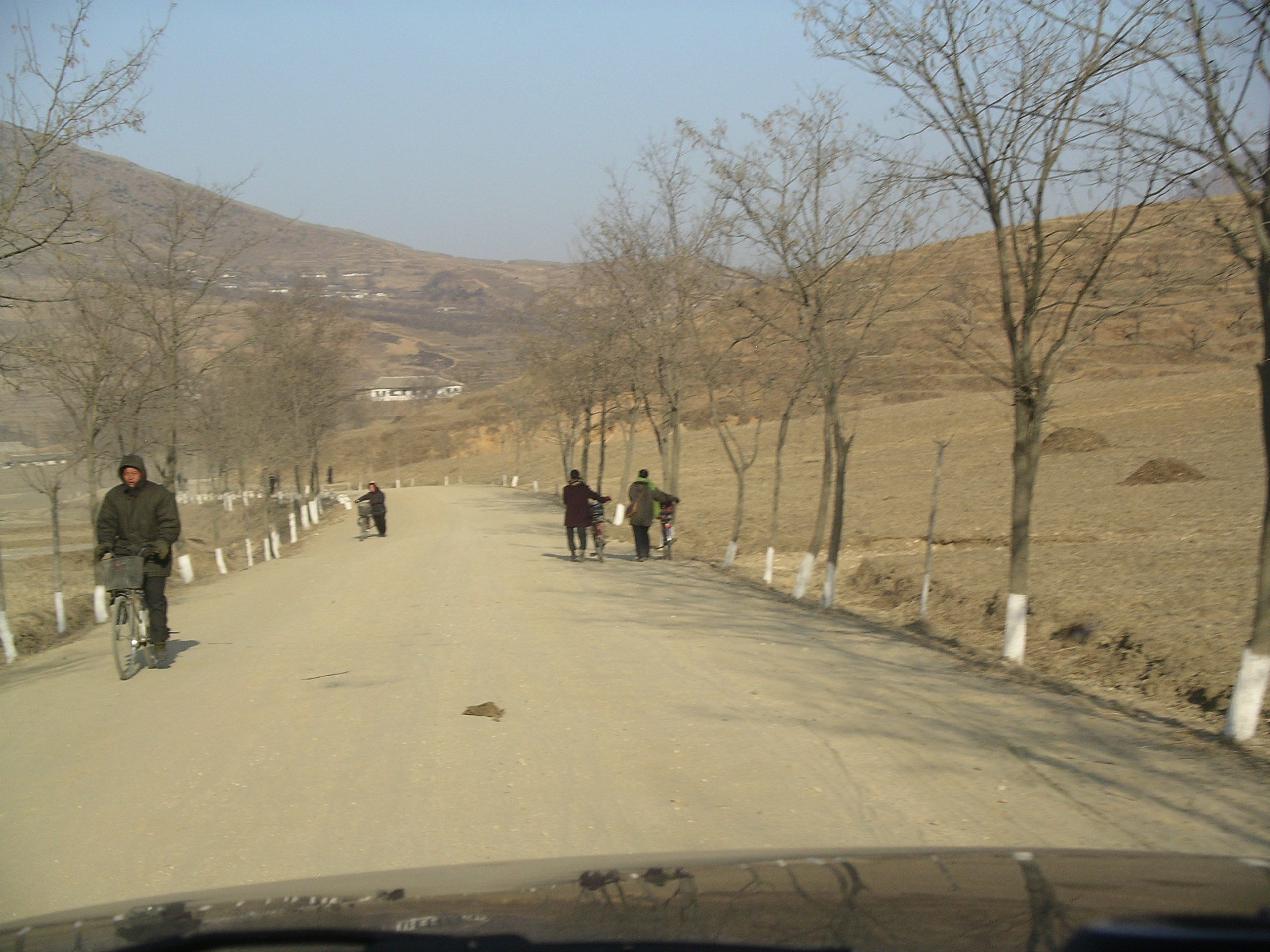
Off the highway on the way to Yongbyon.
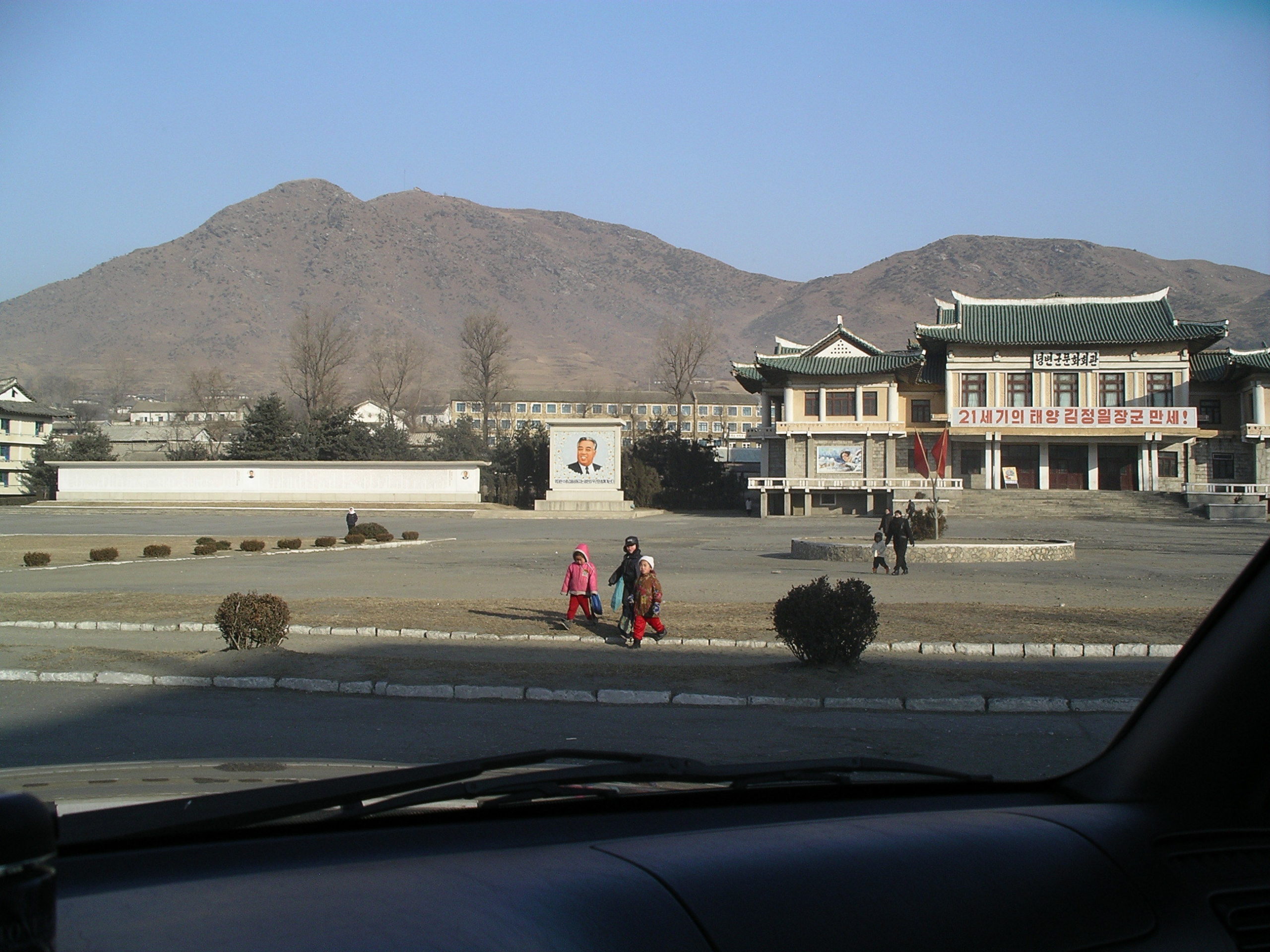
Yongbyon city.
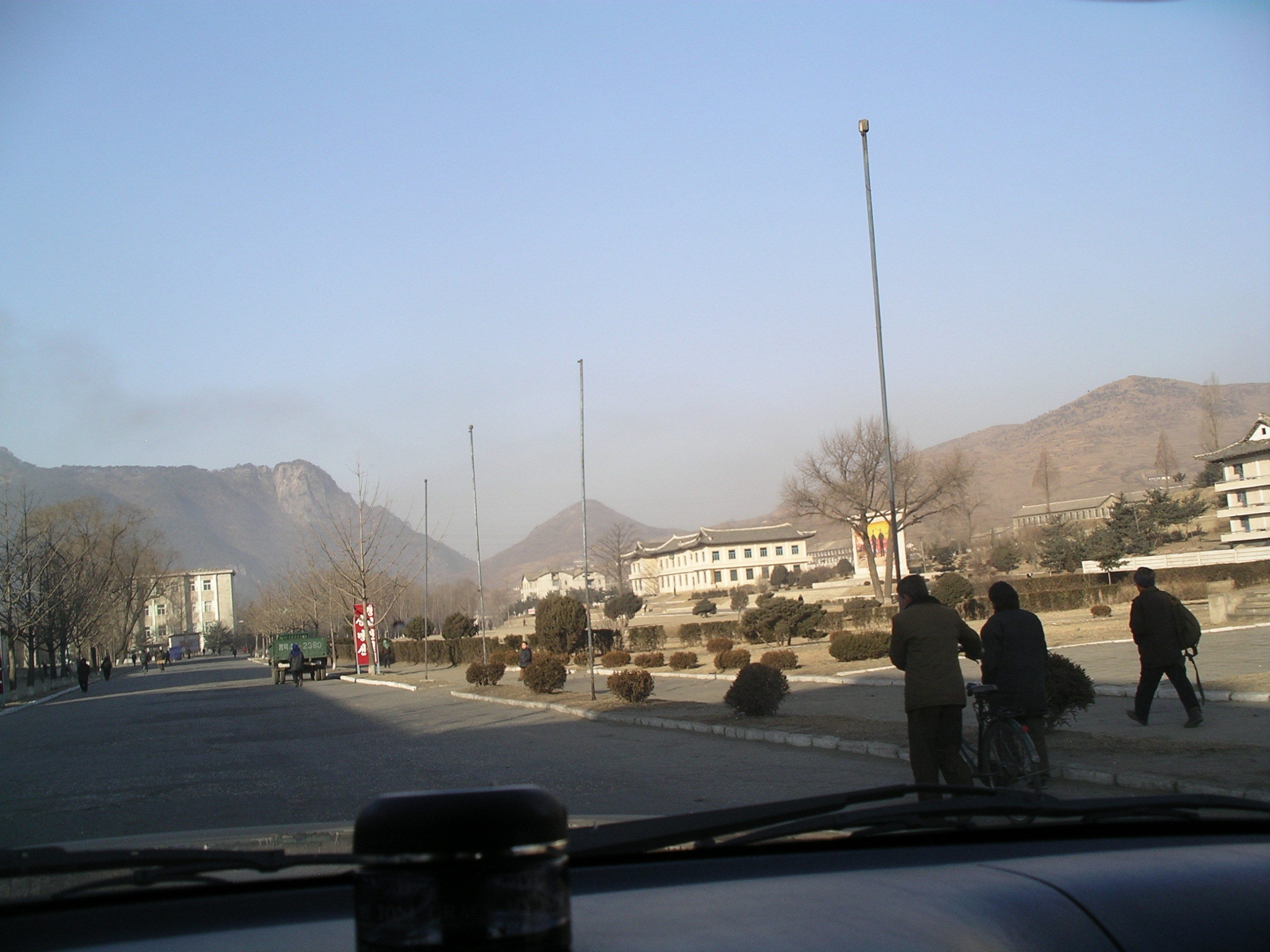
Driving through the city of Yongbyon on the way to the nuclear research site.
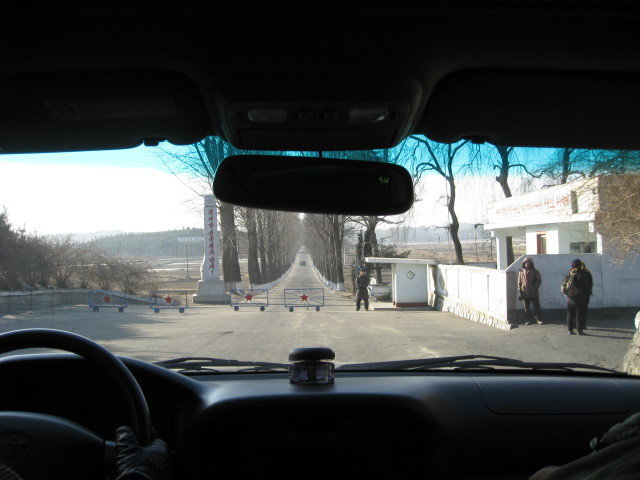
First guard gate entry into Yongbyon nuclear village.
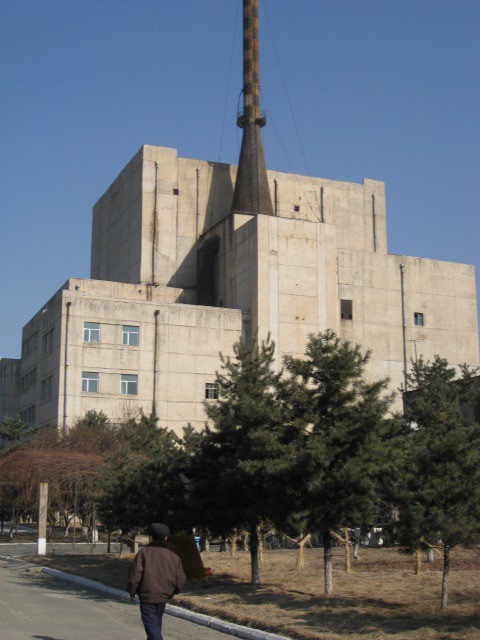
5 MWe reactor in Yongbyon.
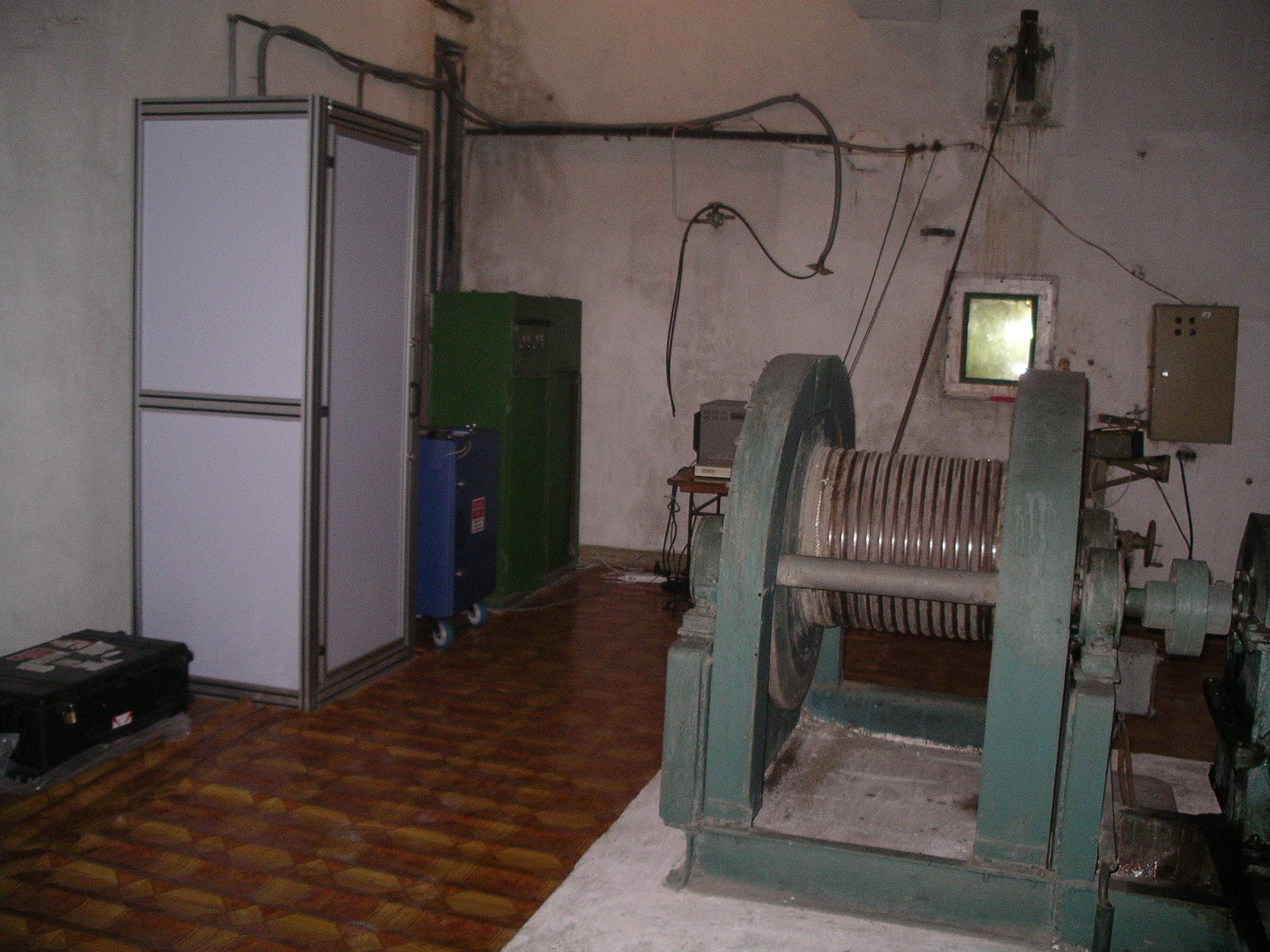
5 MWe Reactor. Winch room in reactor building. Los Alamos radiation monitoring detector checks the passage of every fuel rod being discharged from core.
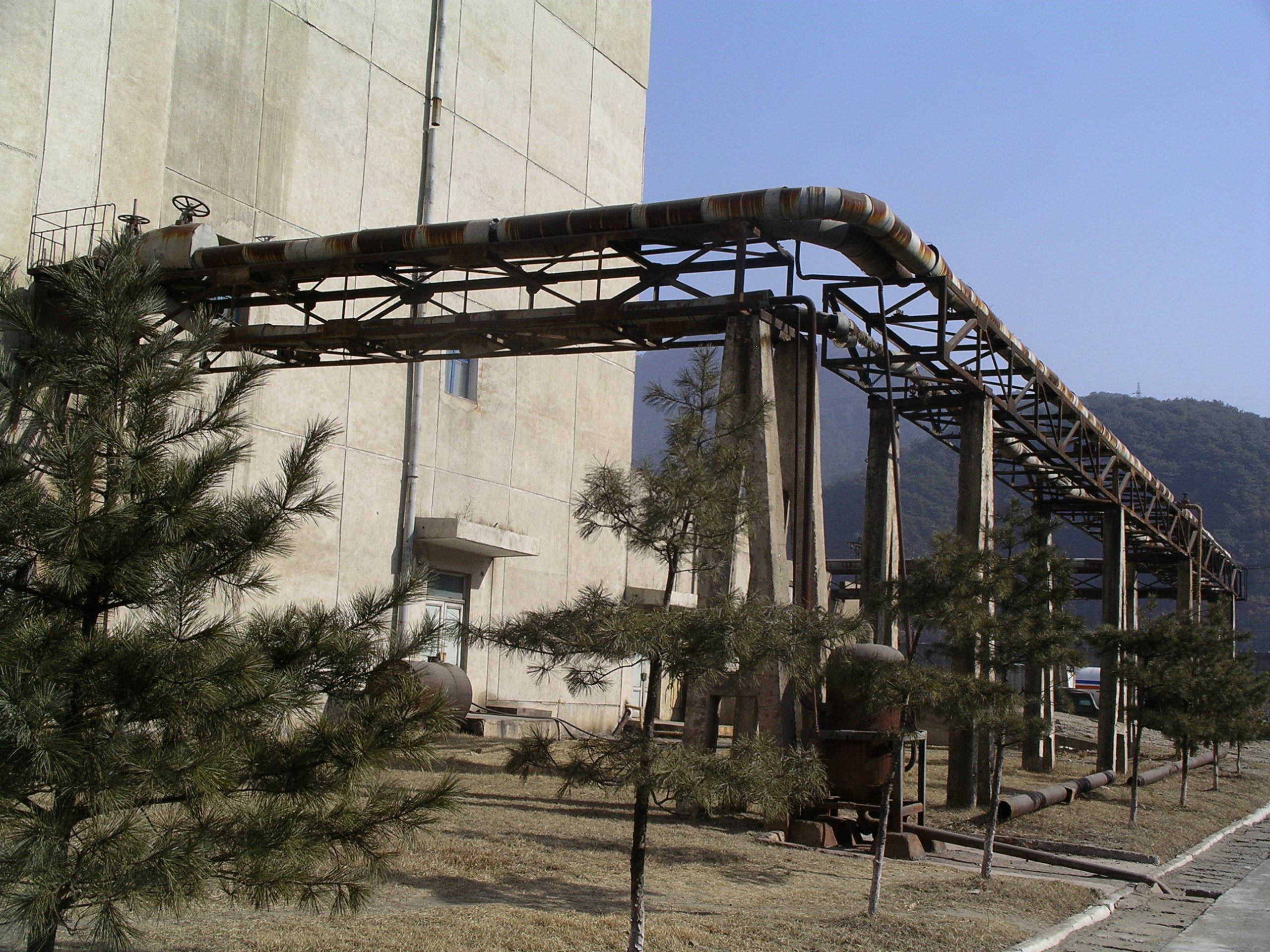
Secondary cooling pipes at 5 MWe reactor.
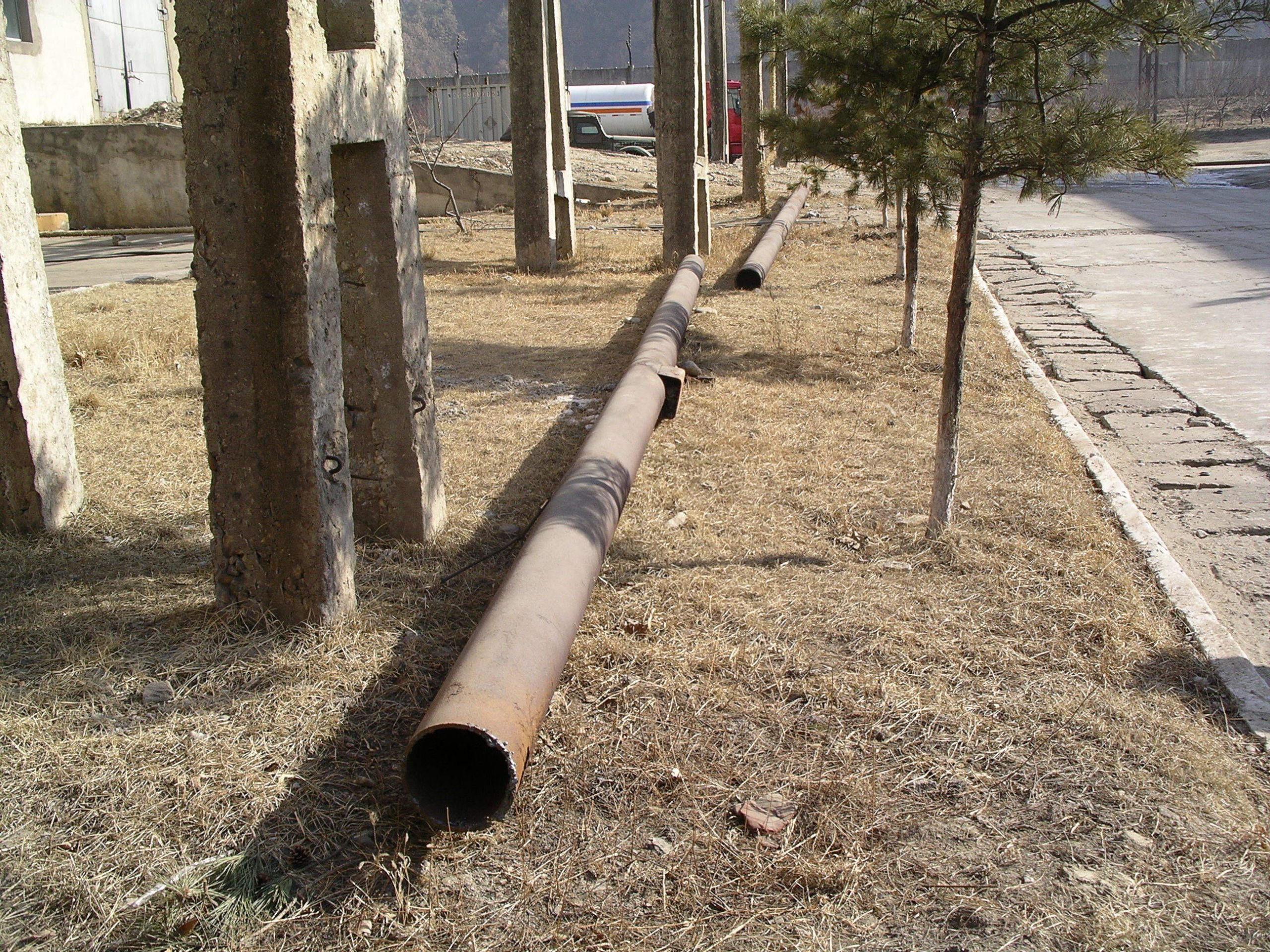
Disconnected secondary cooling pipes lying next to 5 MWe reactor building.
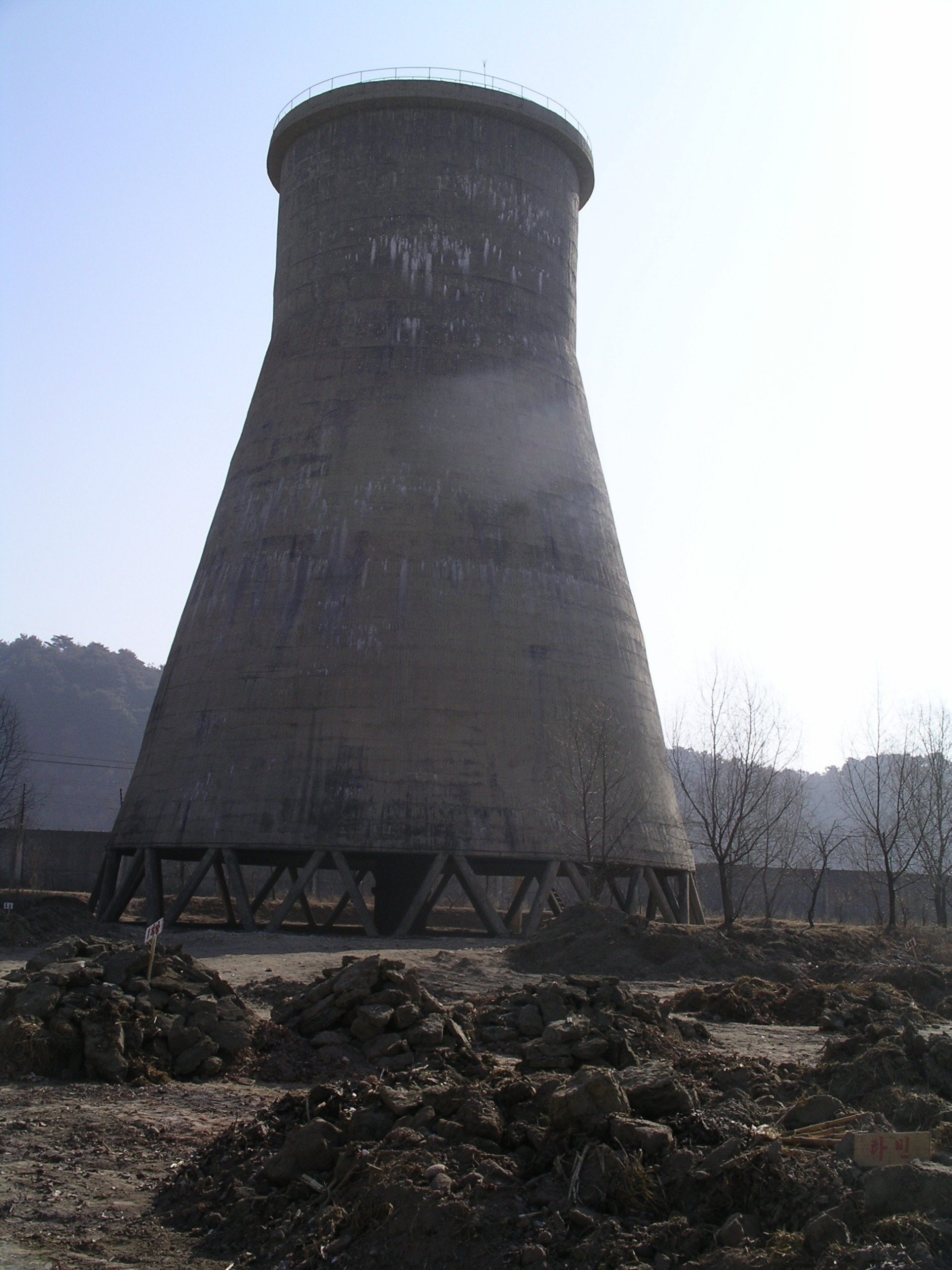
Outside photograph of cooling tower – the symbol of nuclear power plants.
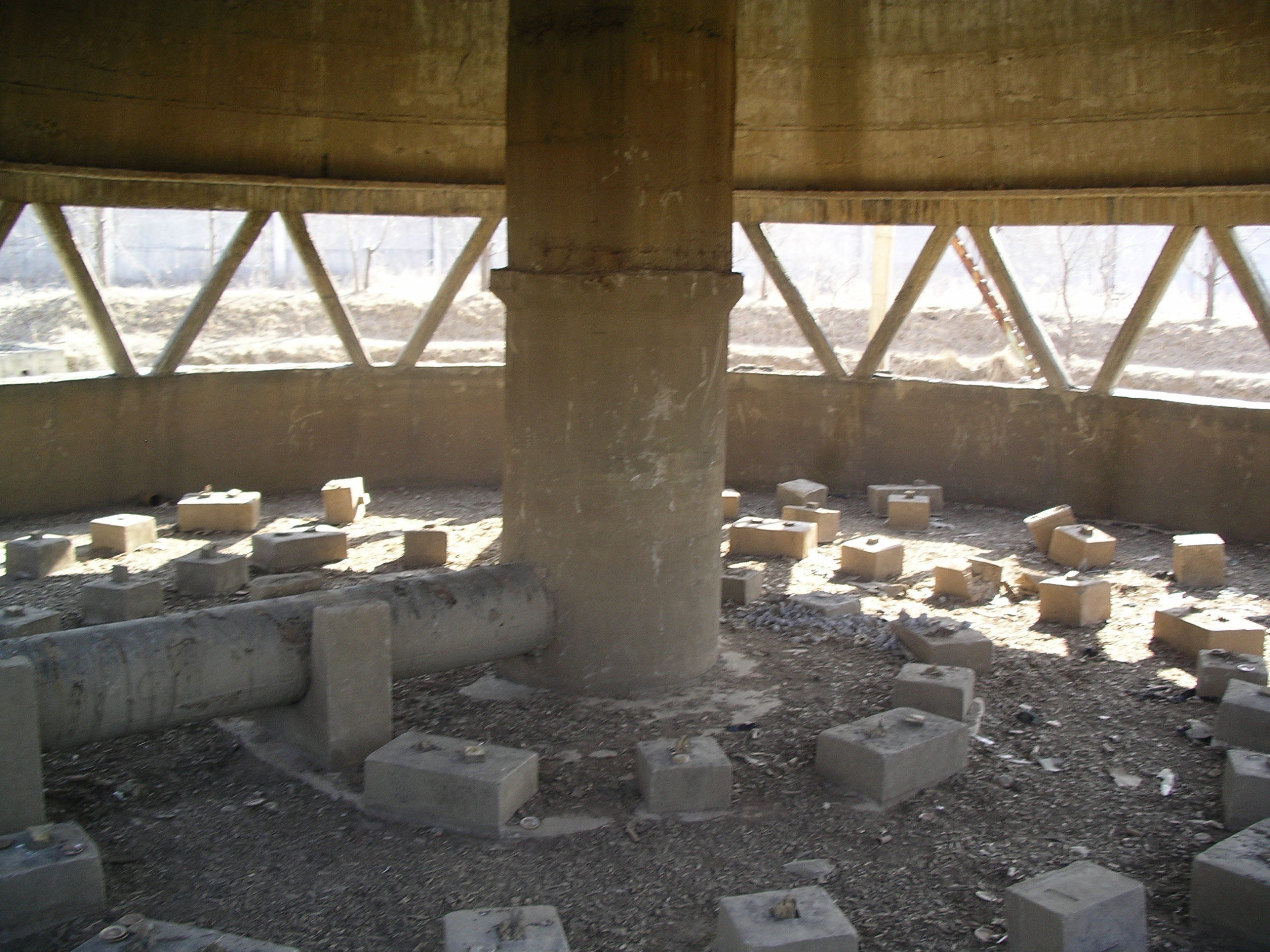
Empty inner structures that contained elaborate systems for operation of the cooling tower.
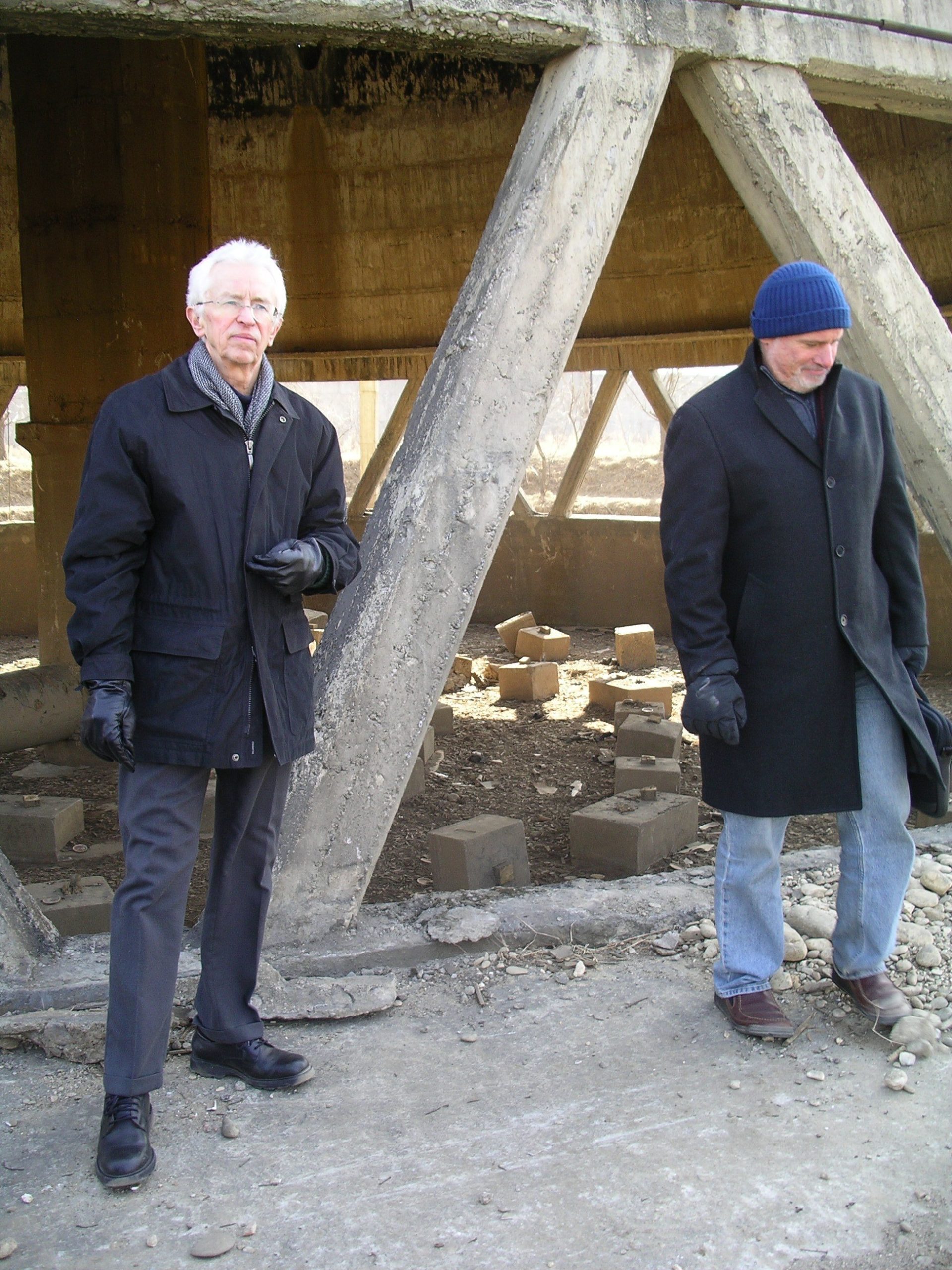
Hecker (left) and Joel Wit at cooling tower.
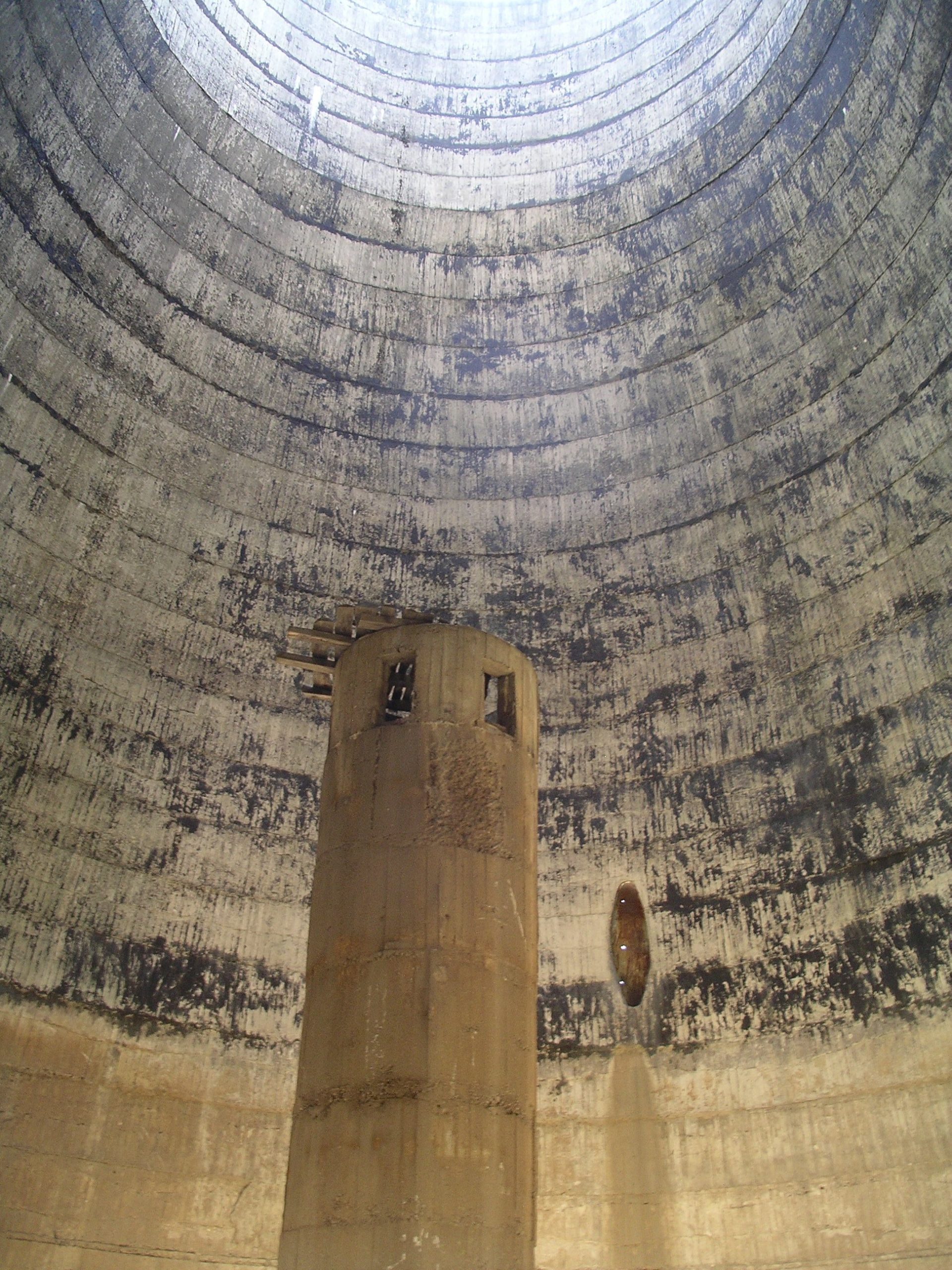
Evidence of disablement in reactor cooling tower. Equipment has been removed.
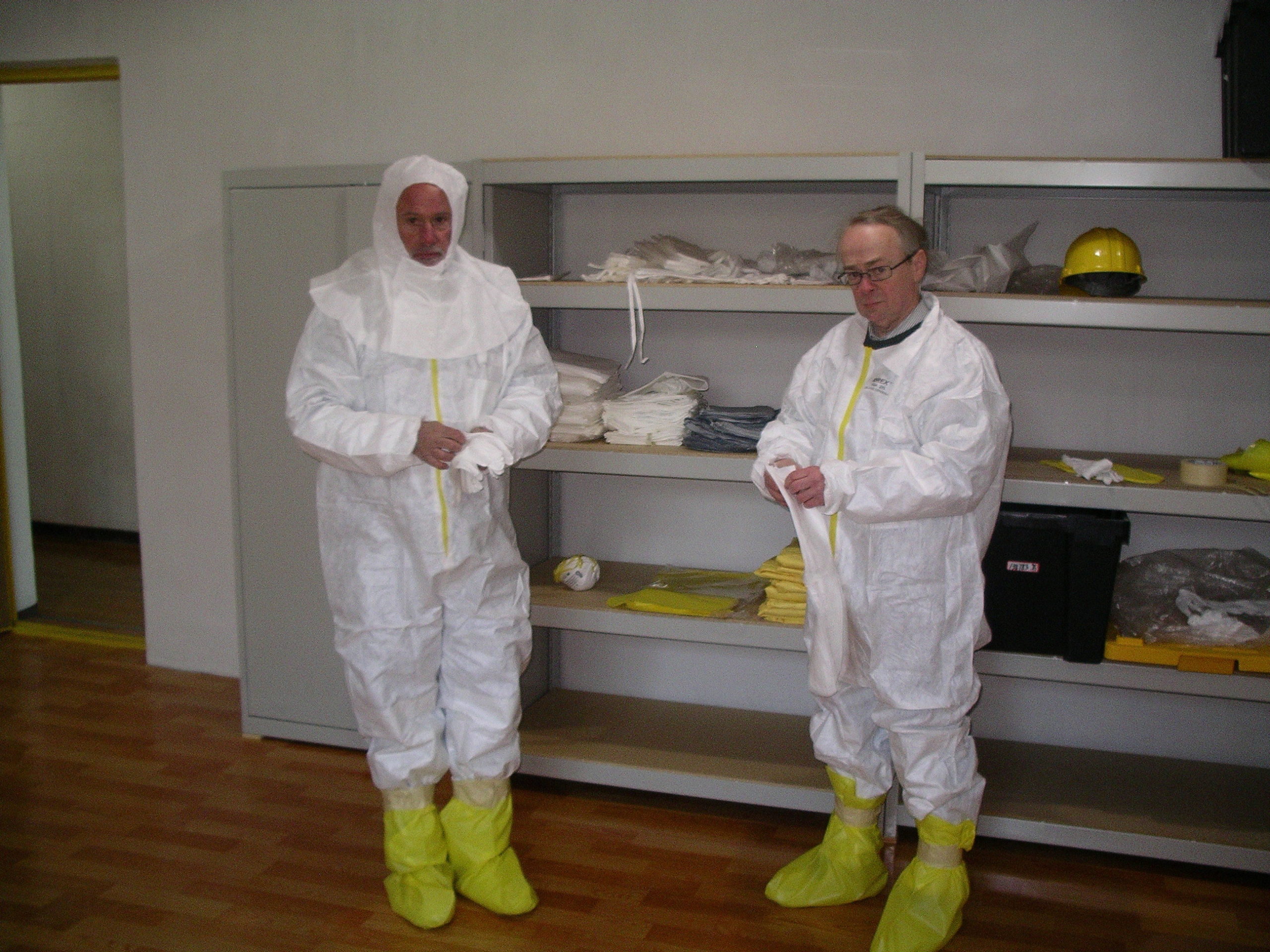
A new dress code in Yongbyon in 2008. Wit (left) and Keith Luse in American supplied anti-contamination dress.
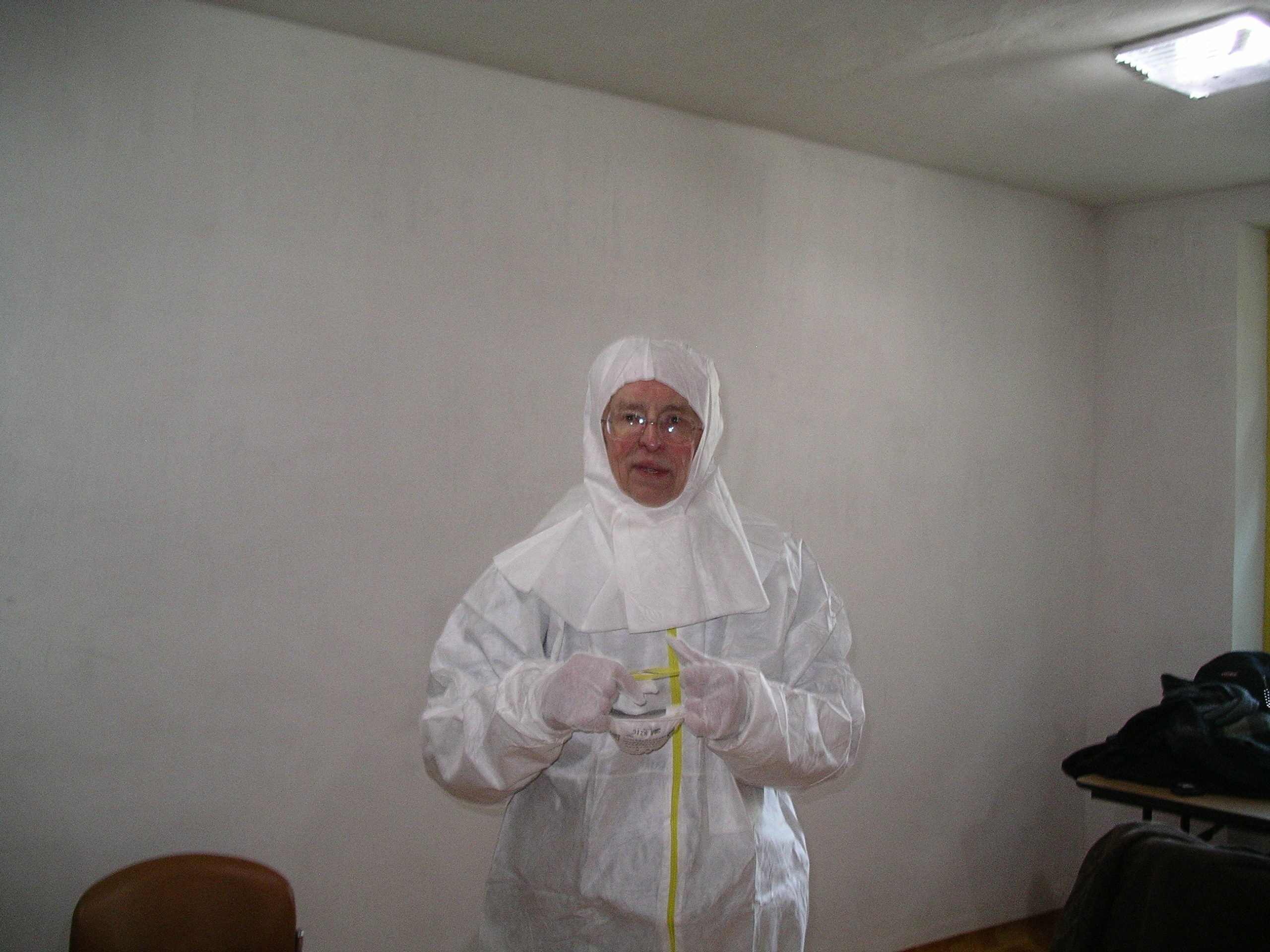
Hecker in anti-C suit prepared to enter the Reprocessing Facility in Yongbyon.
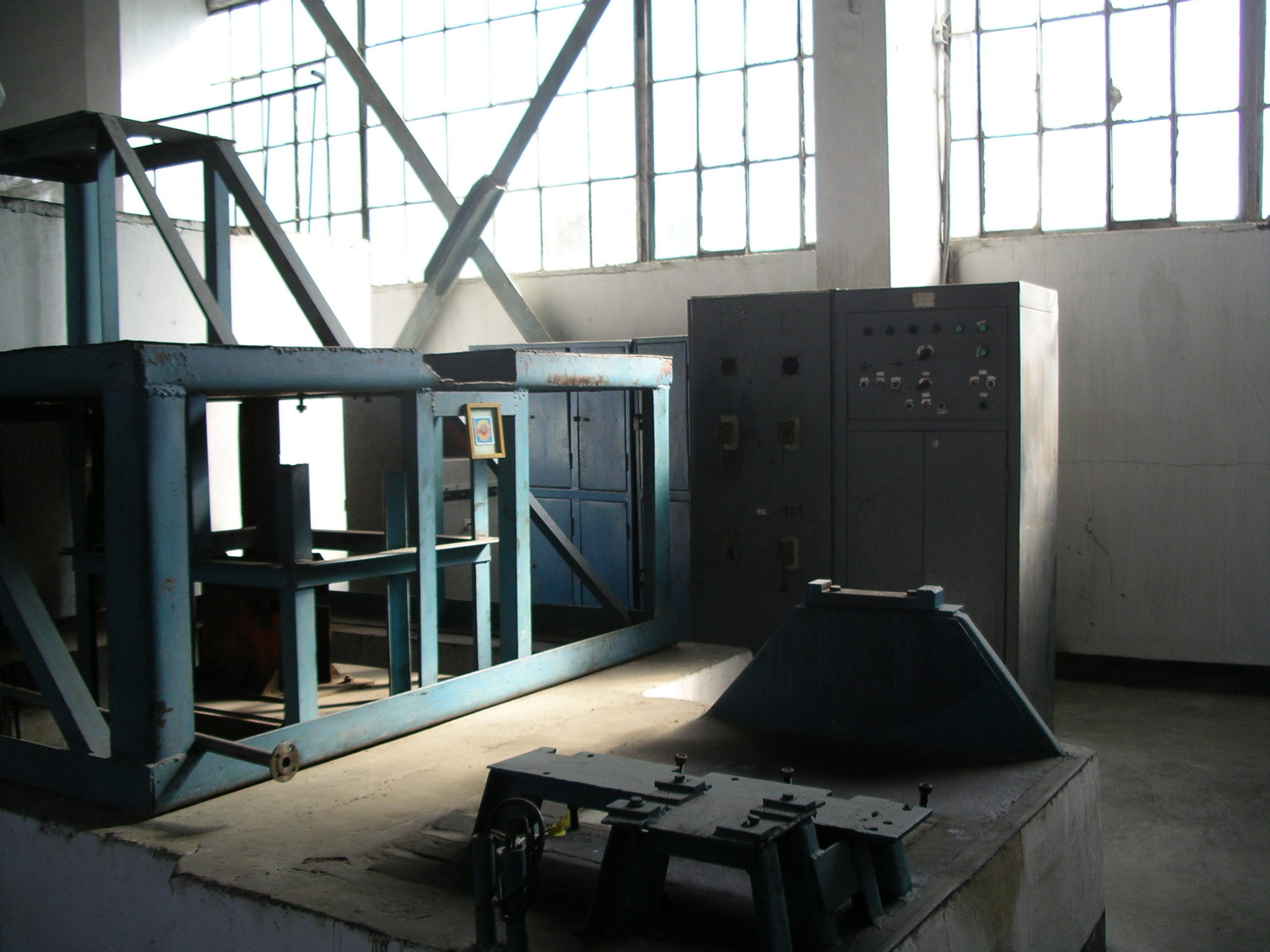
Reprocessing building (Radiochemical Laboratory).
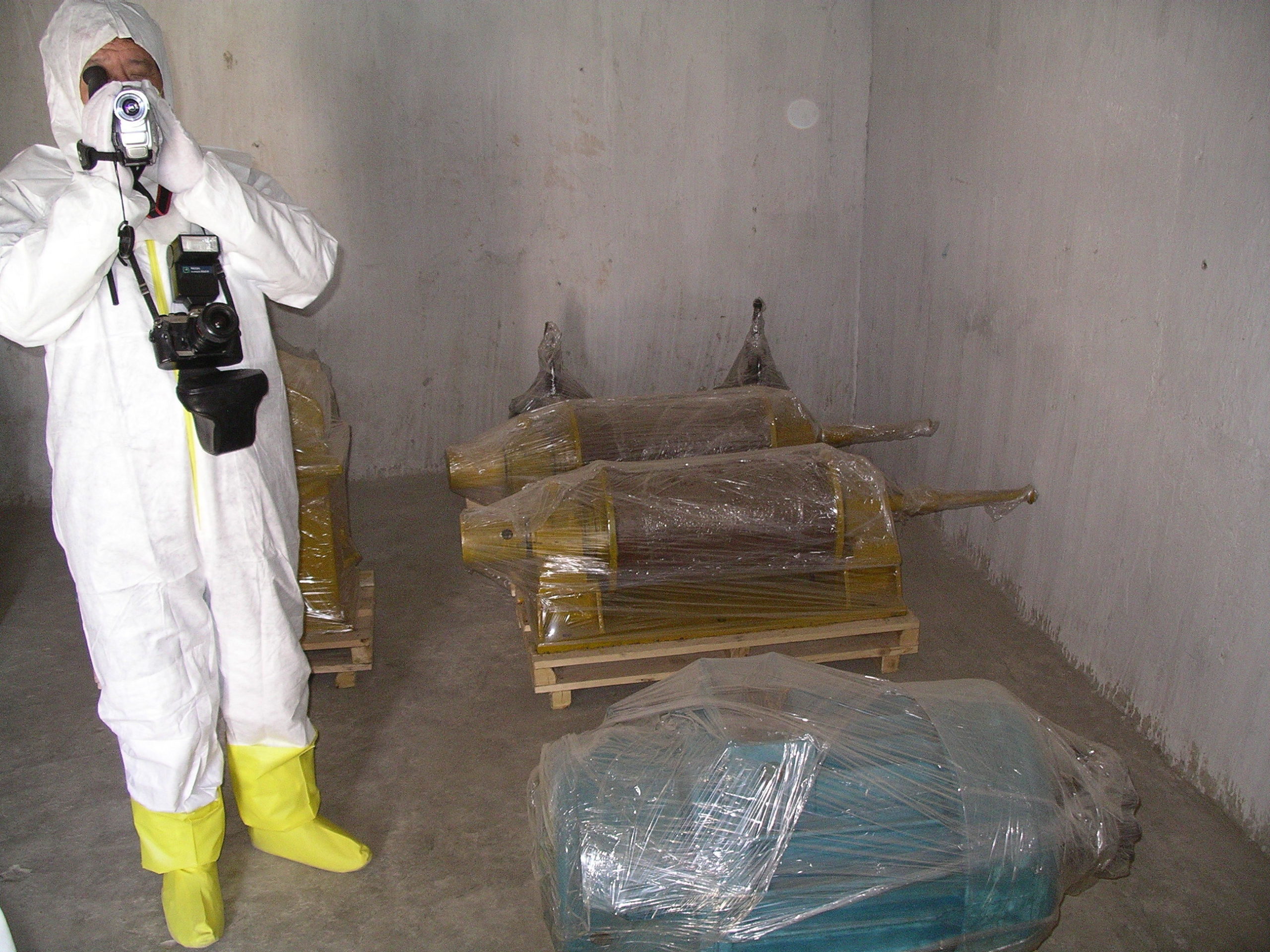
Reprocessing plant storage building. Storage of motors & documentation of the delegation visit.
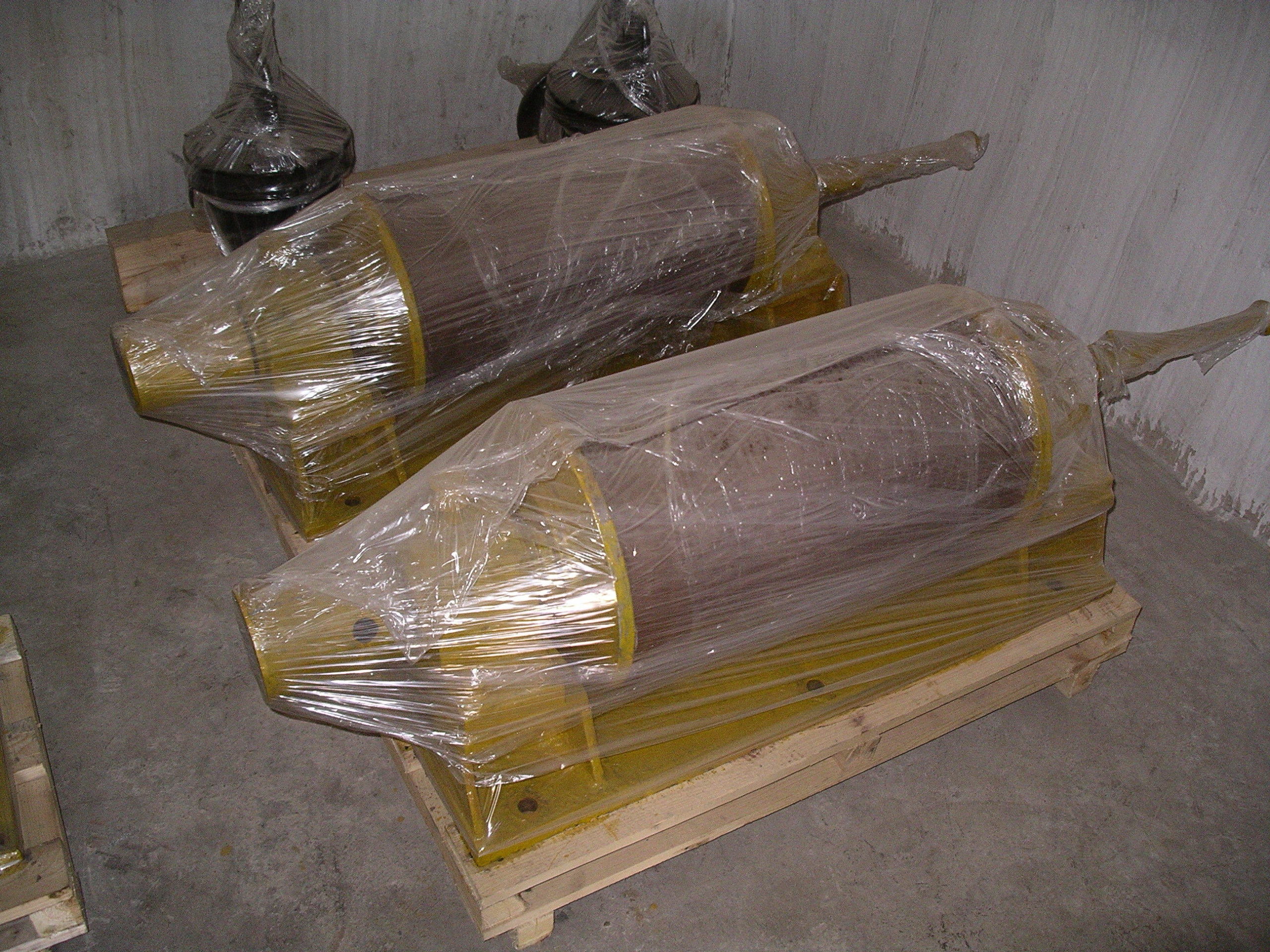
Reprocessing plant storage building. Storage of motors.
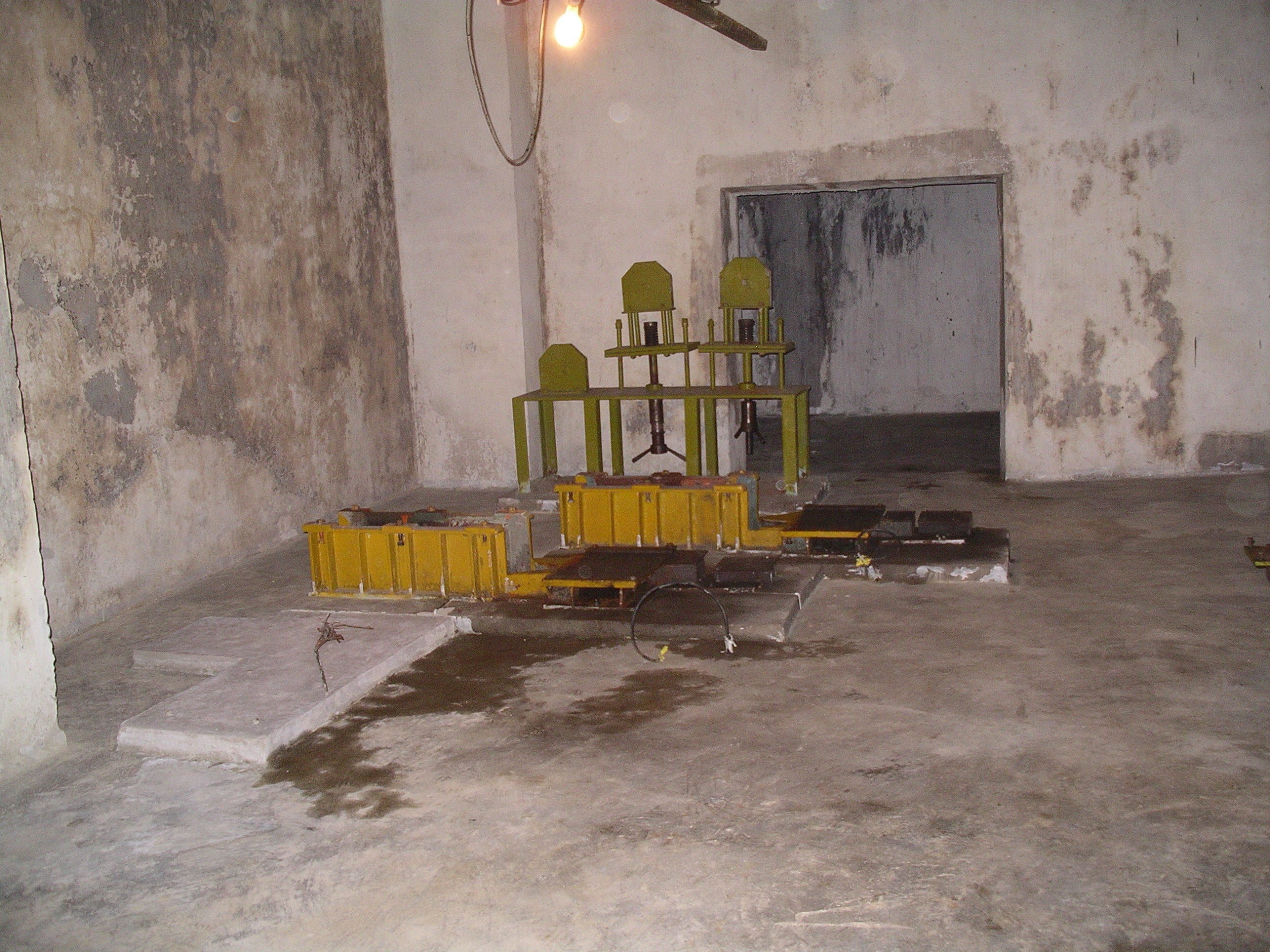
-1 level of Reprocessing Plant. Base plates for two fuel transfer cranes.
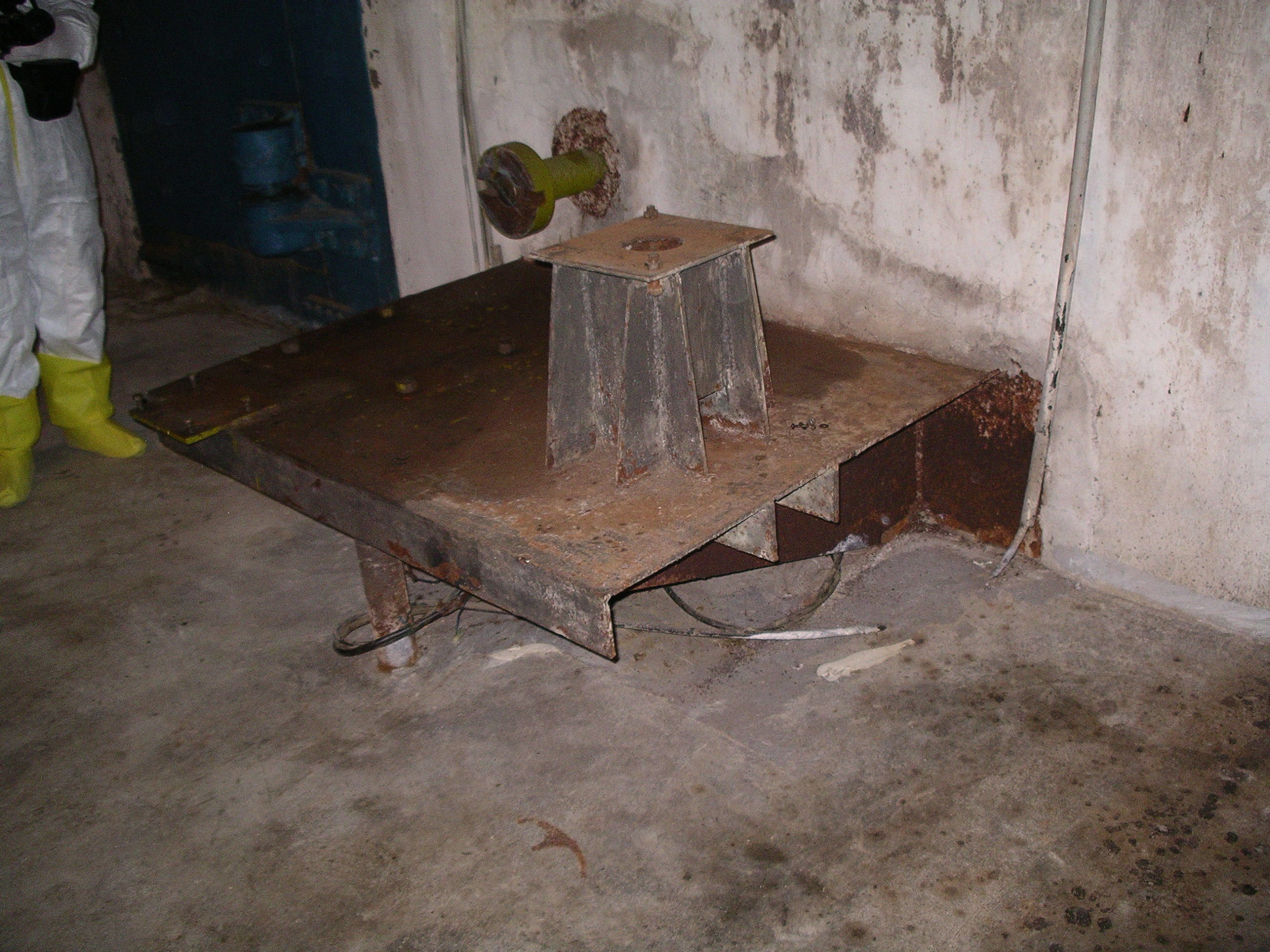
-1 level of Reprocessing Plant. Base for removed actuator for isolation door.
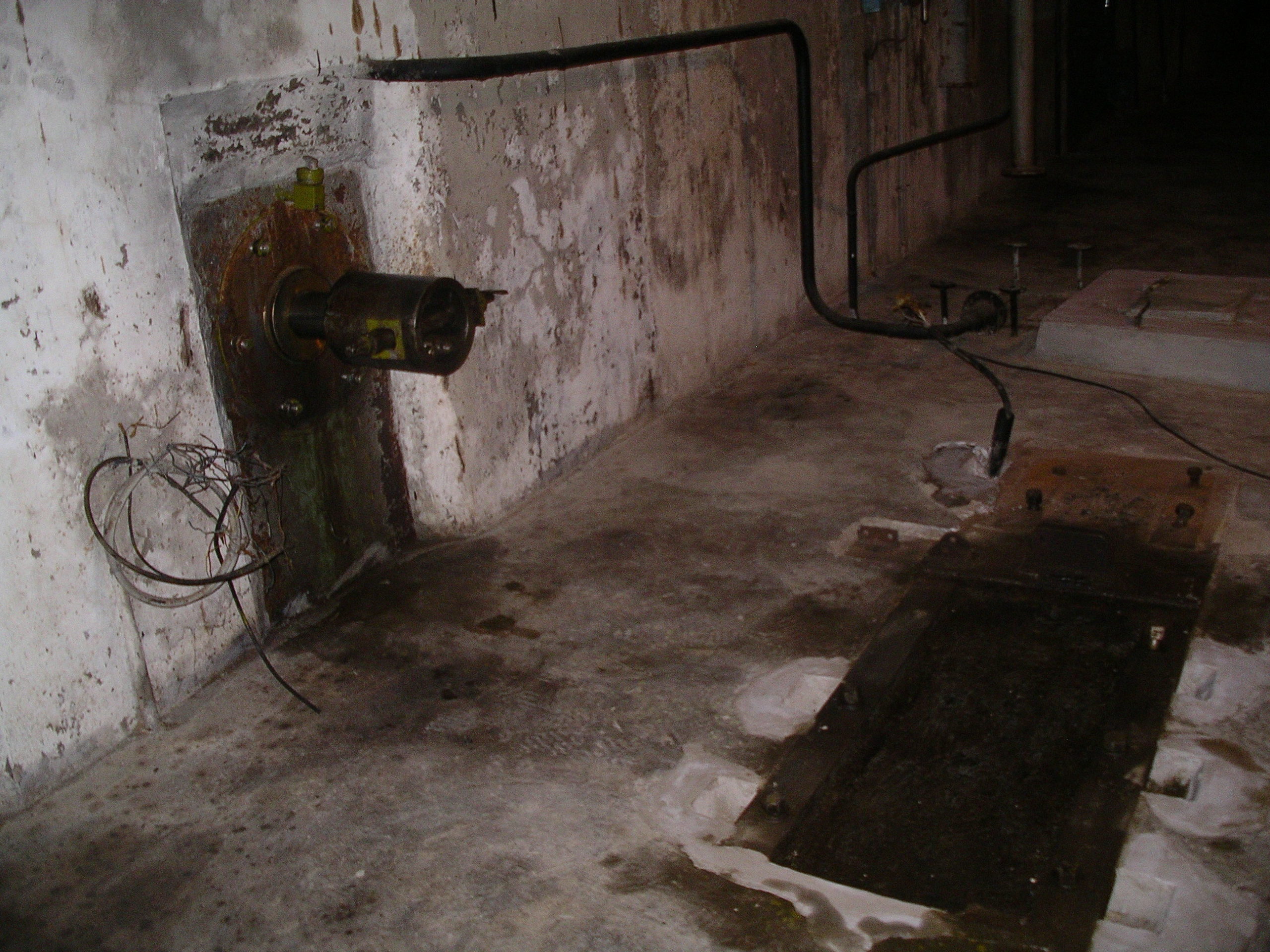
-1 level of Reprocessing Plant. Base plate and orifice for fuel shearing and slitting.
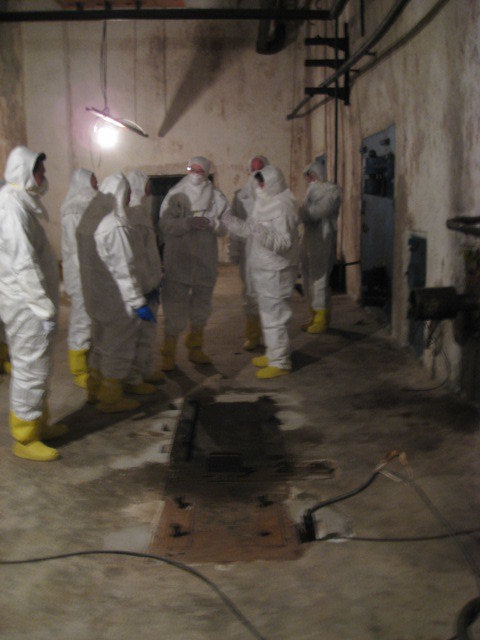
Siegfried Hecker (fourth from right) in front of area in which the drive mechanisms for the chopper of fuel cladding and the slitter for the fuel cladding were removed.
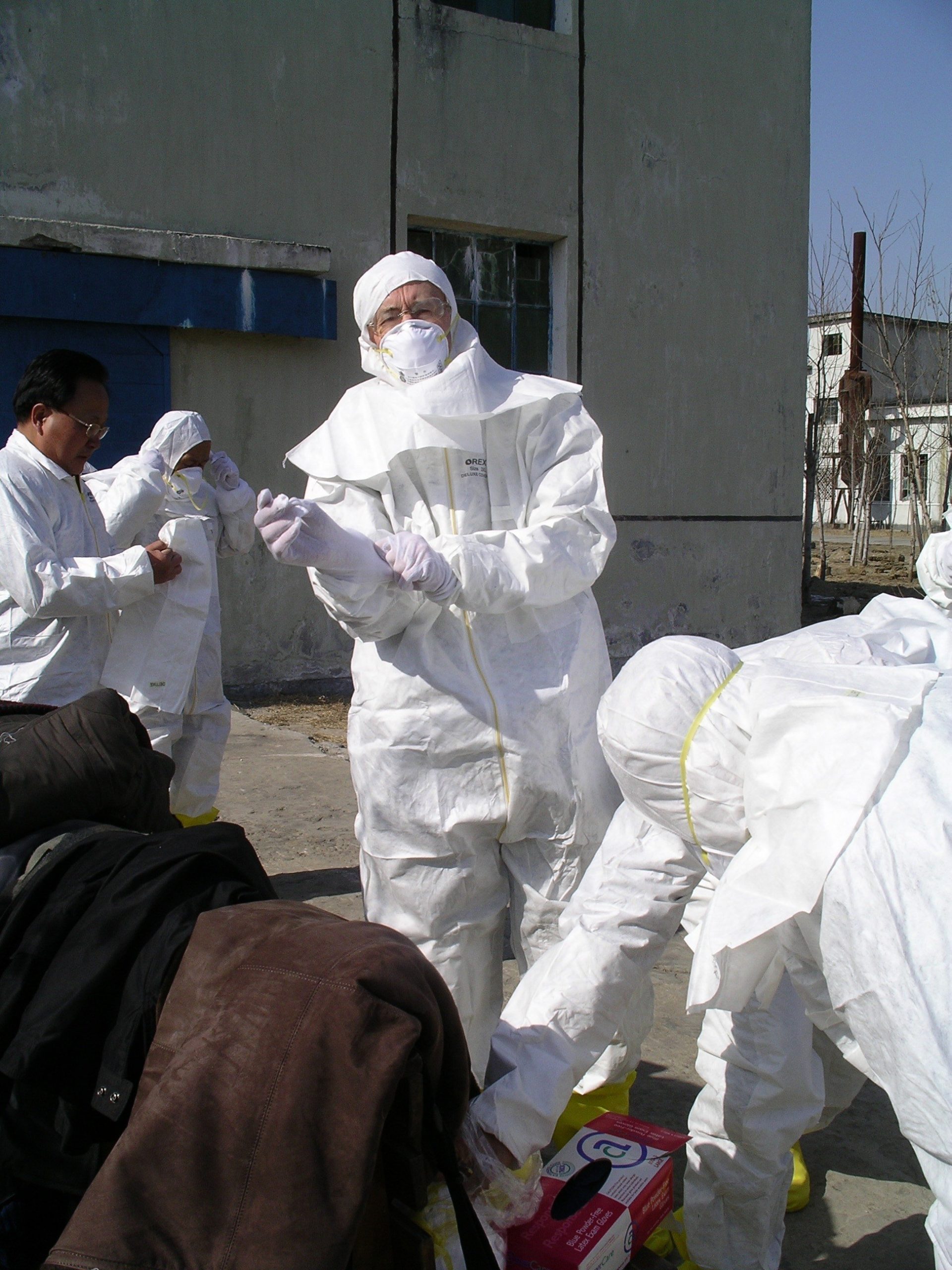
Hecker dressing up to enter Fuel Fabrication Facility.
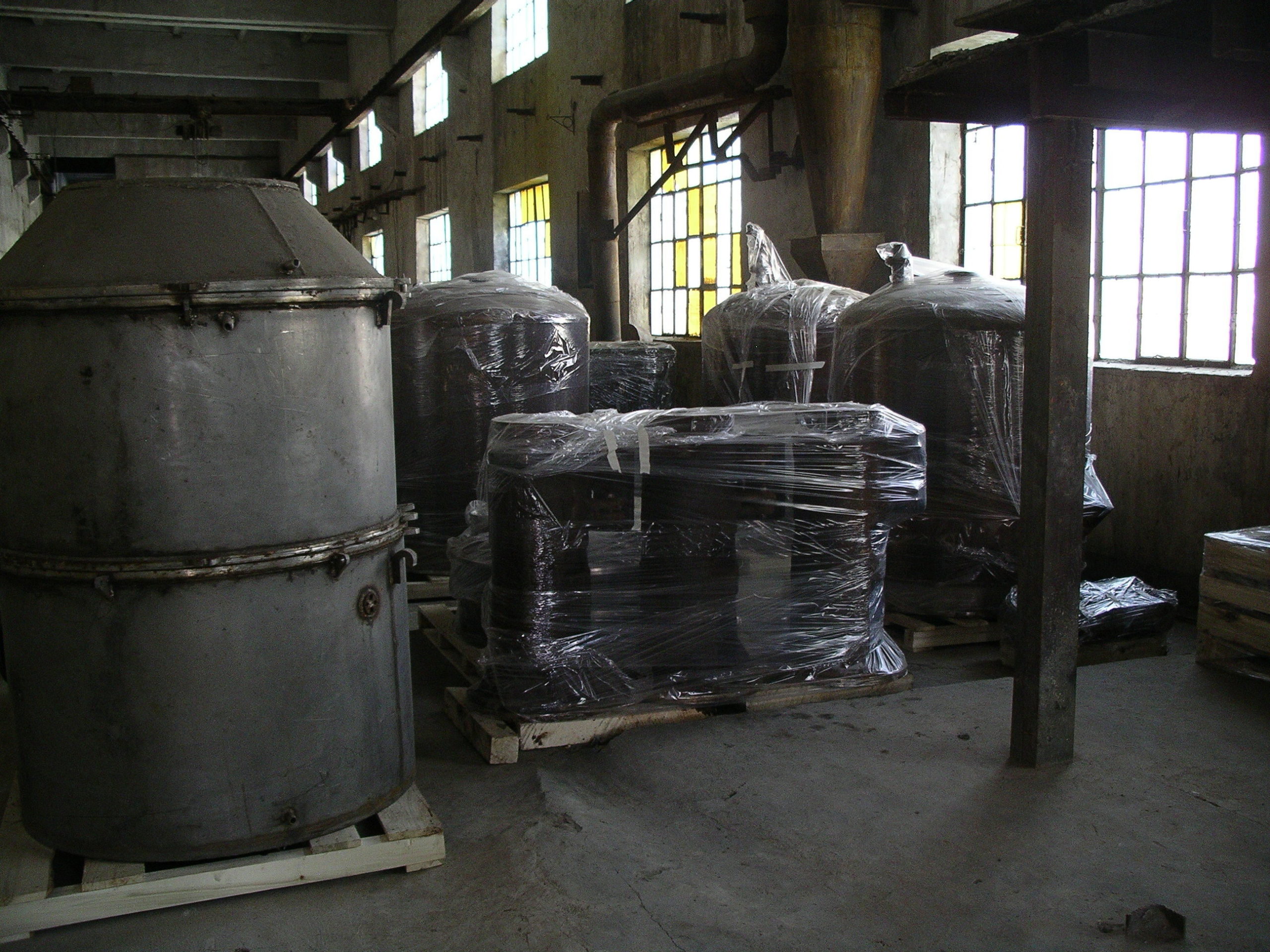
Building 4 of Fuel Fabrication Facility. Removal and storage of equipment.
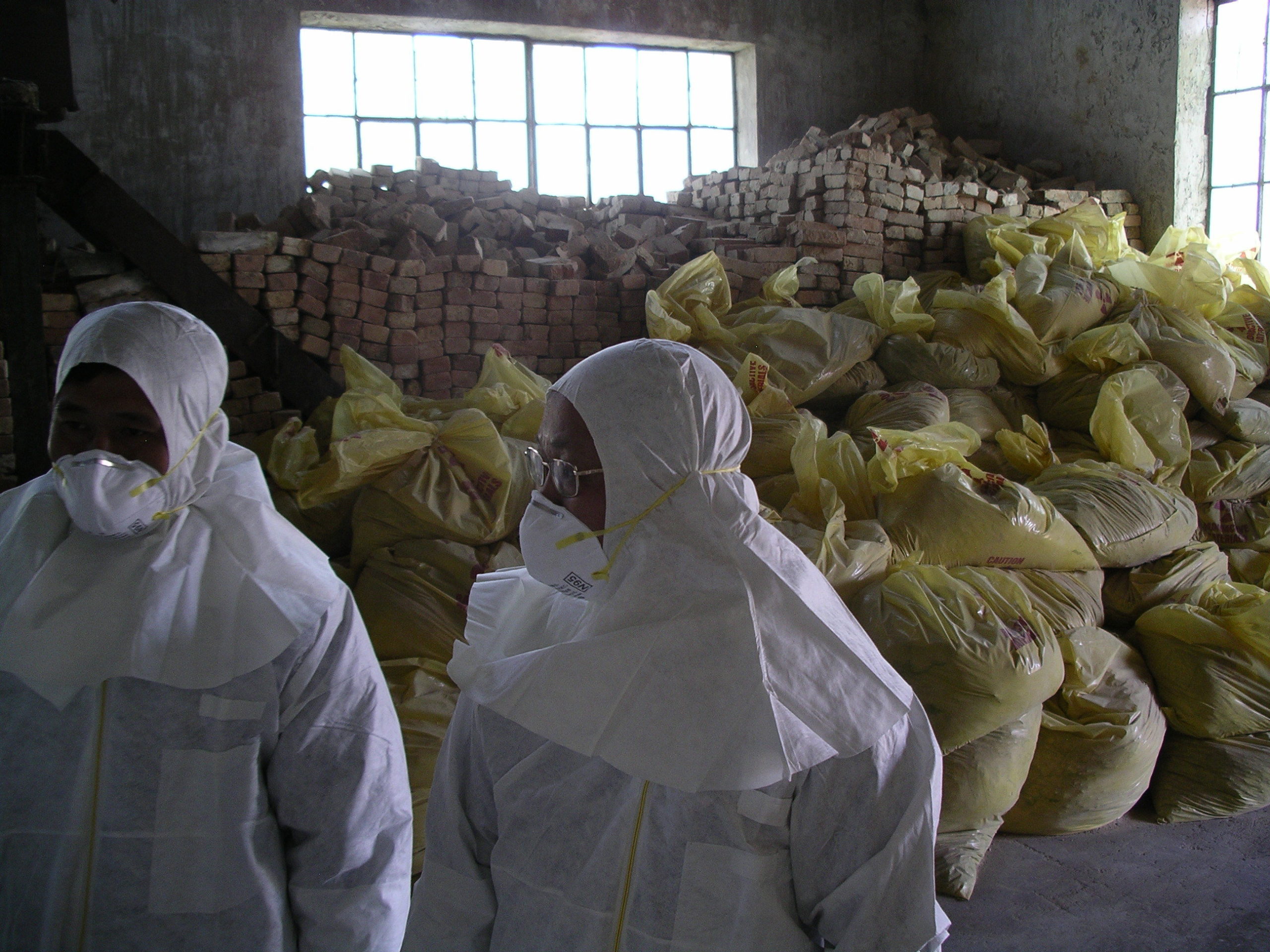
Two DPRK nuclear workers in front of insulating bricks and sand/mortar removed from the seven reduction furnaces.
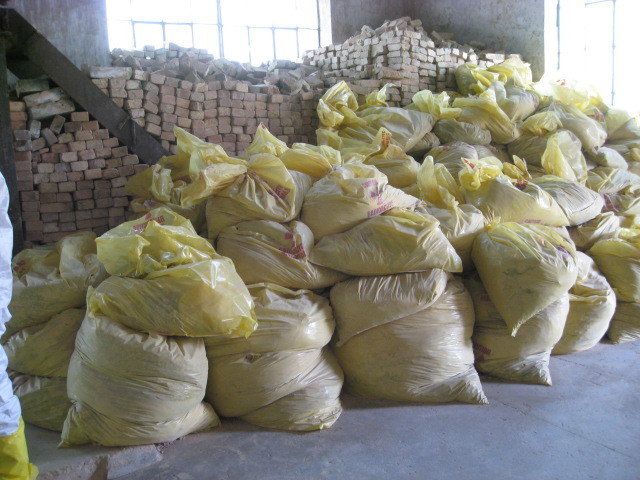
Stored sand/mortar (in bags) and refractory bricks.
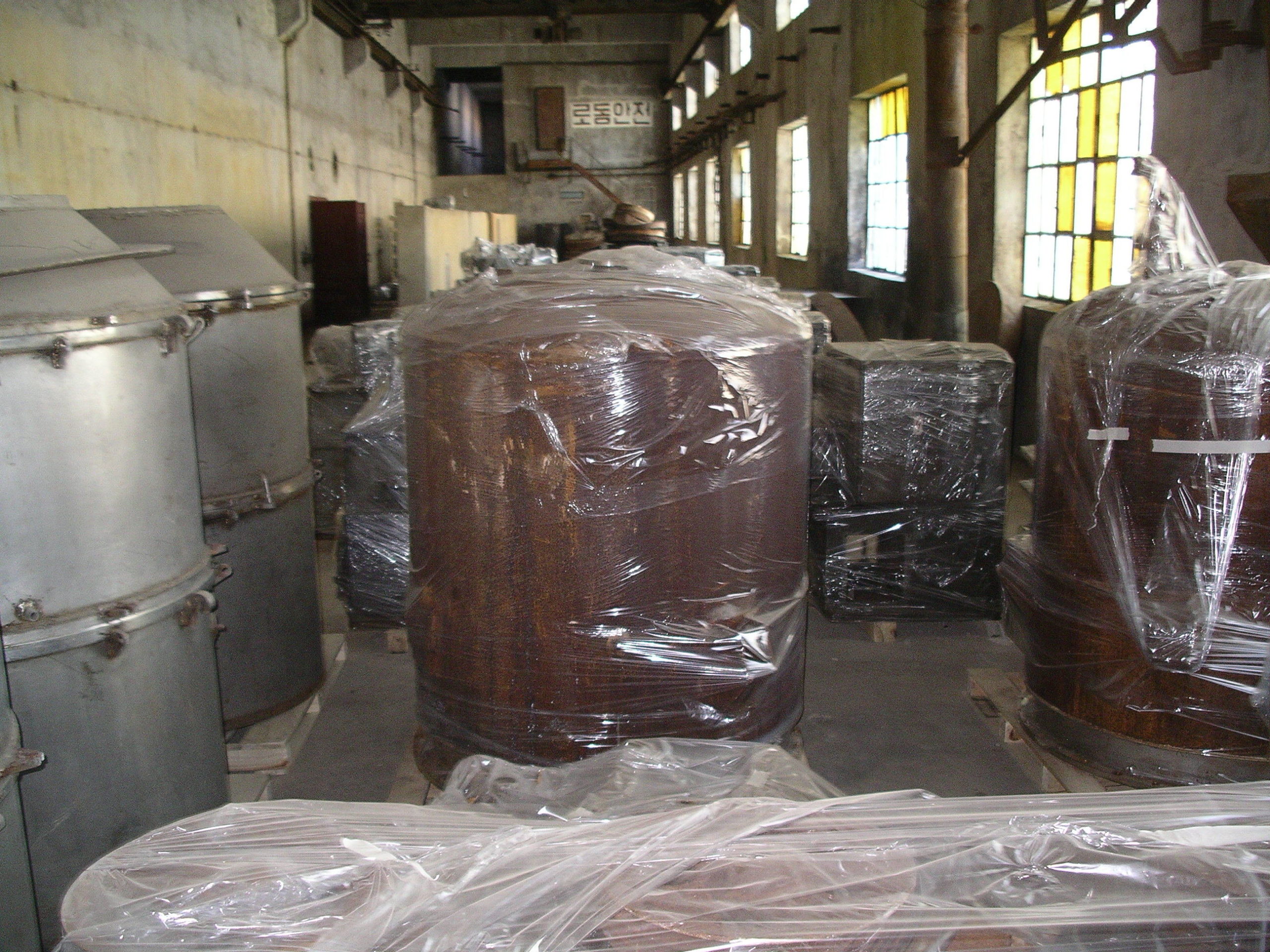
Storage of removed equipment.
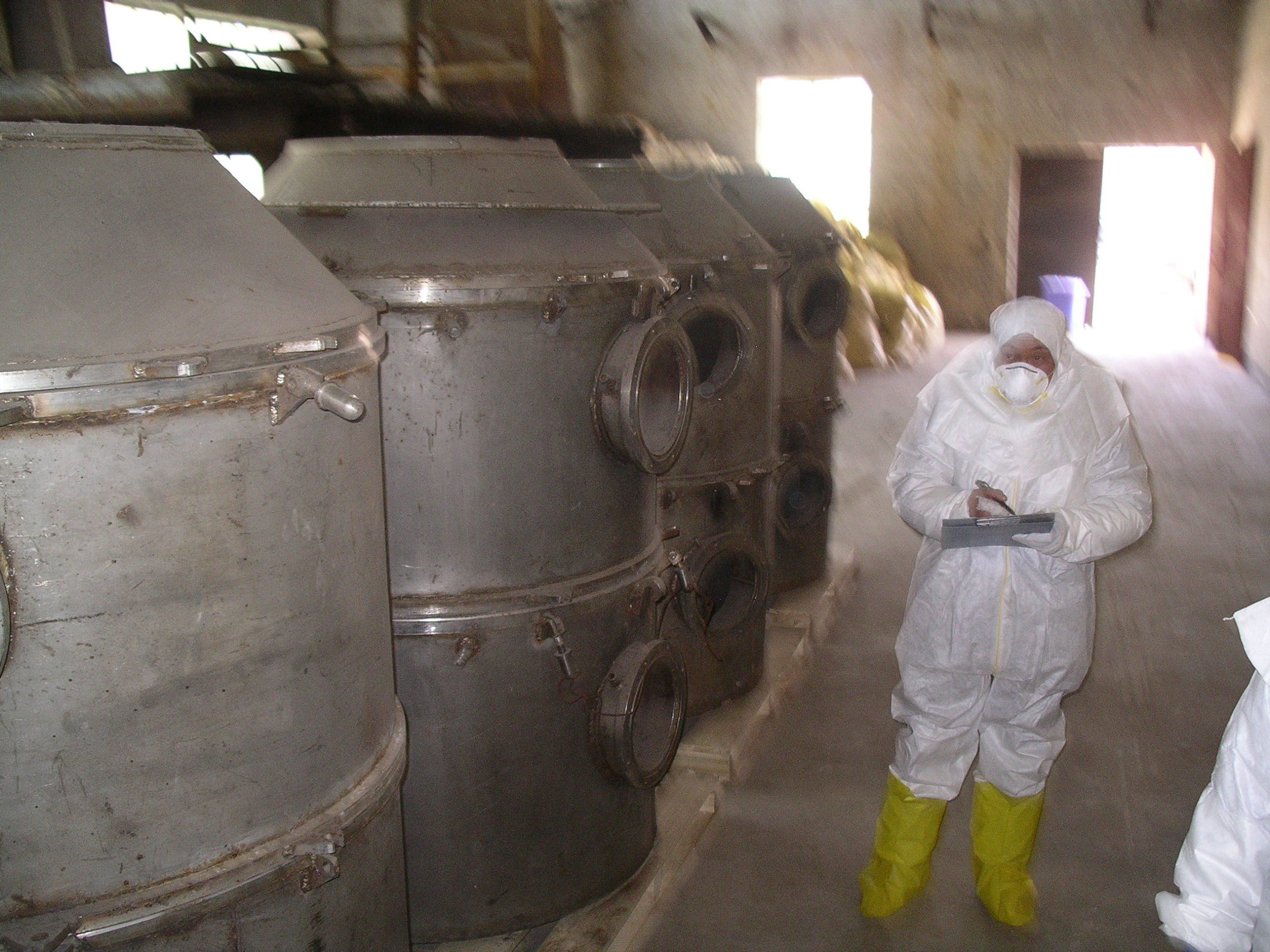
Storage of removed equipment.
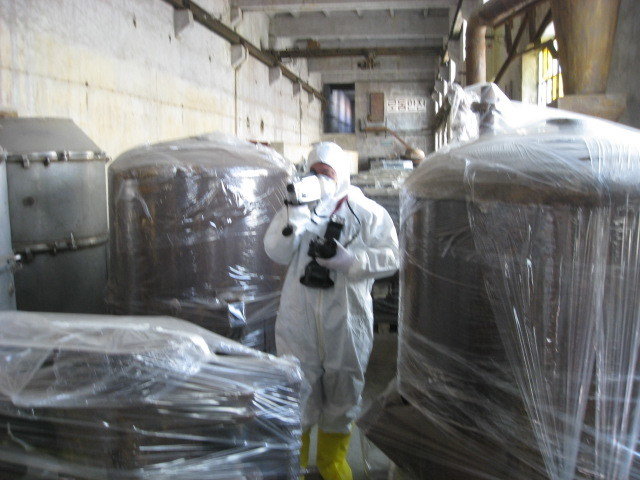
Disabled uranium metal production equipment as video documented during the delegation visit by Yongbyon technicians.
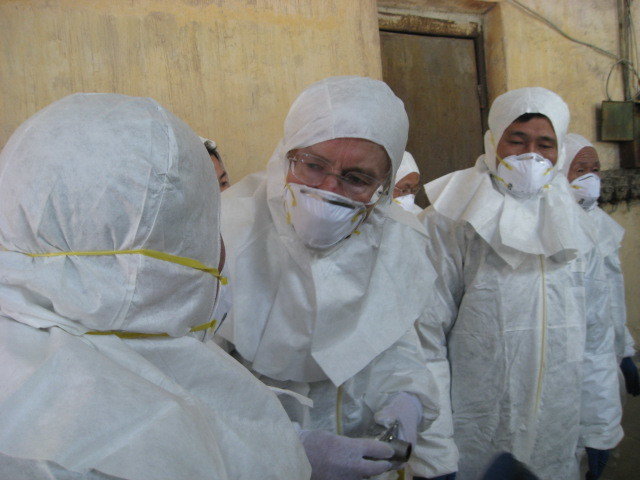
Hecker at Fuel Fabrication Facility.
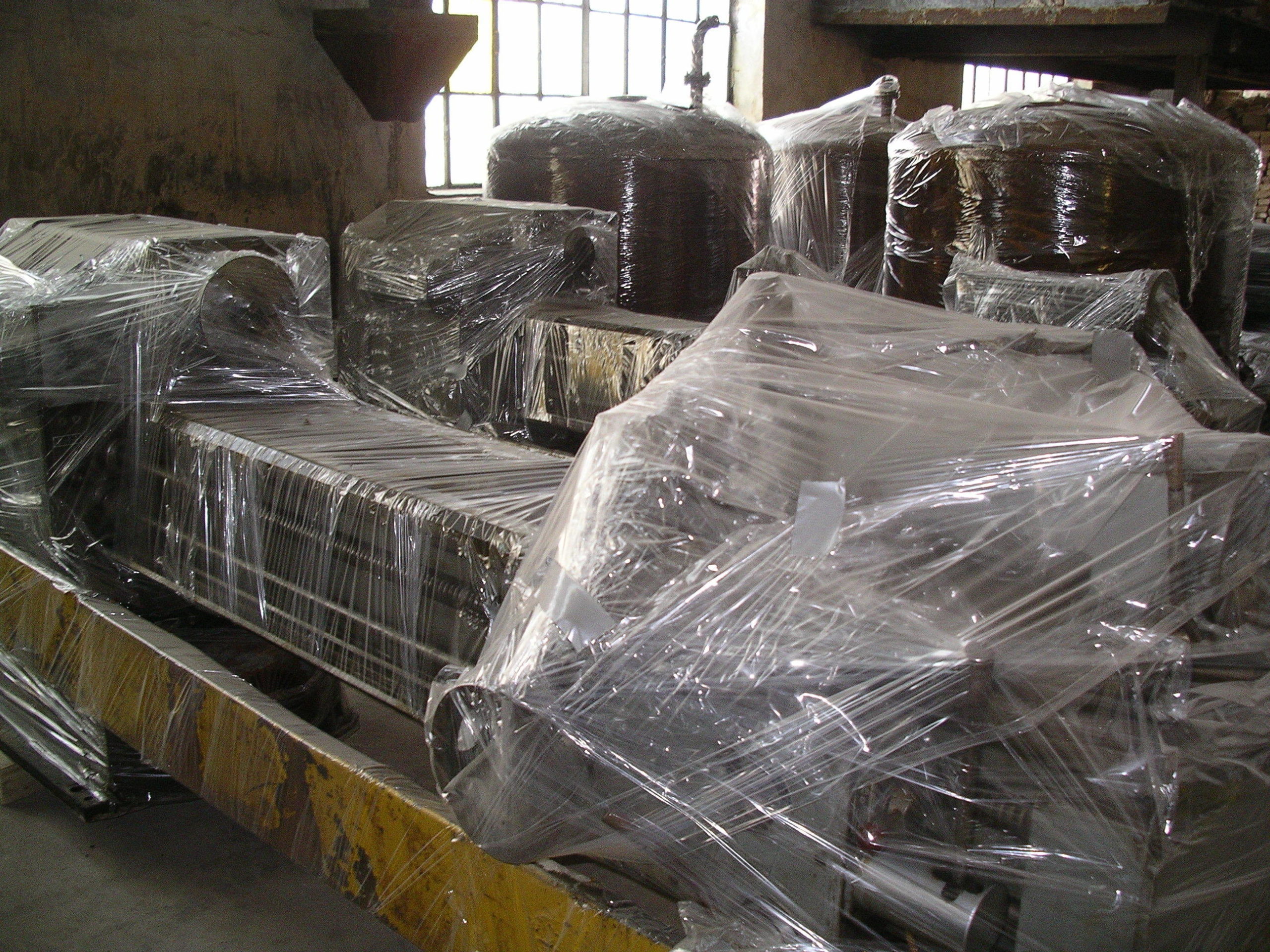
Fuel fabrication facility. Stored machining lathes.
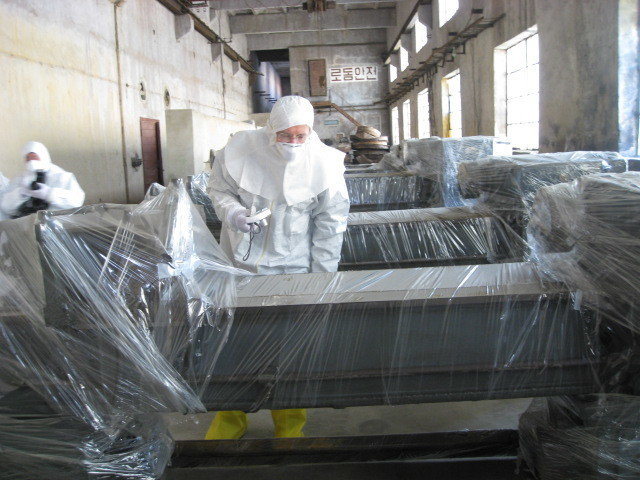
Hecker inspecting disabled and stored machine shop equipment in the Fuel Fabrication Facility. As discovered in a subsequent visit, this building was repurposed to house a modern centrifuge facility.
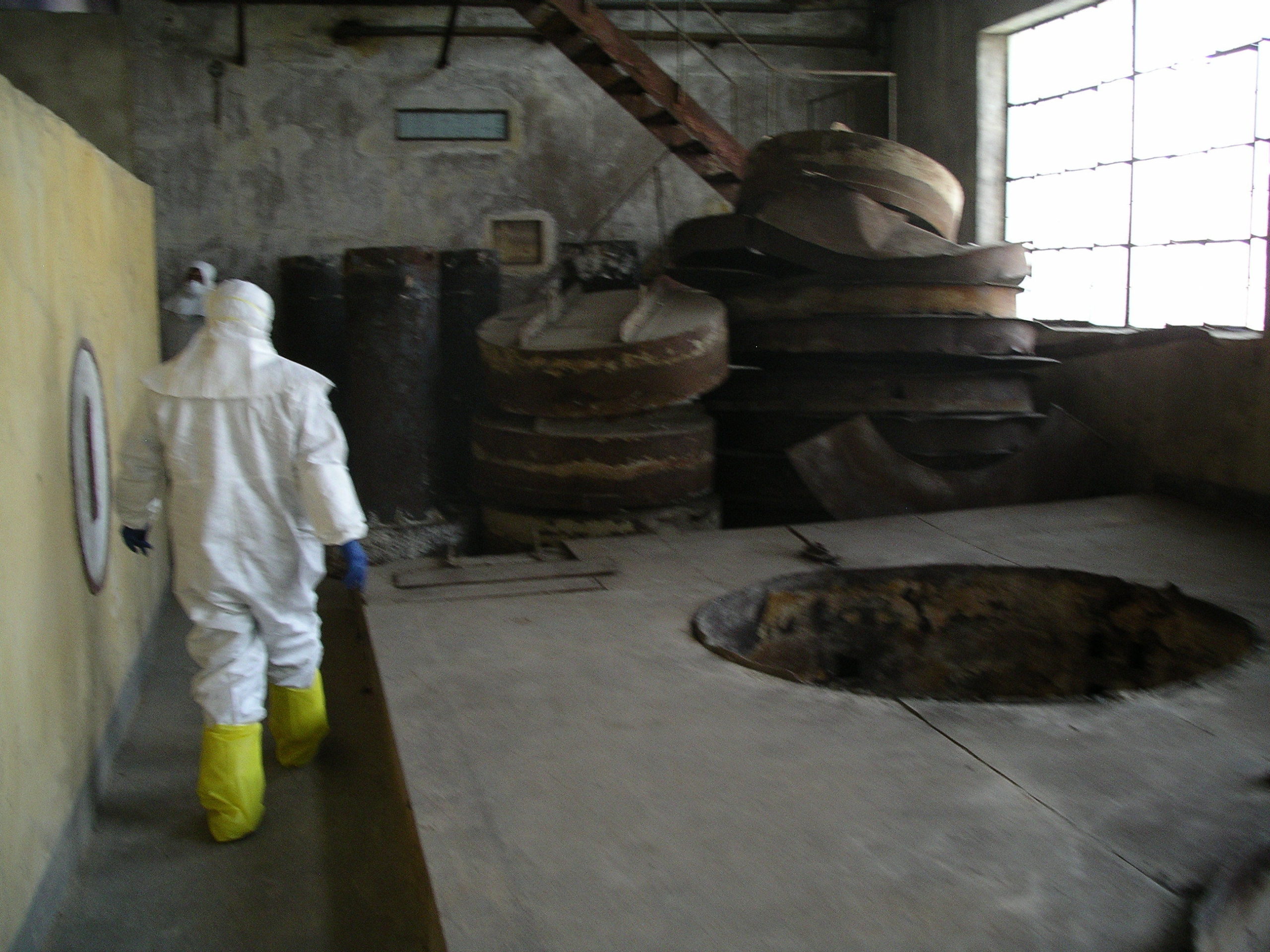
Building 1, Fuel fabrication facility. Uranium metal conversion furnaces removed.
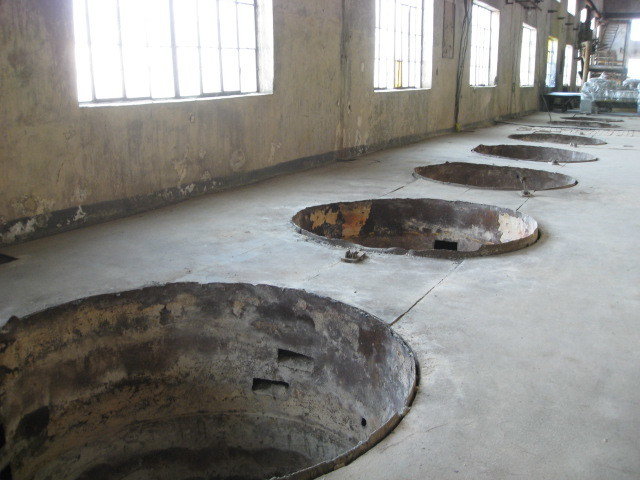
Building 1, Fuel fabrication facility. Uranium metal conversion furnaces removed.
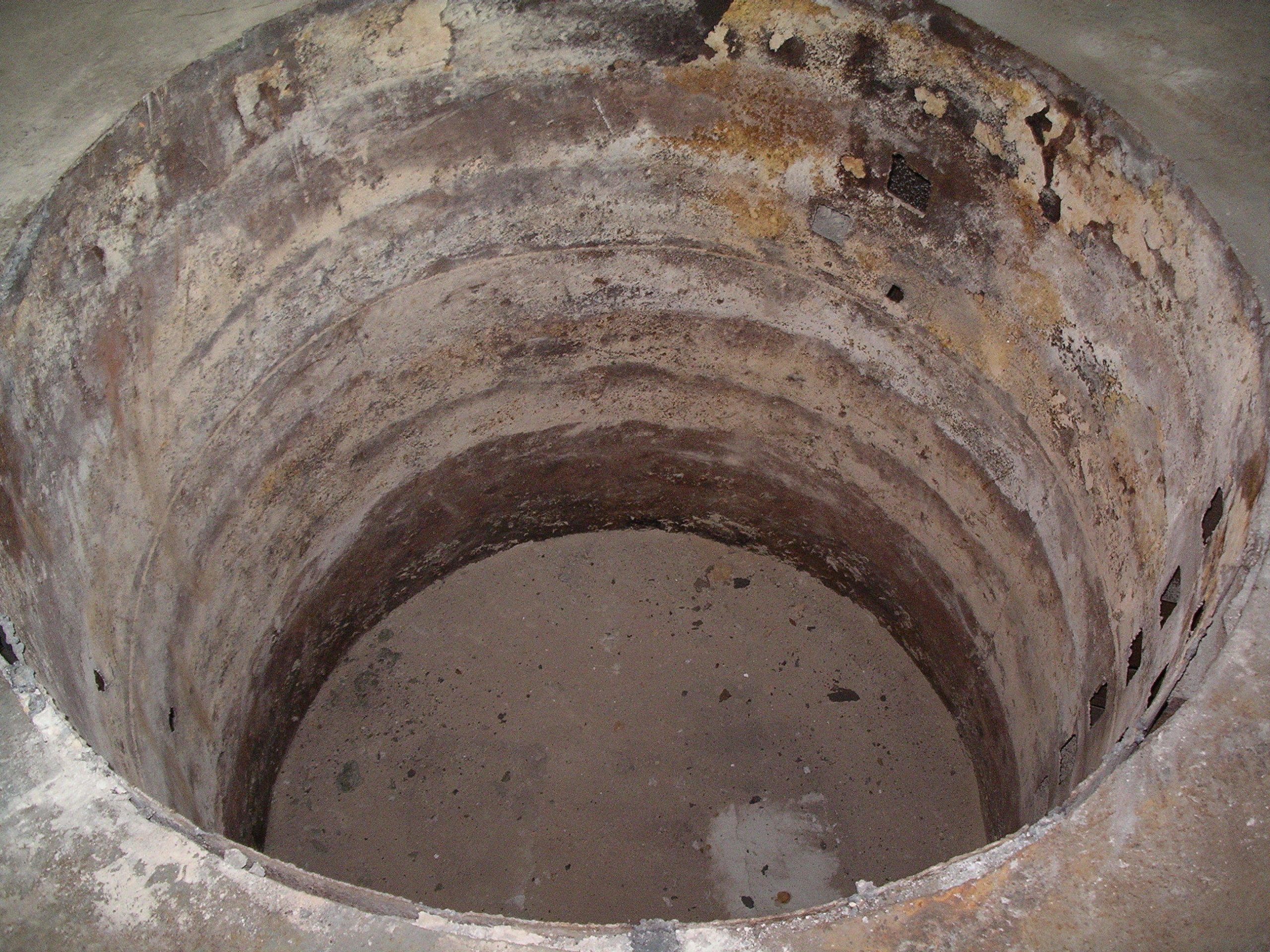
Disabled furnaces.
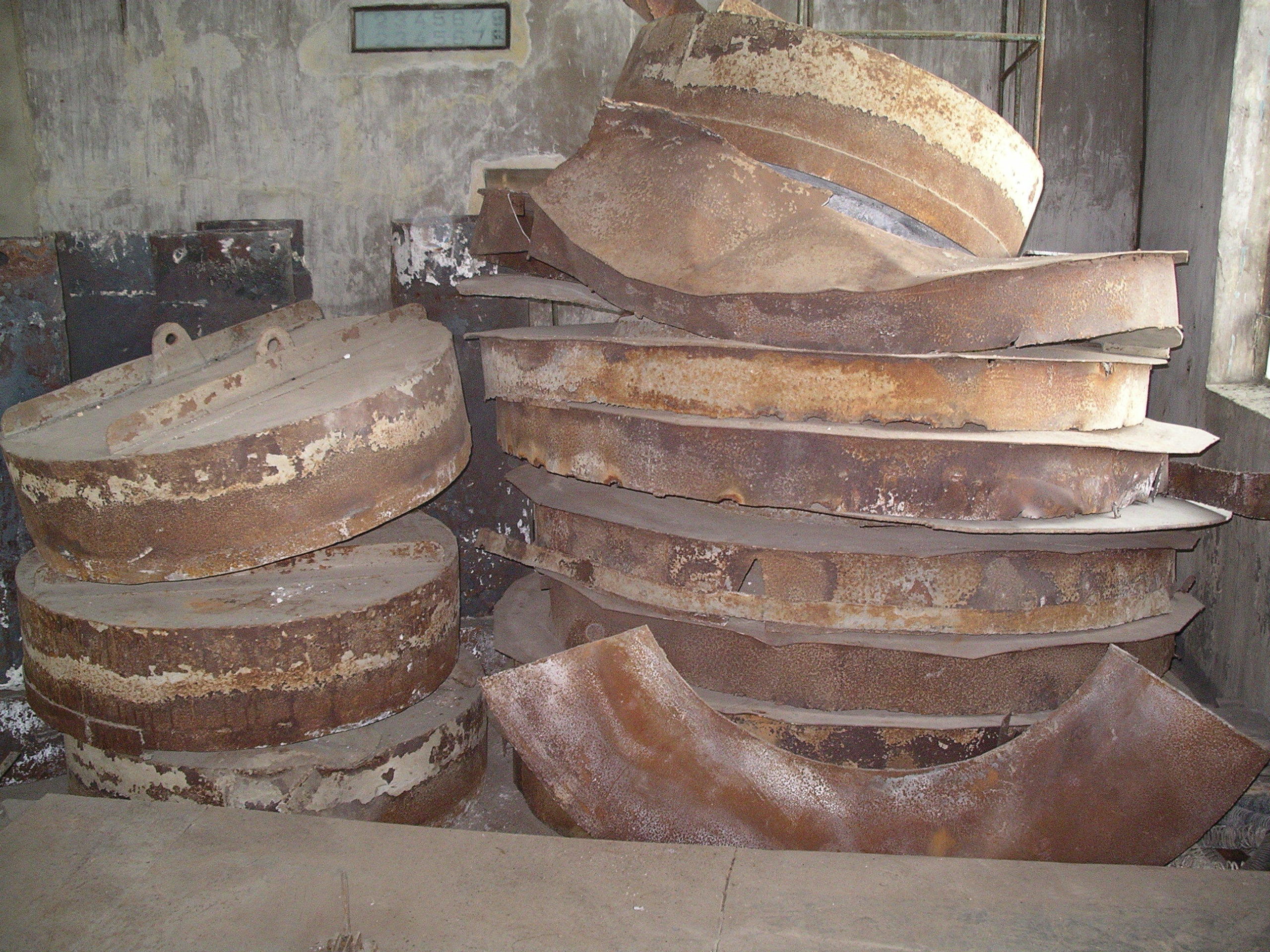
Disabled furnace components.
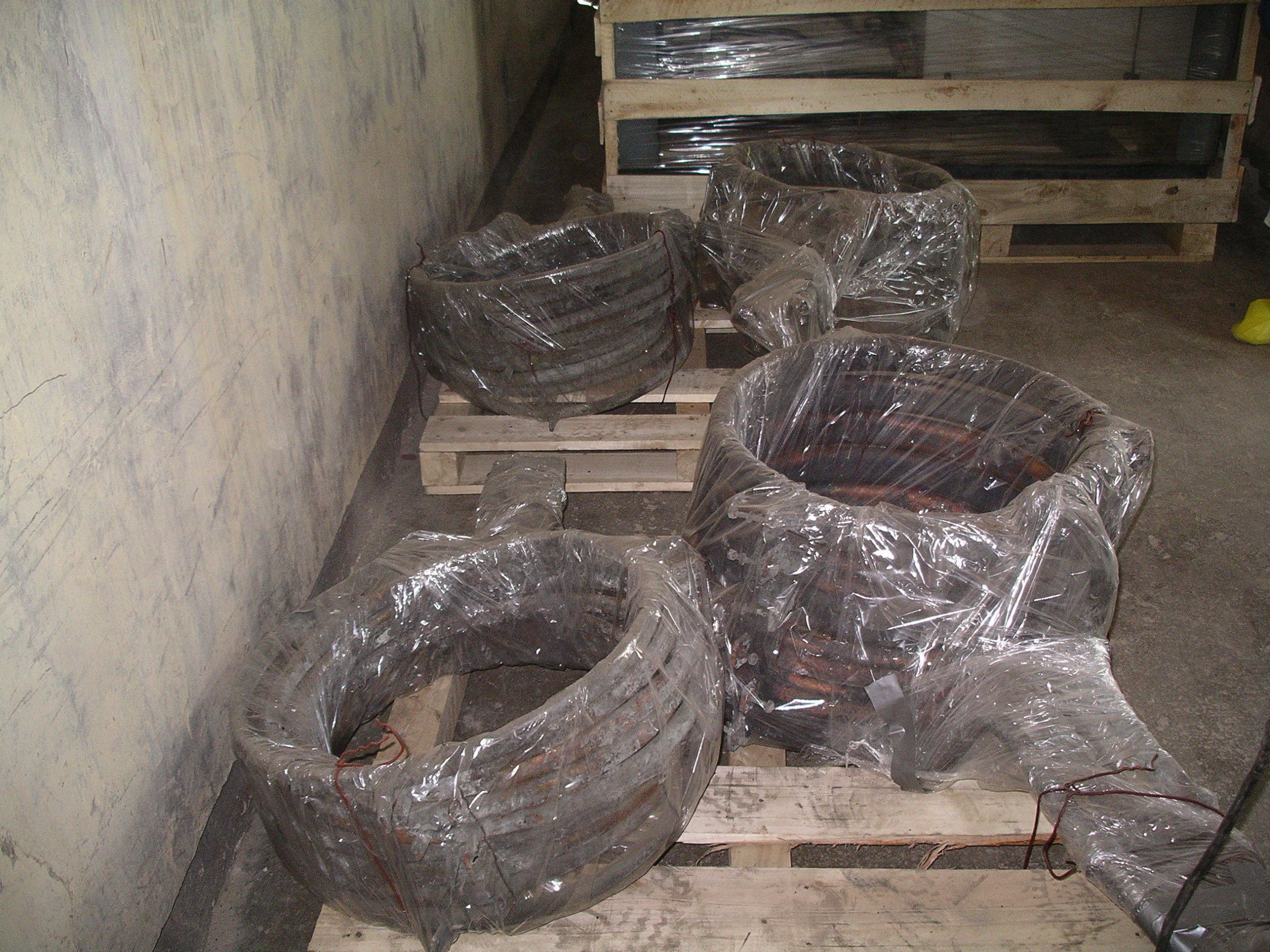
Storage of removed equipment.
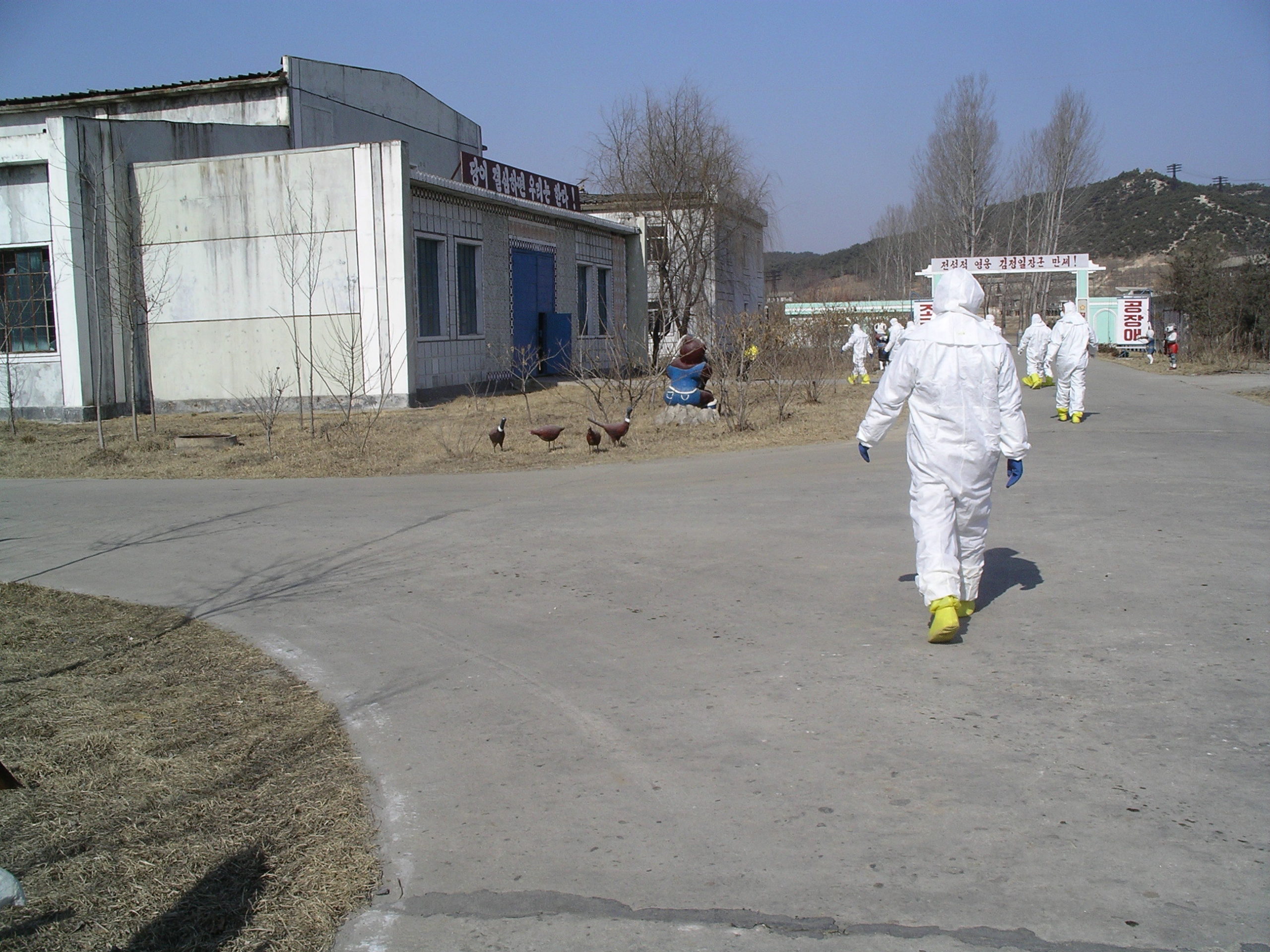
People walking outside in anticontamination suits.
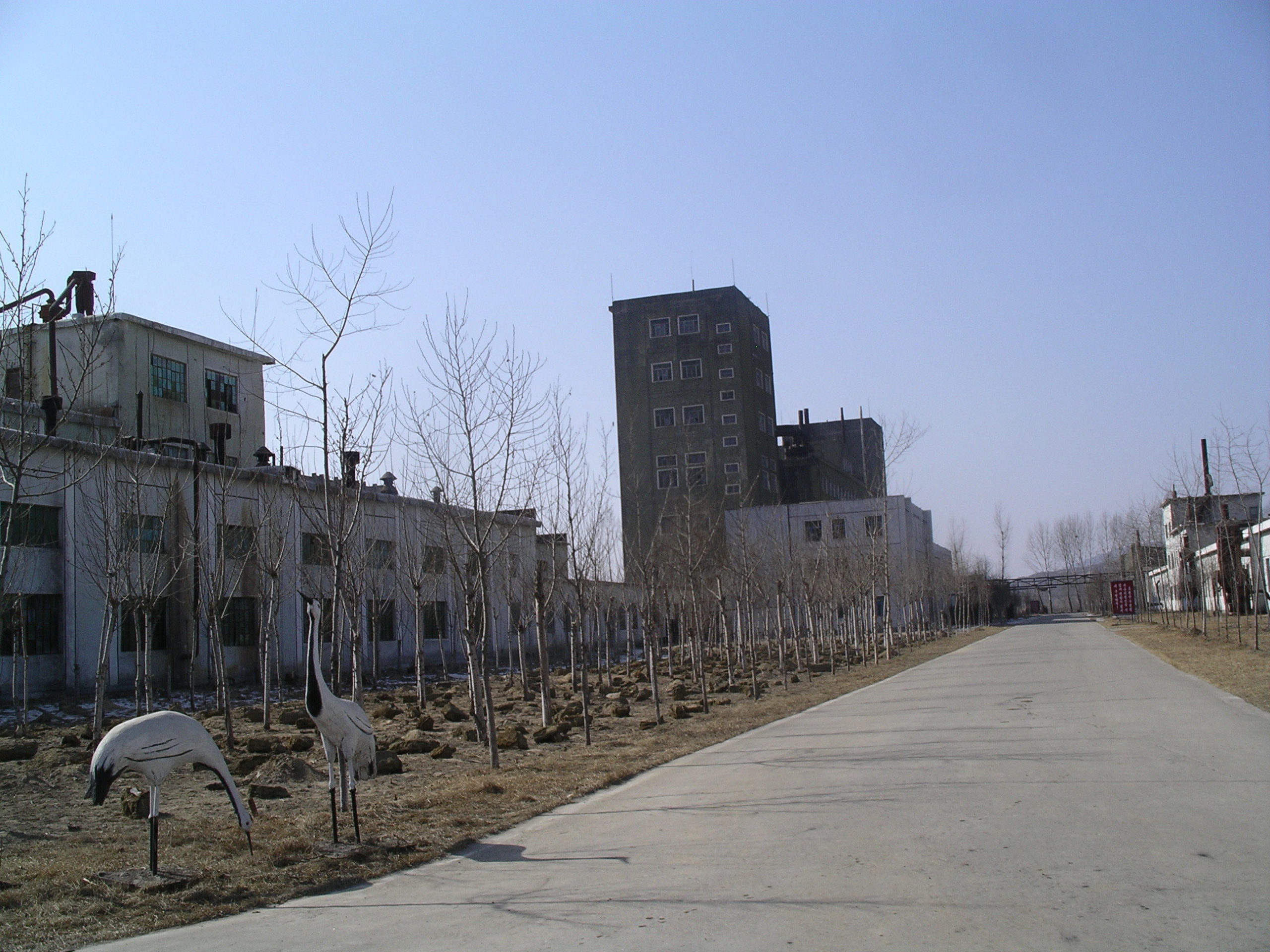
Fuel Fabrication Facility.
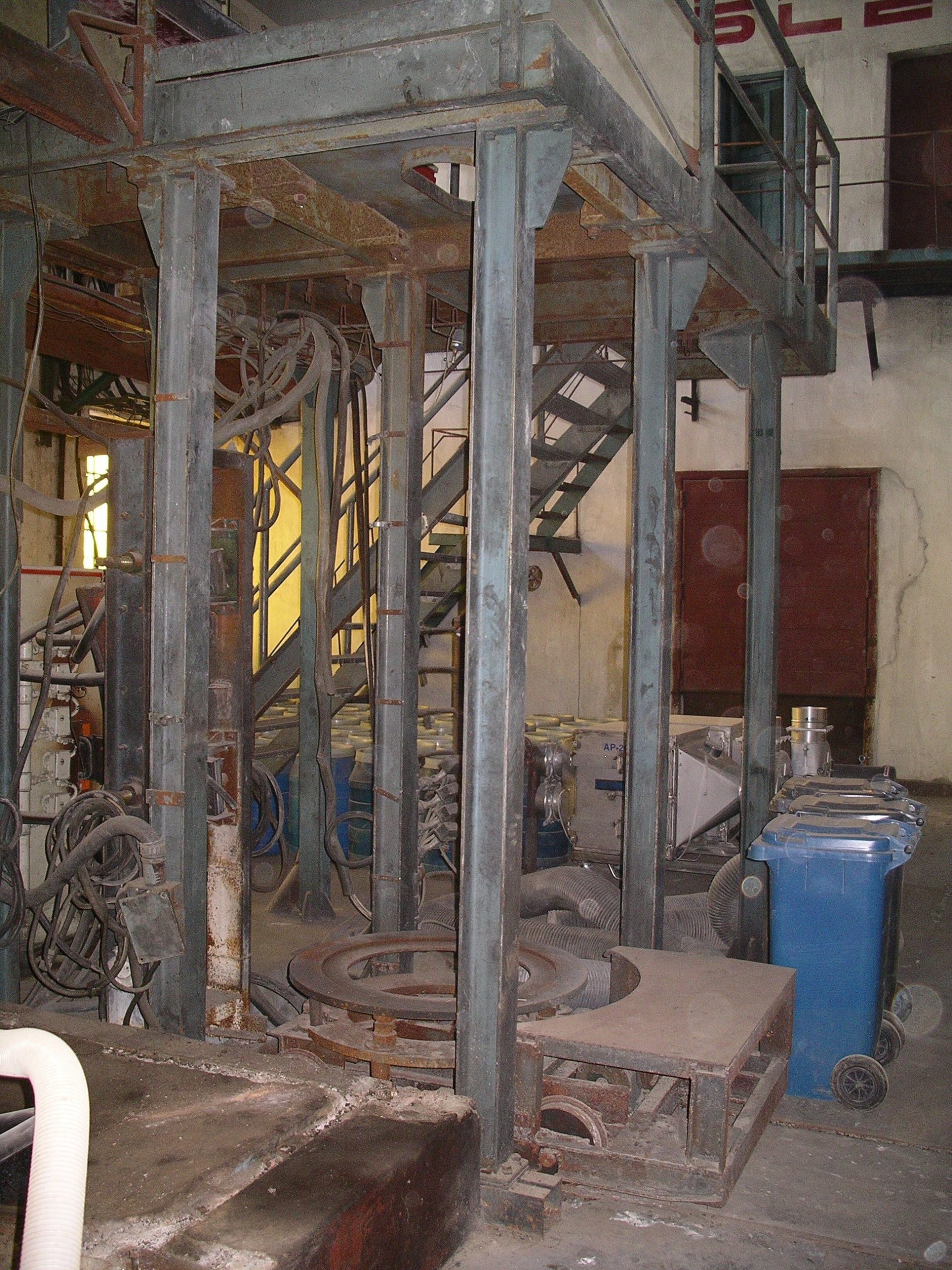
Site of removed casting furnace, vacuum system and controls for casting uranium metal fuel rods.
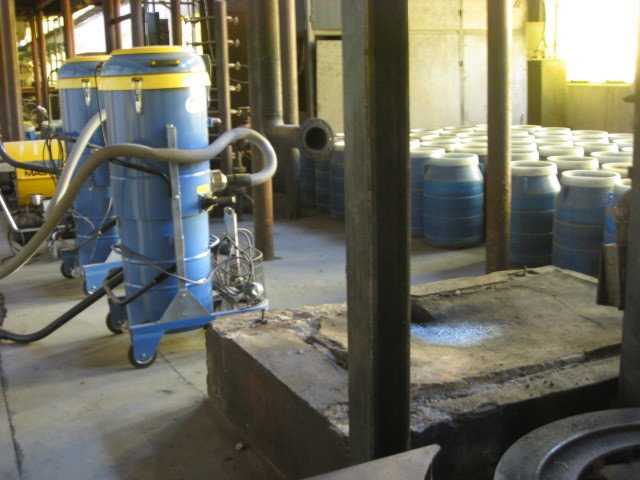
Disablement actions.

Hecker (center, third from left) and North Korean hosts inspecting disablement in Fuel Fabrication Facility.
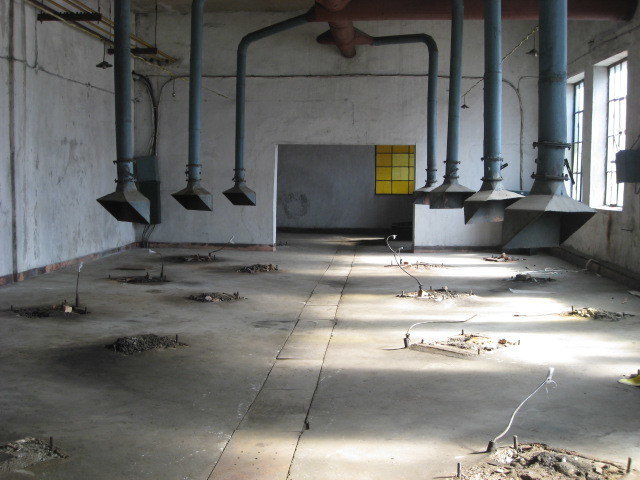
Fuel Fabrication Facility. Machining hall with lathes removed and ventilation hoods still in place.
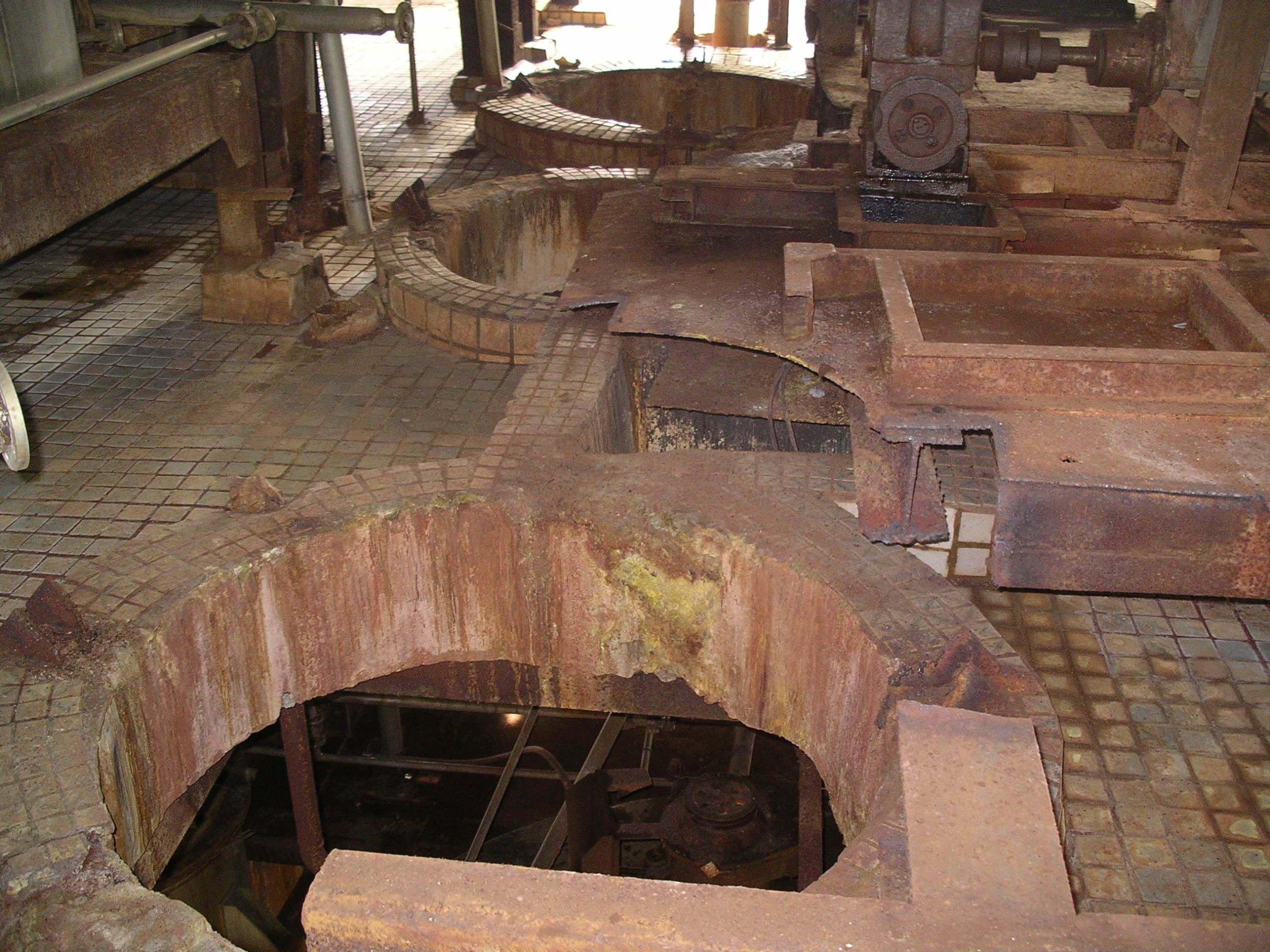
Pits from which dissolver tanks for uranium ore concentrate have been removed (front end of the fuel fabrication process).
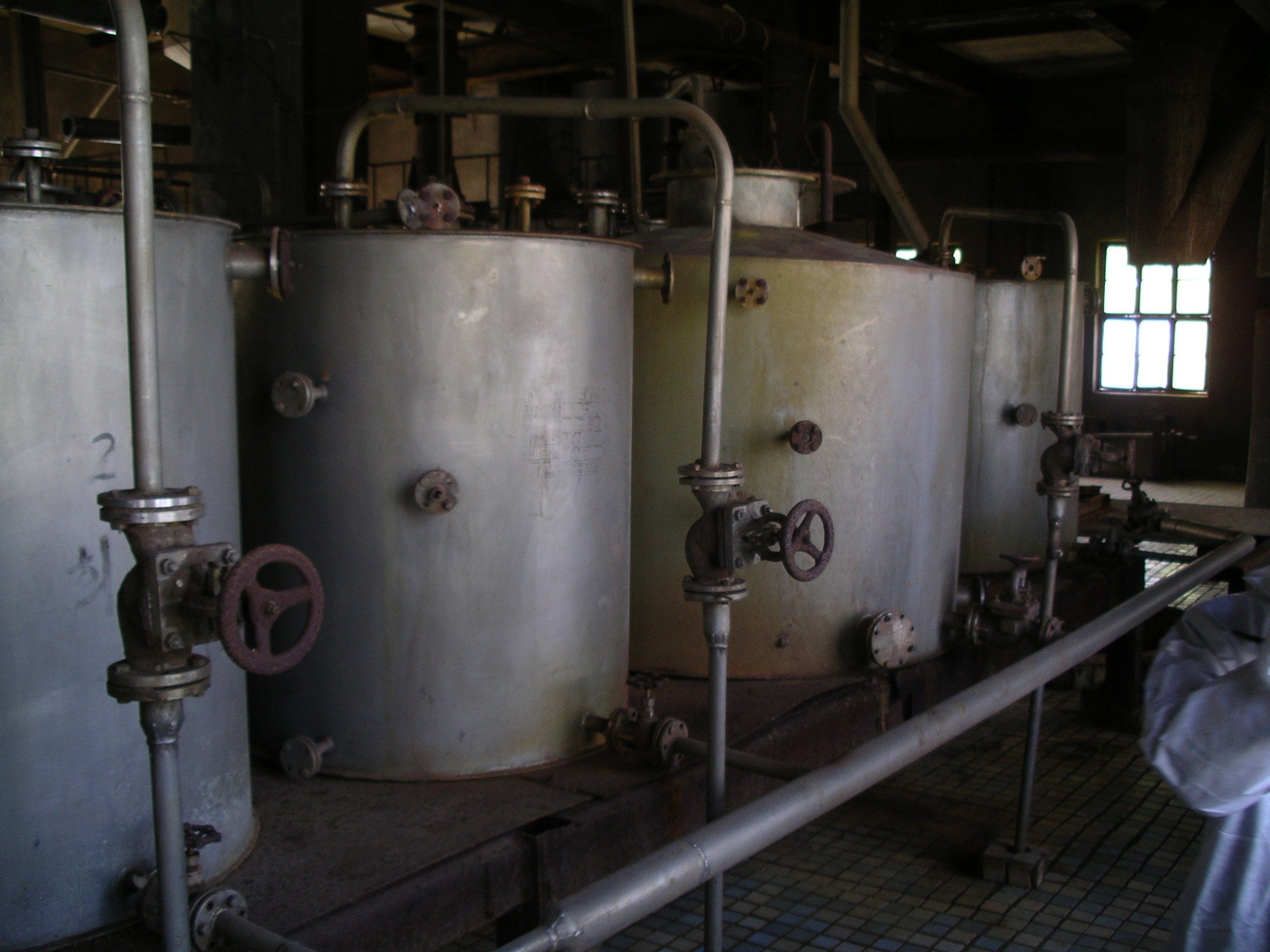
Dissolver tanks.
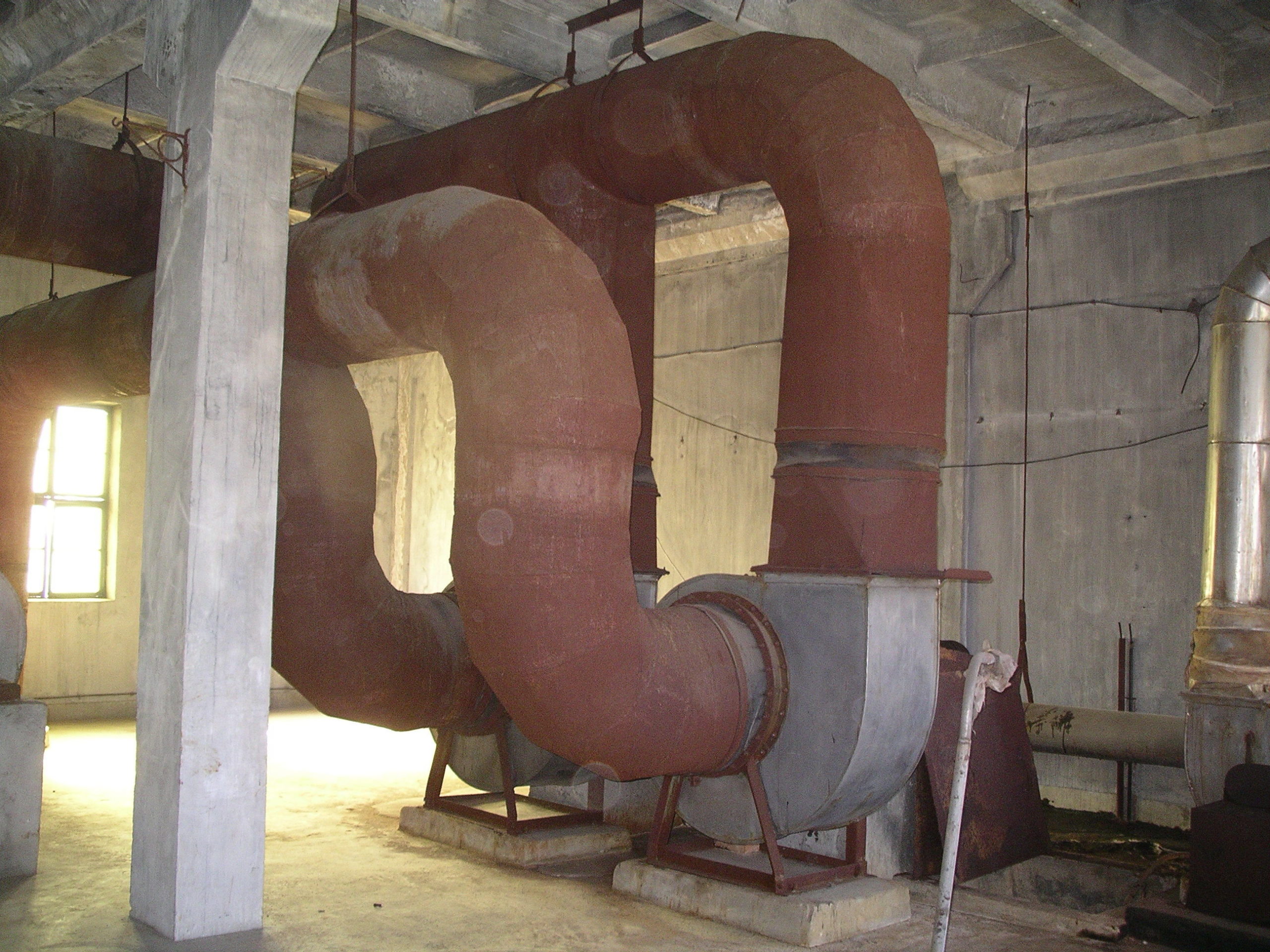
Ventilation.
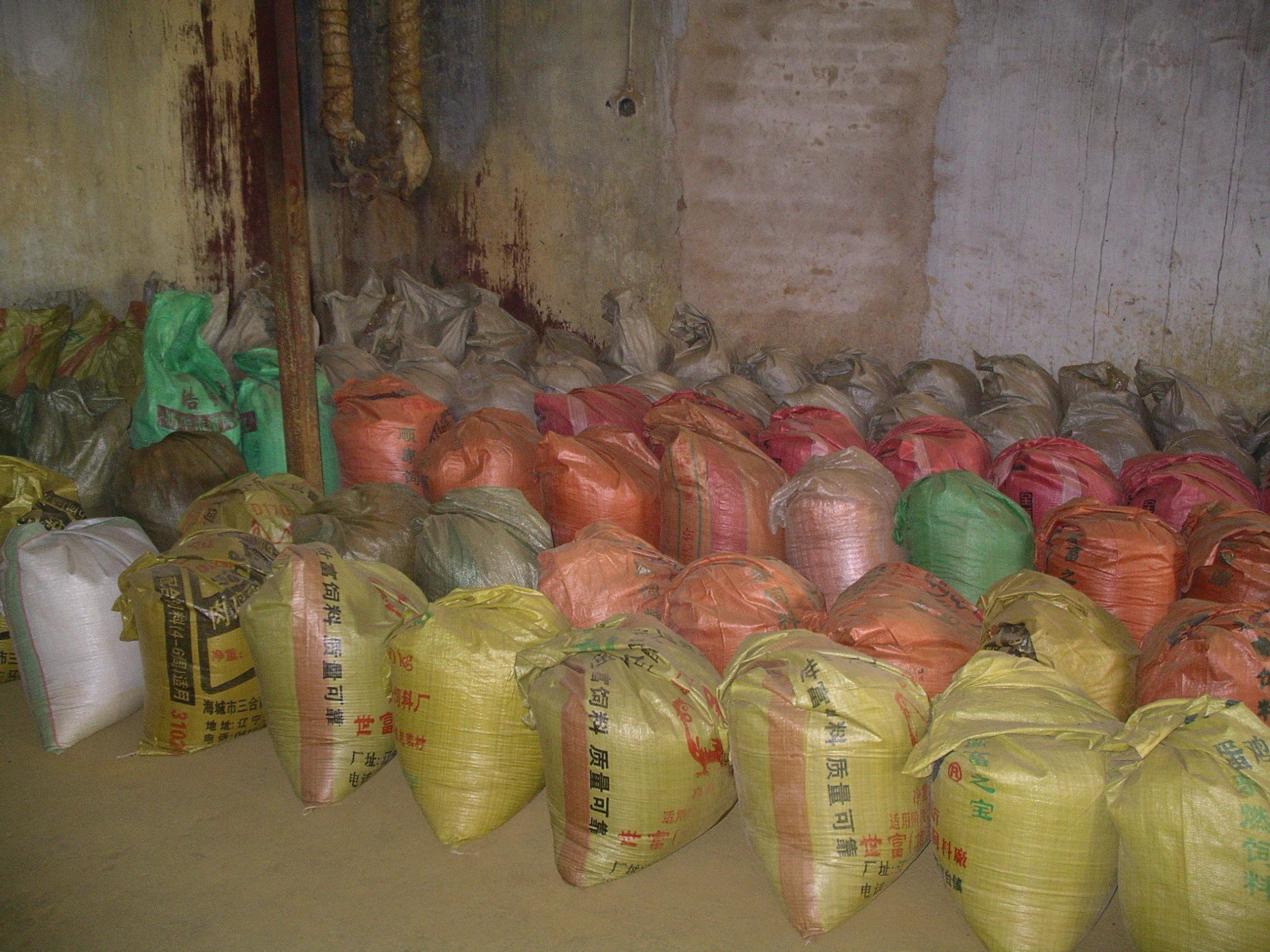
Stored uranium oxide (UO3).
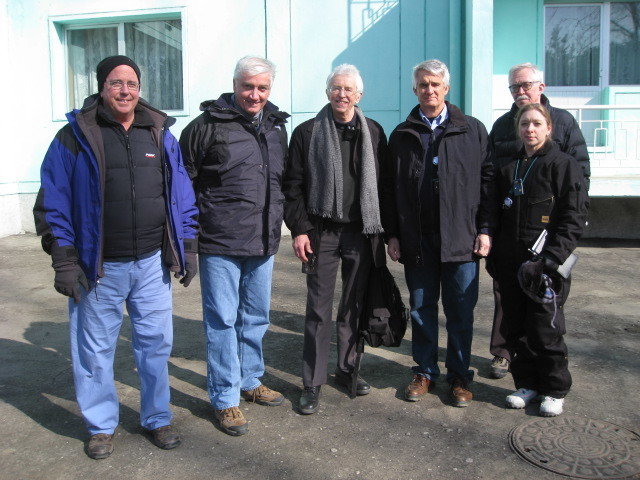
Hecker (center) with American technical team at Yongbyon.
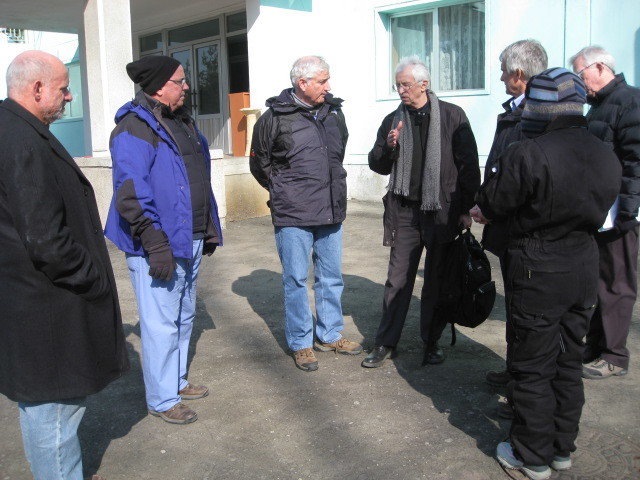
Hecker (4th from left) and Wit (far left) with American technical team at Yongbyon.
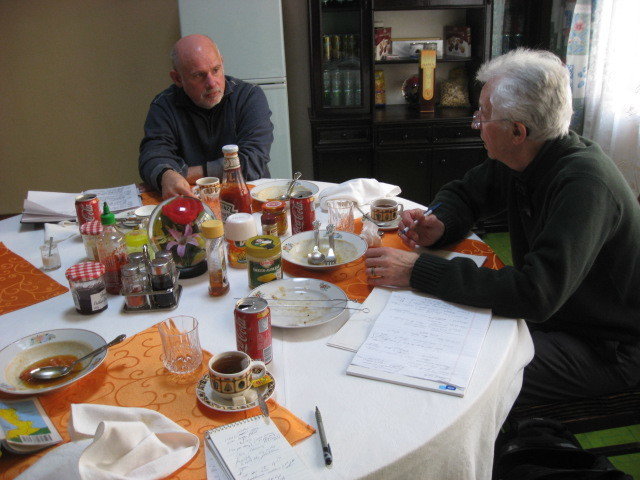
Wit (left) and Hecker at lunch in Yongbyon Guesthouse.
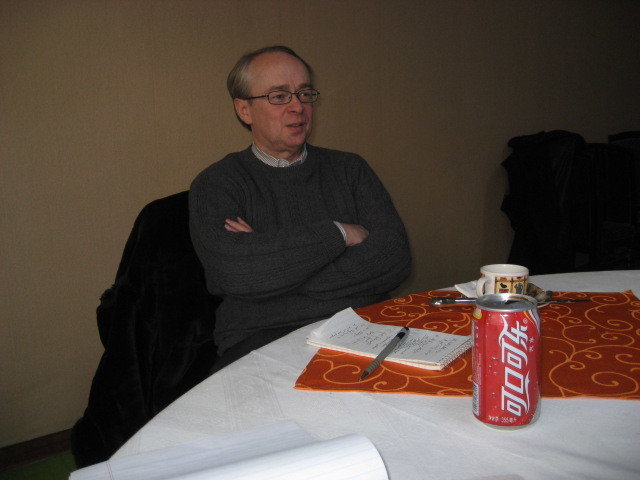
Luse at lunch in Yongbyon Guesthouse.
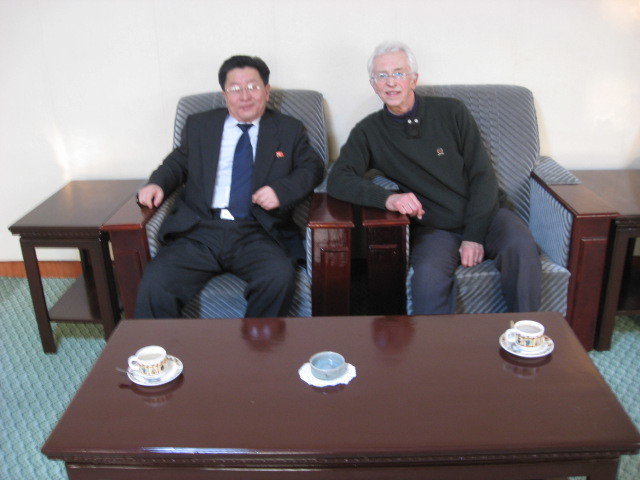
Director Ri Hong Sop and Hecker at outbrief.
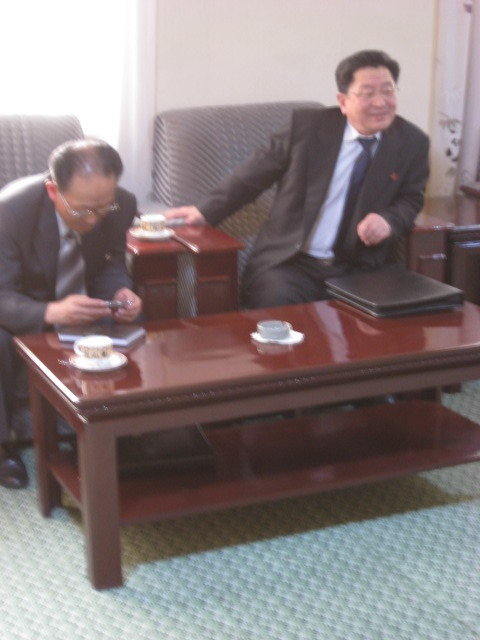
Director Ri Hong Sop (right) and safeguards section head Li Yong Ho at outbrief in the Yongbyon Guesthouse.
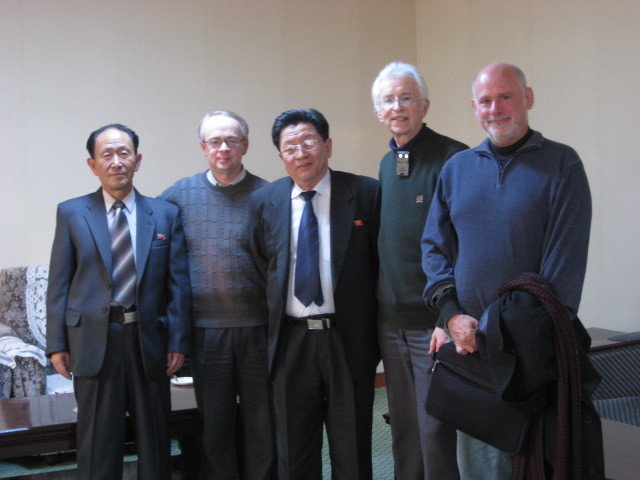
Wit, Hecker and Luse with Yongbyon hosts, Safeguards Section Head Li Yong Ho (left) and Director Ri Hong Sop (center).
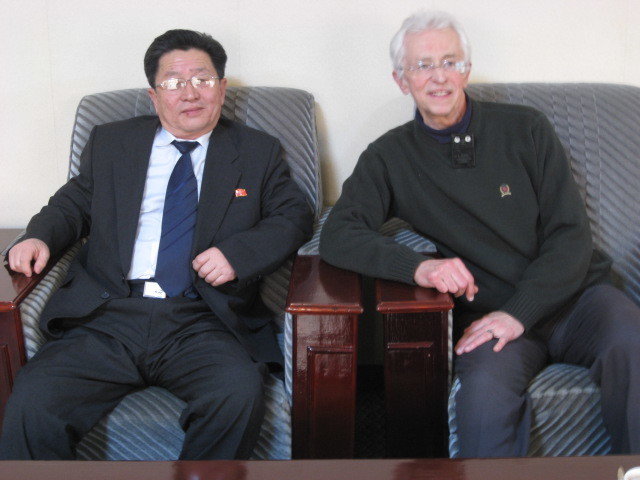
Director Ri Hong Sop and Hecker.
At the time of the visit, Dr. Ri Hong Sop stepped down as Director of the Yongbyon Nuclear Center but continued in leading roles in the nuclear program. Hecker and the members of the Stanford delegations had a detailed discussion of the disablement issues and possible redirection of nuclear workers in the future.
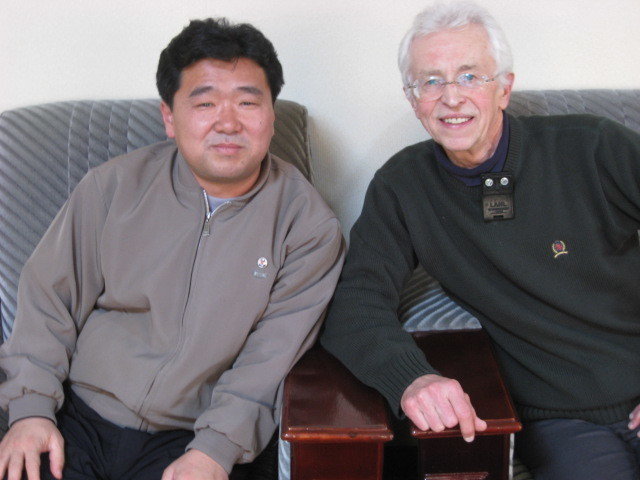
Hecker with interpreter.
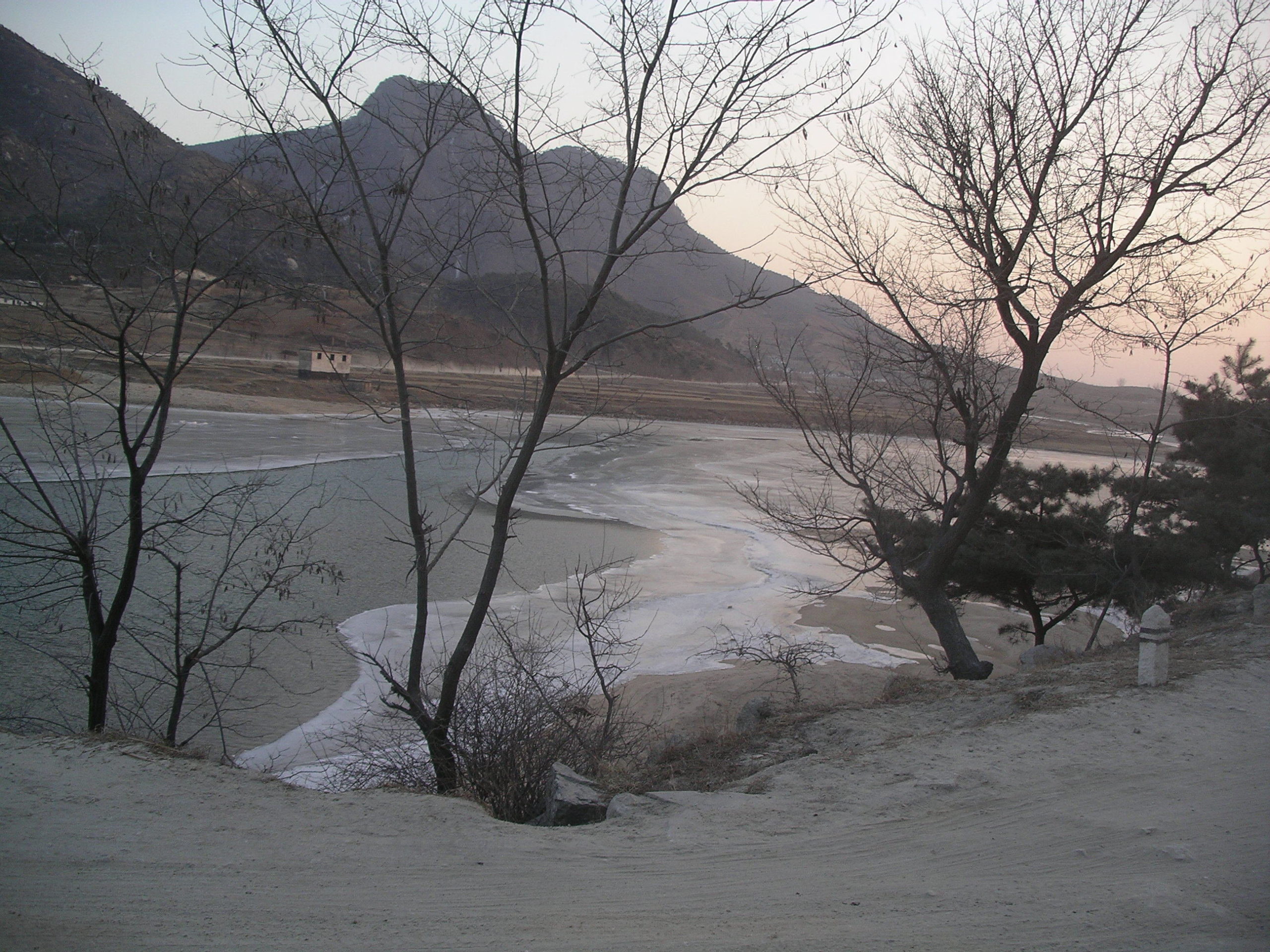
Kuryong River flowing through Yongbyon.
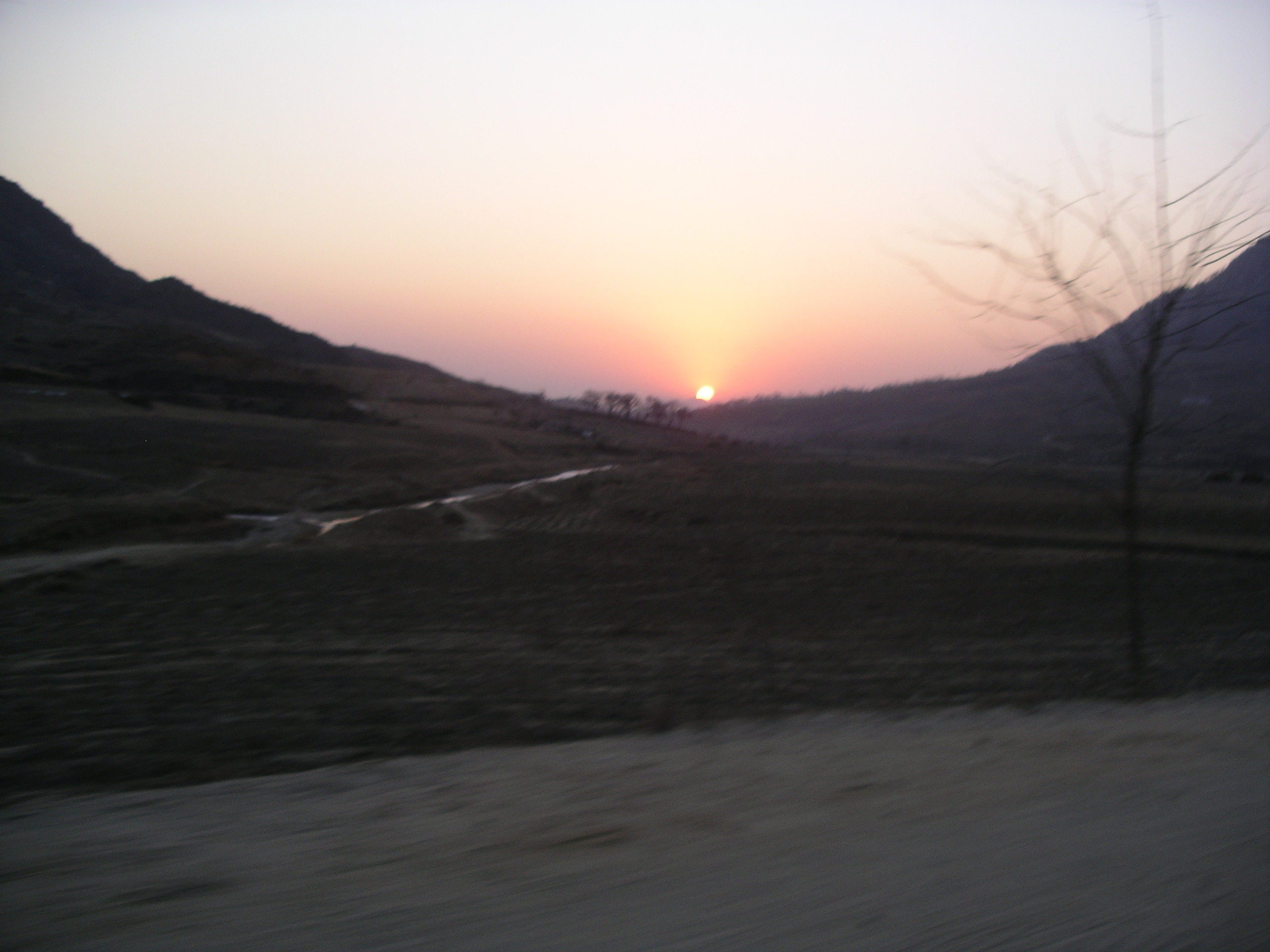
Sunset on the way back to Pyongyang after a day-long visit to Yongbyon.
During the remainder of the visit, the Stanford team met with officials from education and health ministries to probe opportunities for collaboration and continued informal discussions with their Foreign Ministry hosts. There were visits to museums and meetings at the School of Foreign Languages, University of Foreign Studies, and University of Music.
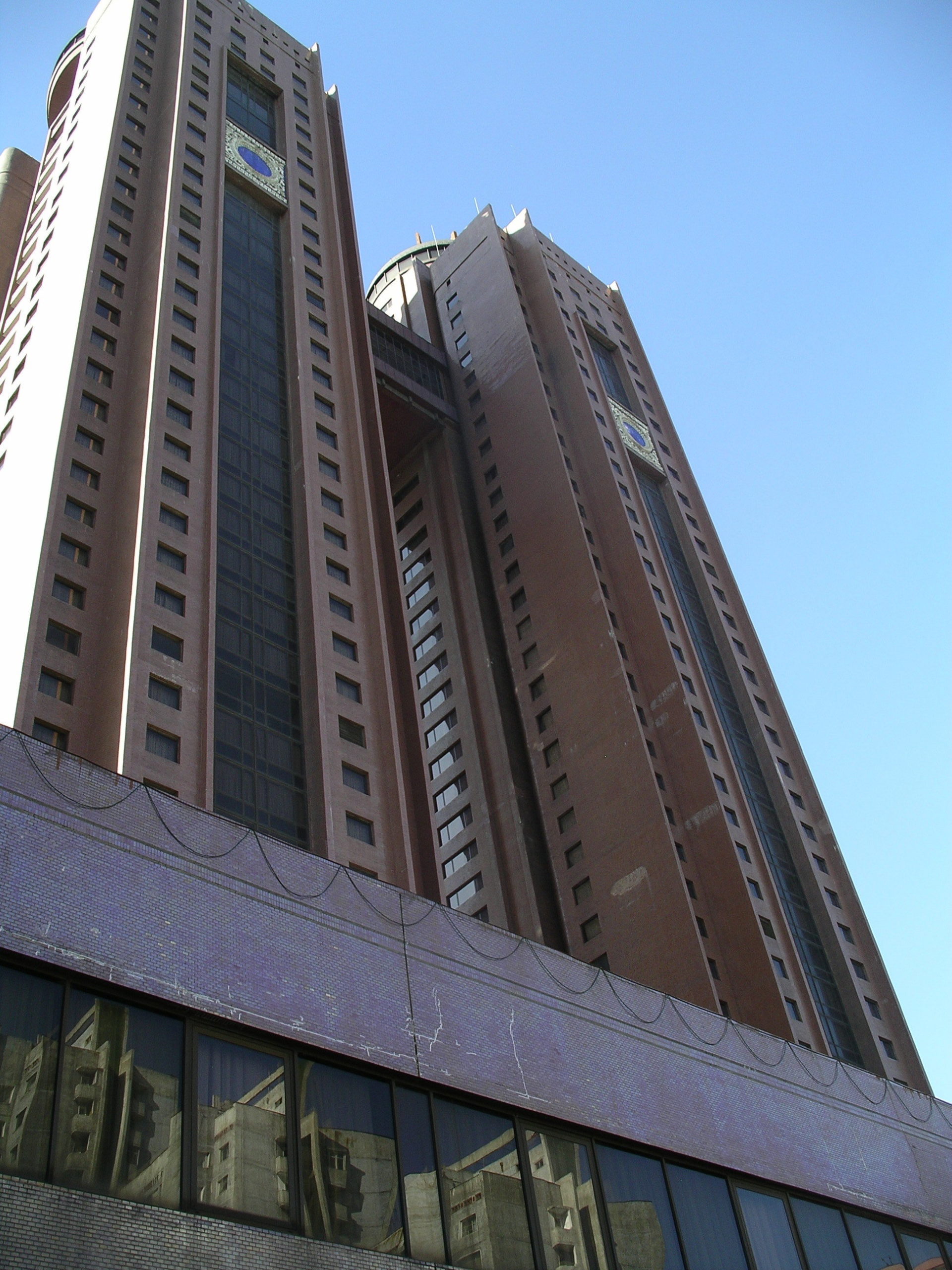
High-rise Koryo Hotel centrally located in Pyongyang.
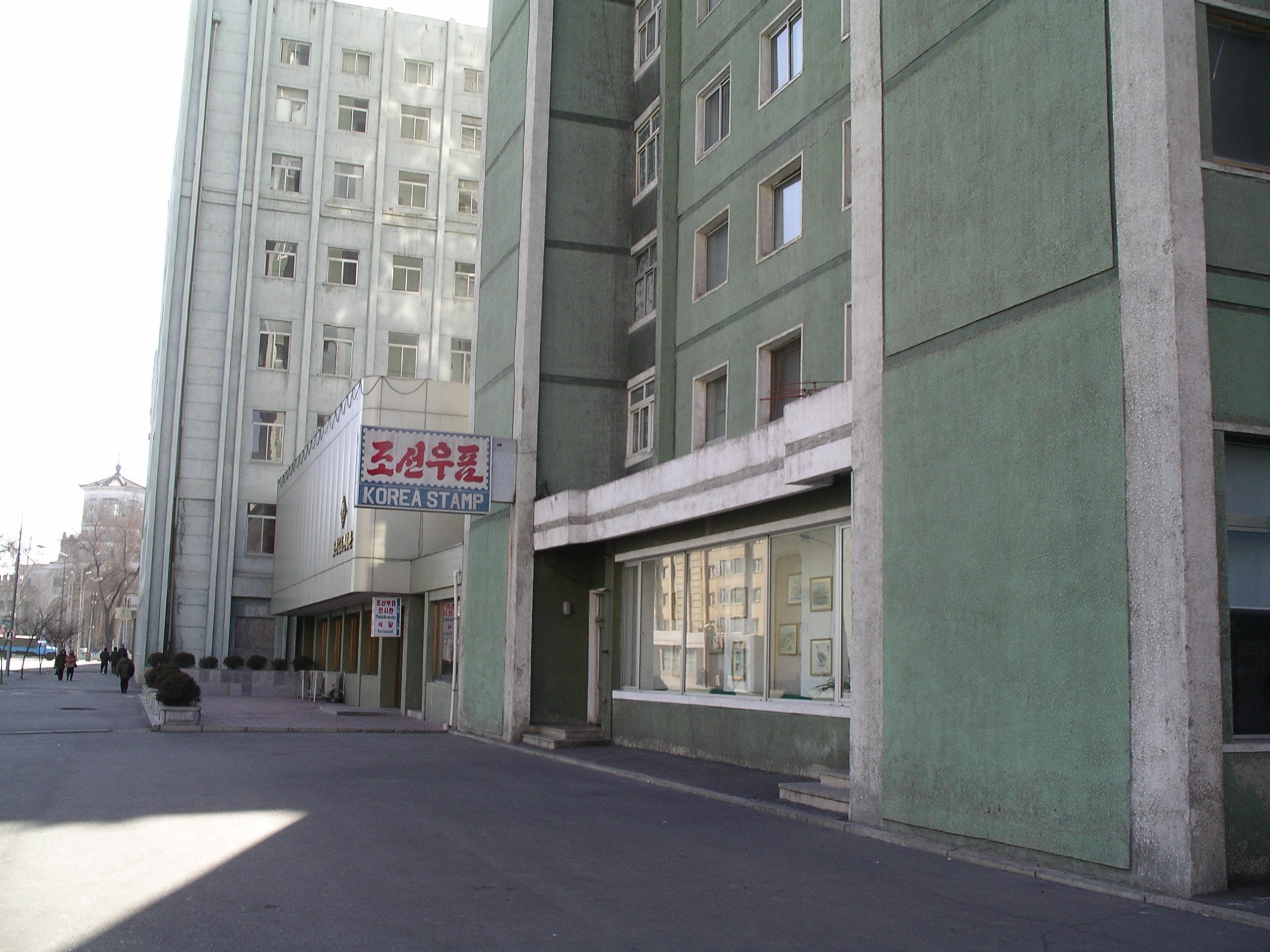
A stamp store around the corner from the hotel.
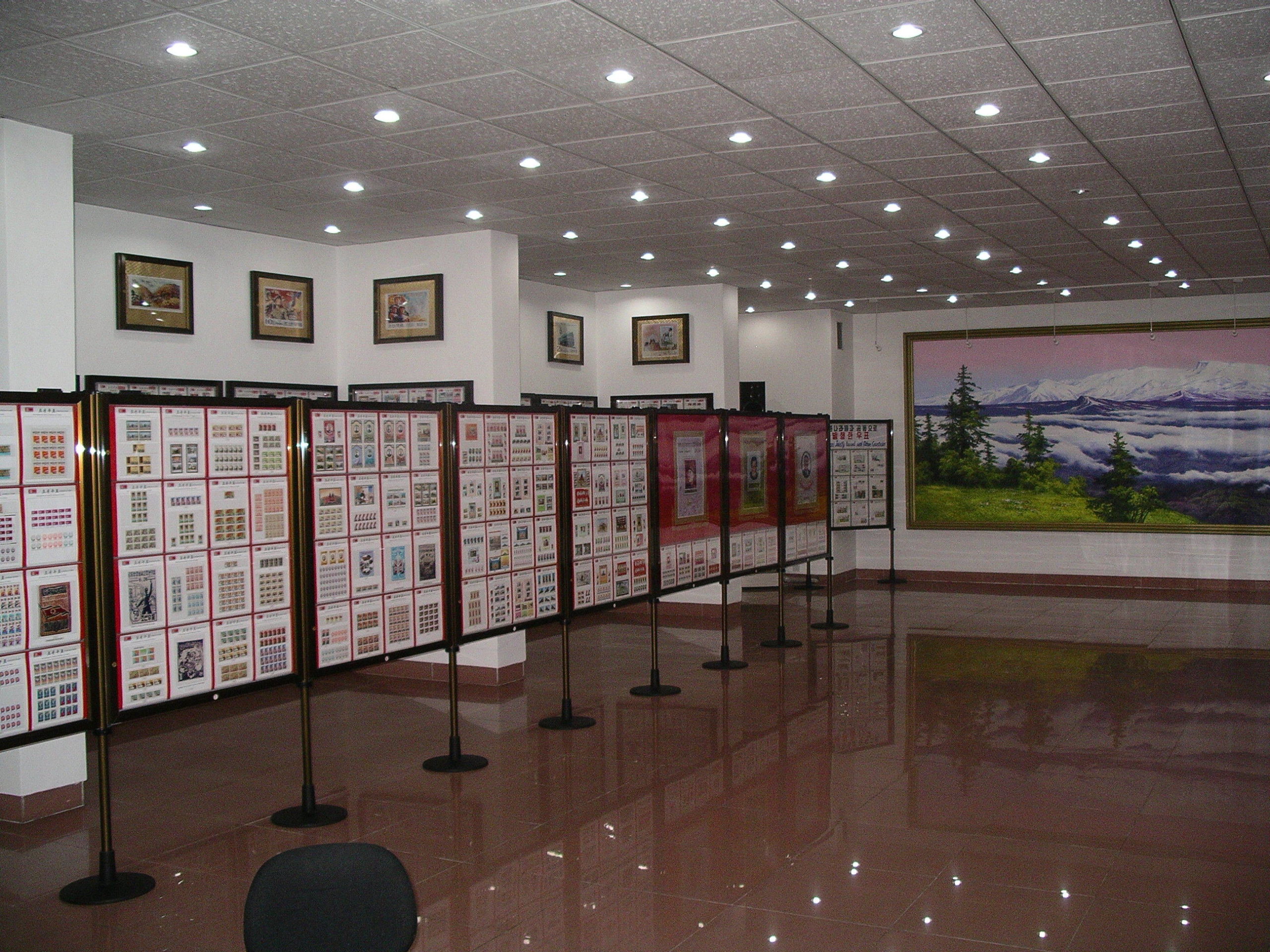
Inside the store, a large selection of stamps commemorating DPRK’s historical, cultural, and technological accomplishments.

Dr. Choe Dok Hun (center), Deputy Director General of International Department, Ministry of Education, a Ministry officer and interpreter meeting with the Stanford team.
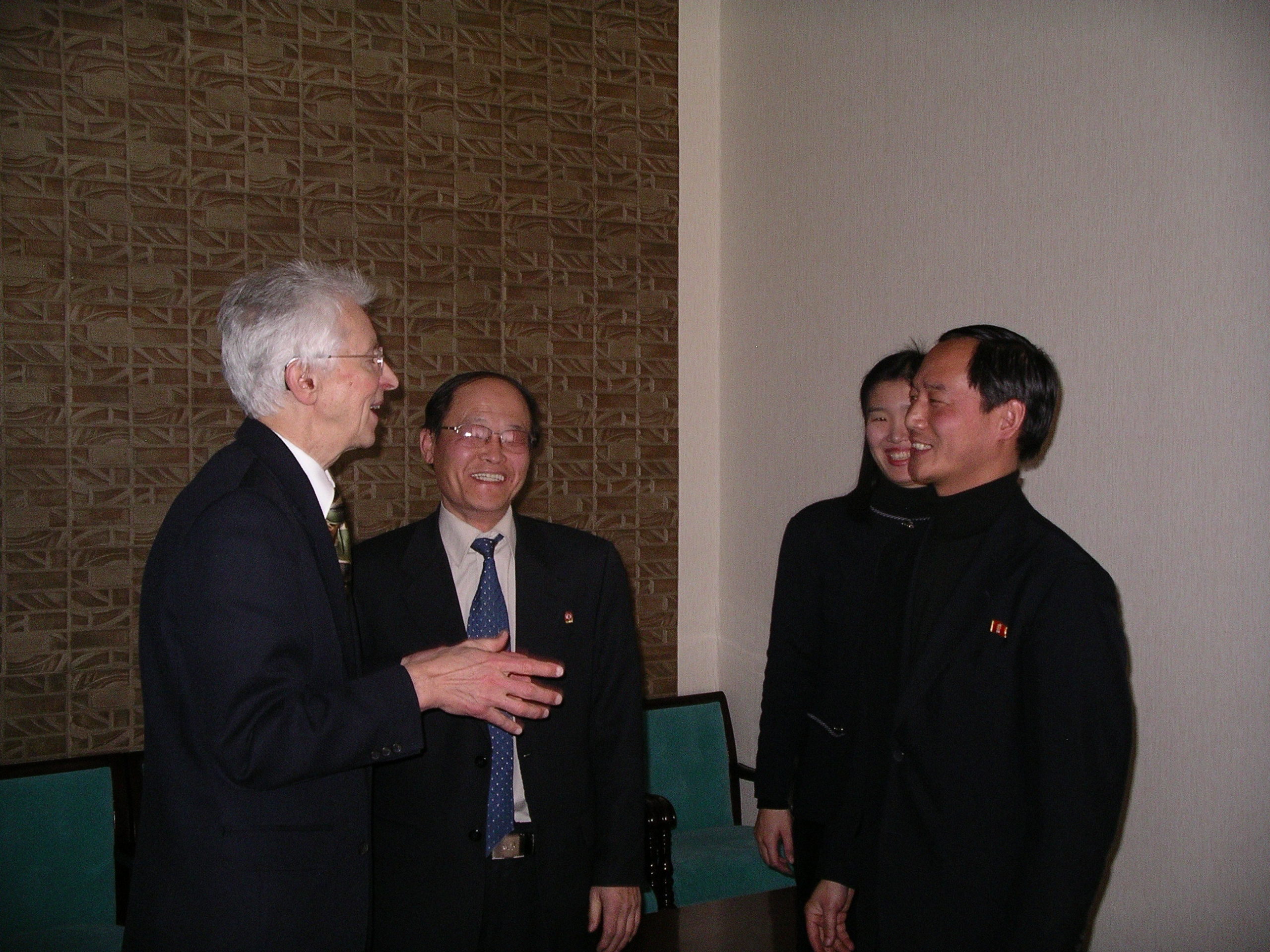
At the meeting, Hecker talked about improving the spectrum of learning, research and application – and how this could be accomplished through exchange visits.
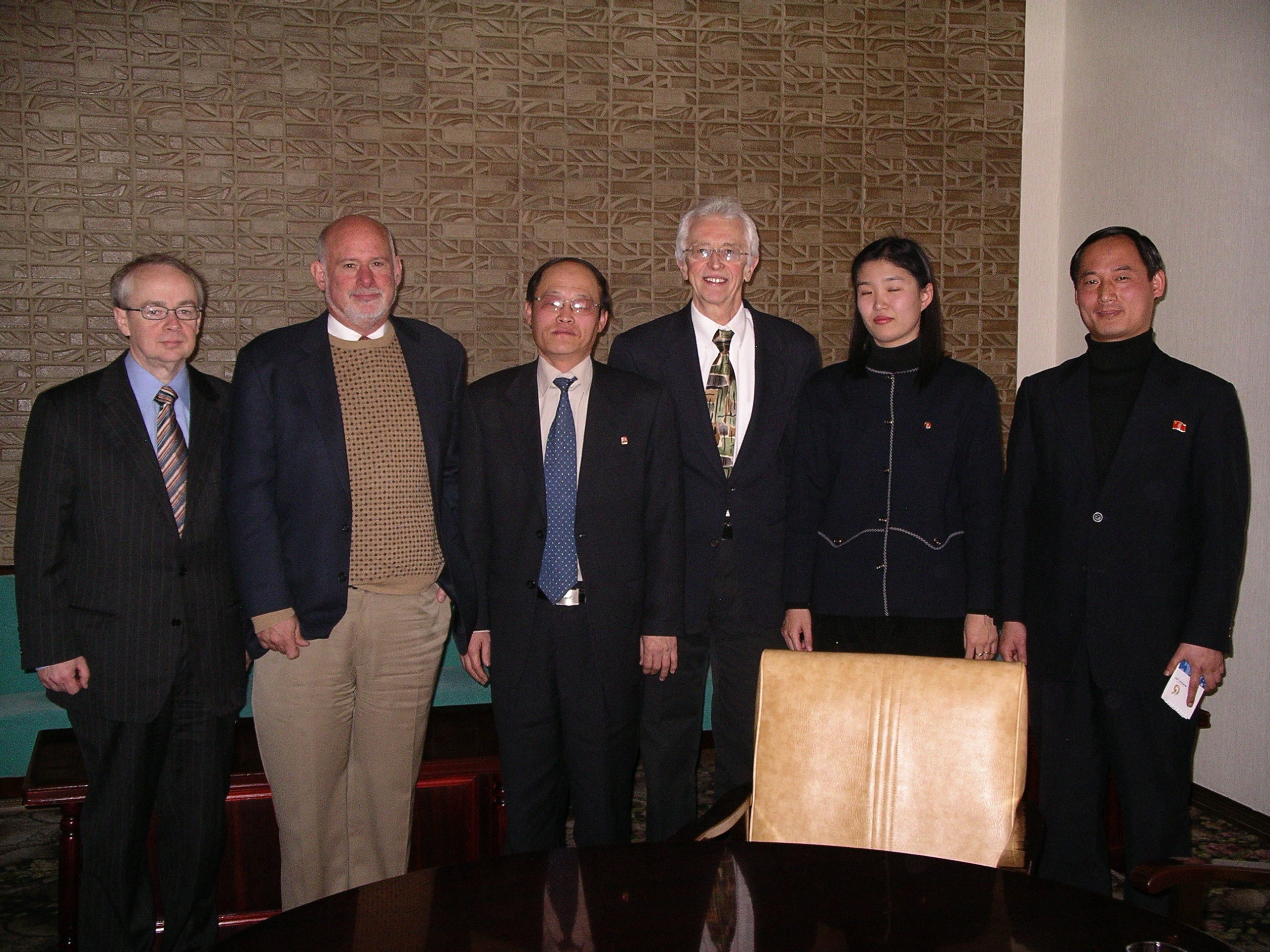
After the meeting that focused on possible scientific and educational exchange. Luse (left), Wit, Dr. Choe, Hecker, Ms. Ri Hye Ryon, and interpreter.
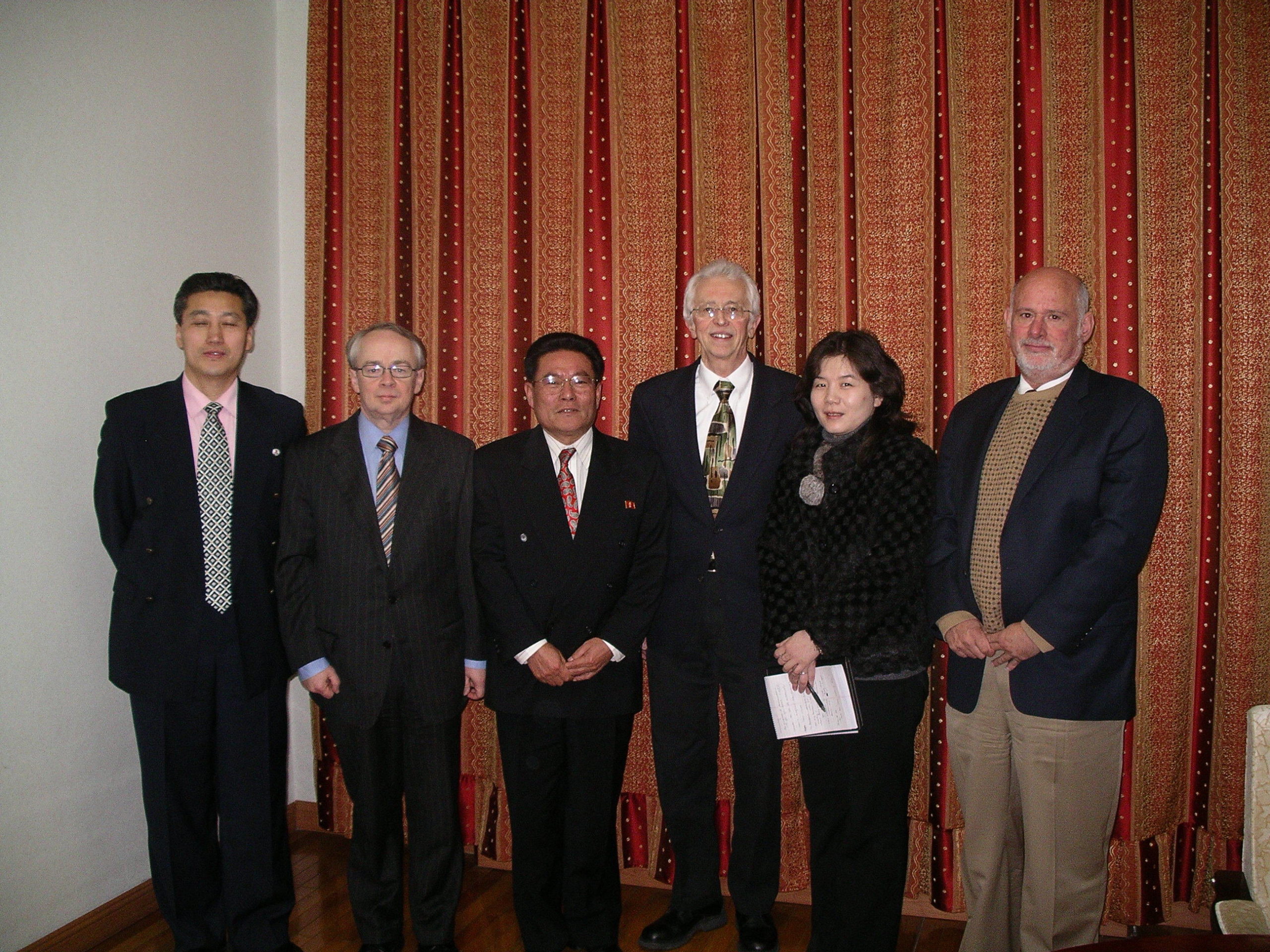
Meeting at MFA hosted by Ambassador Ri Gun (third from left). Hwang, Luse, Ri Gun, Hecker, Ms. Choi, Wit.
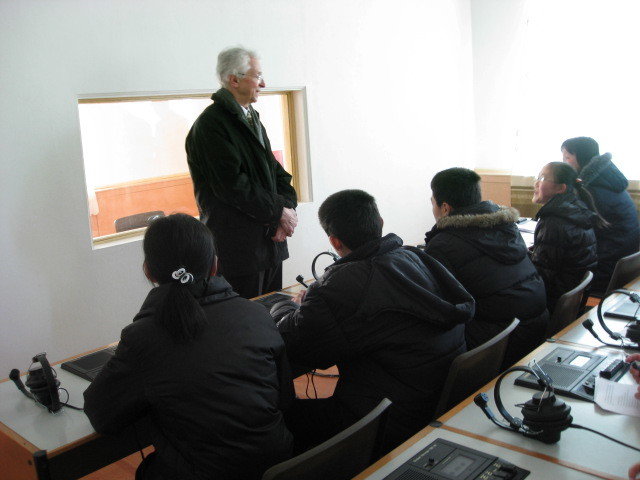
School of Foreign Languages. Hecker addressing students in English class.
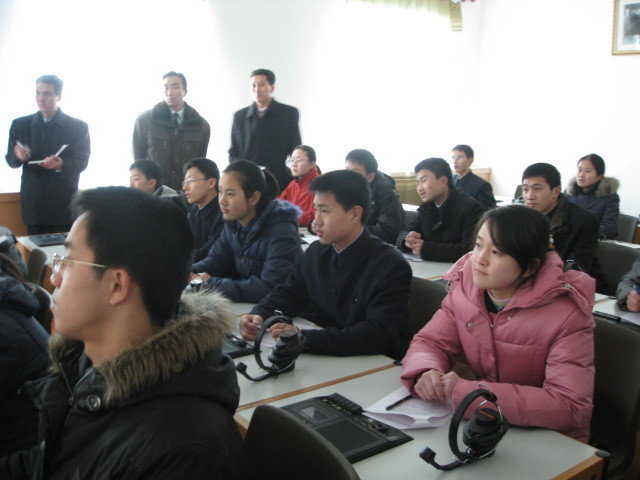
The students in English class were very inquisitive and friendly.
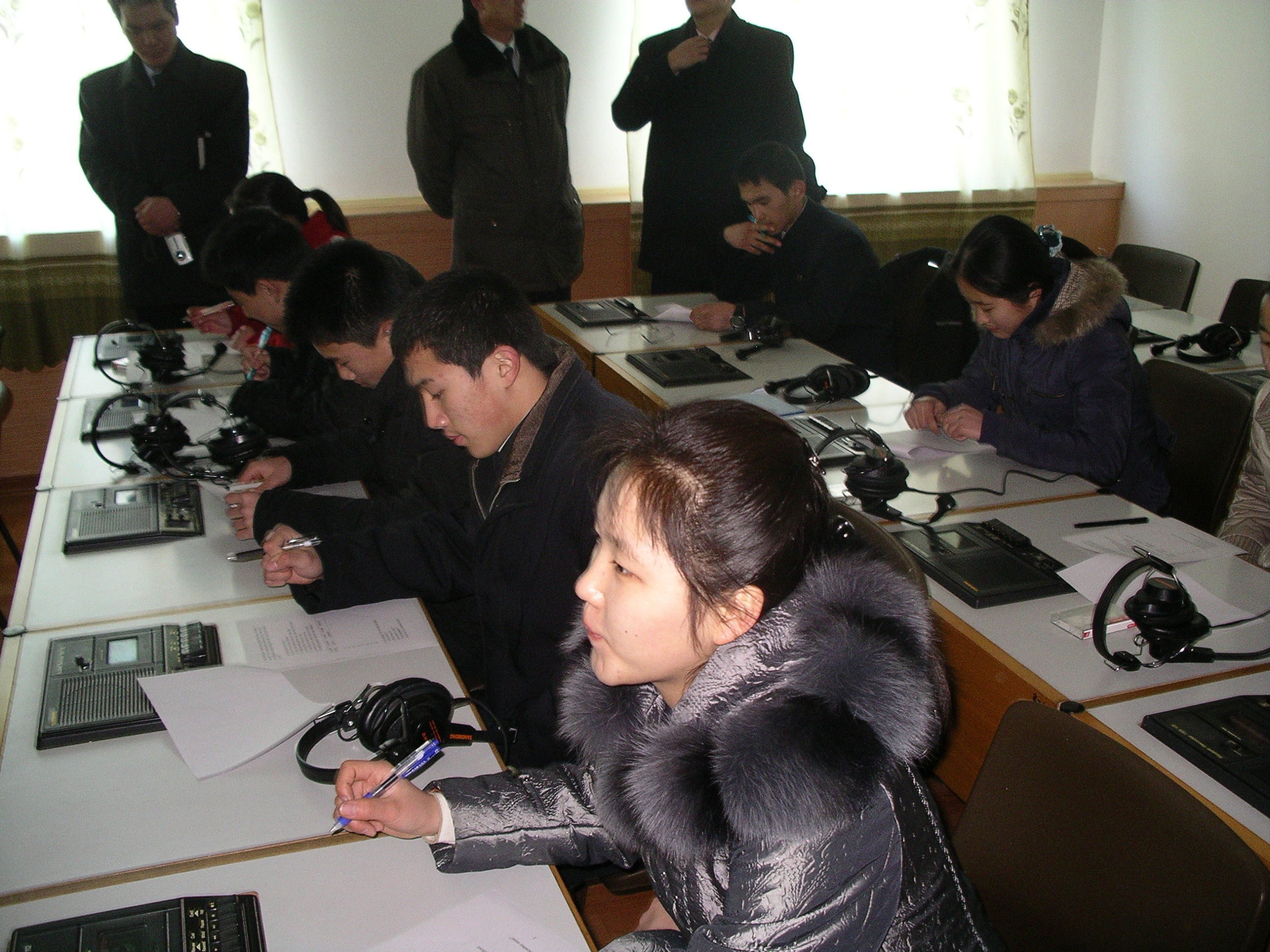
Hecker noted that the students spoke remarkably good American English.
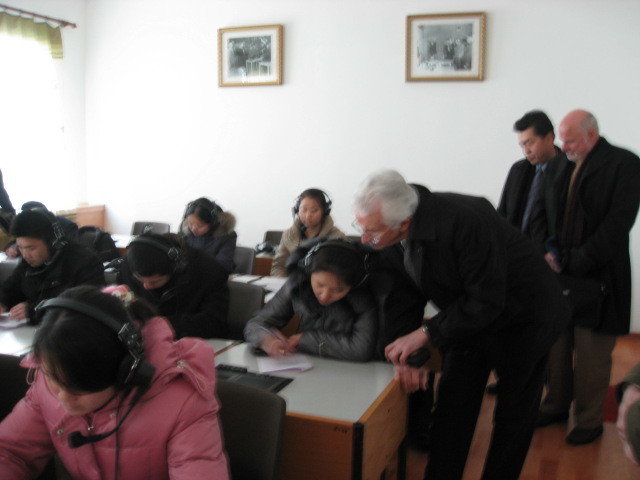
We got a warm reception in a bitterly cold classroom.
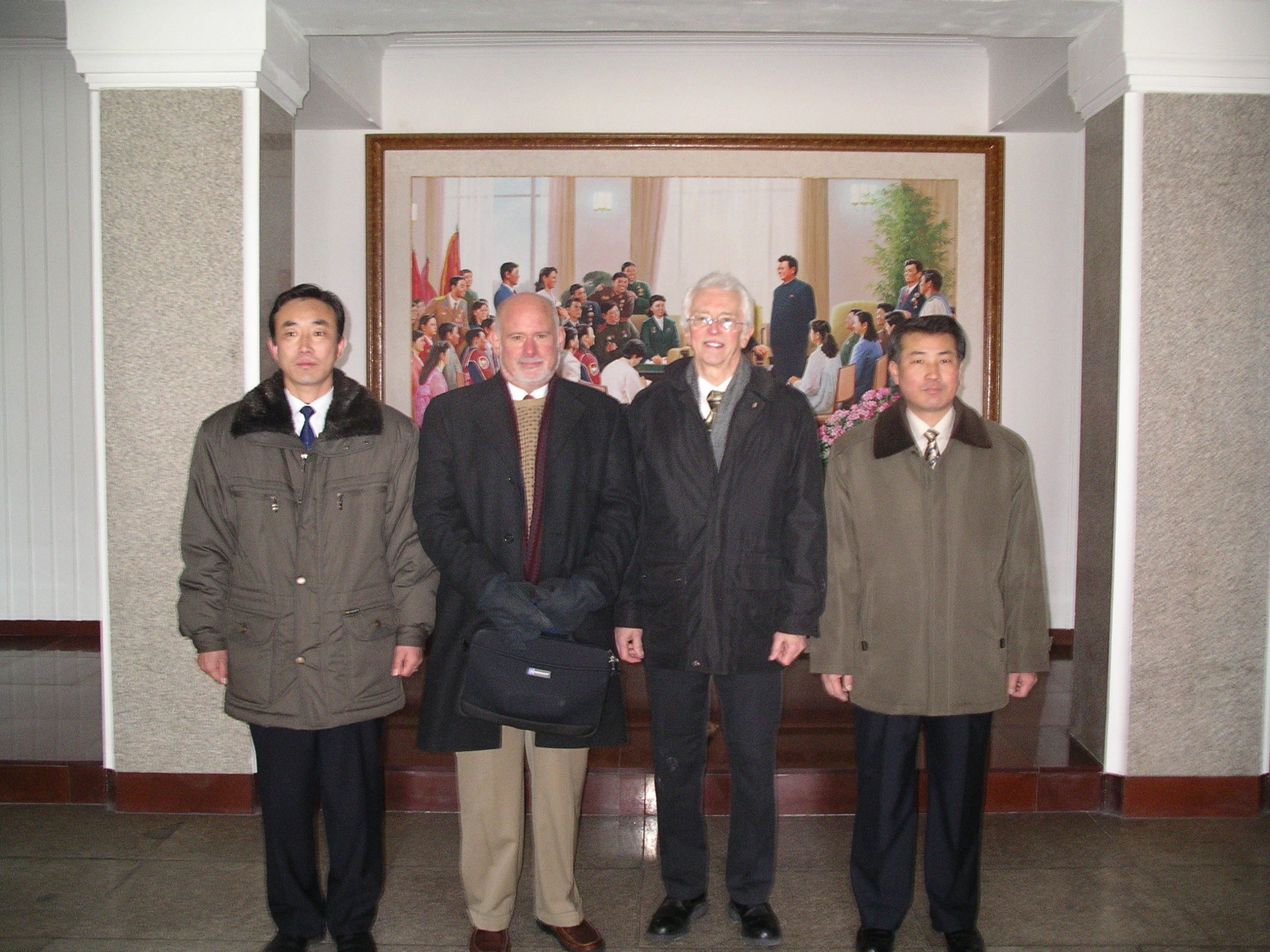
Wit (center left ) and Hecker (center right) with Foreign Languages School hosts.
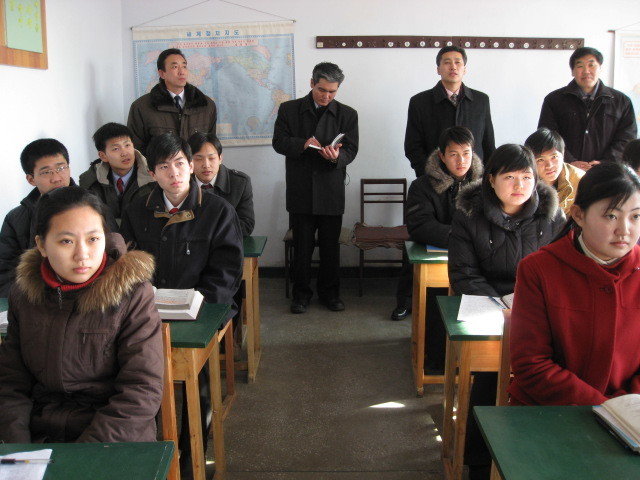
At Pyongyang University of Foreign Studies.
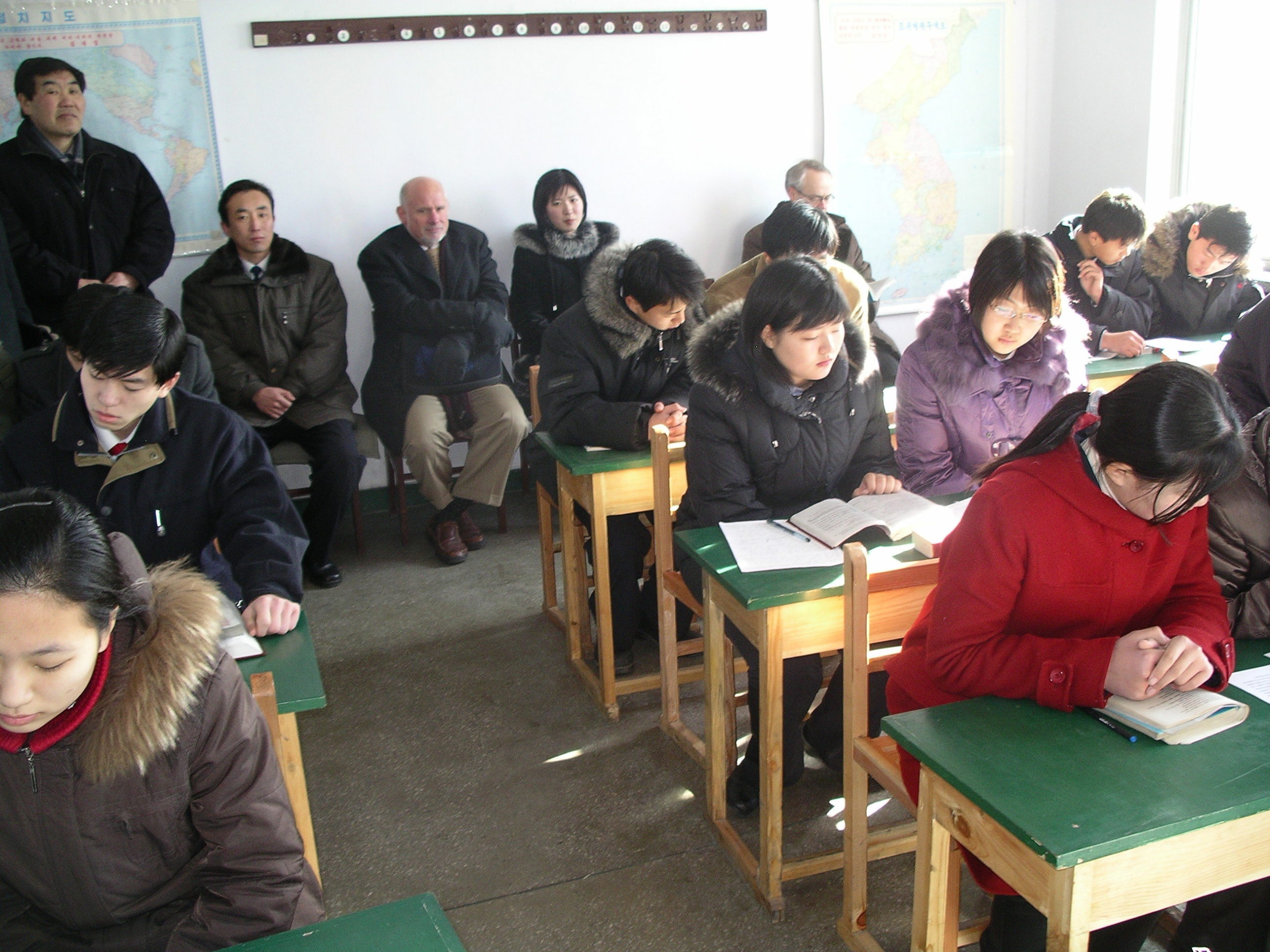
It was similarly cold inside the University of Foreign Studies classroom.
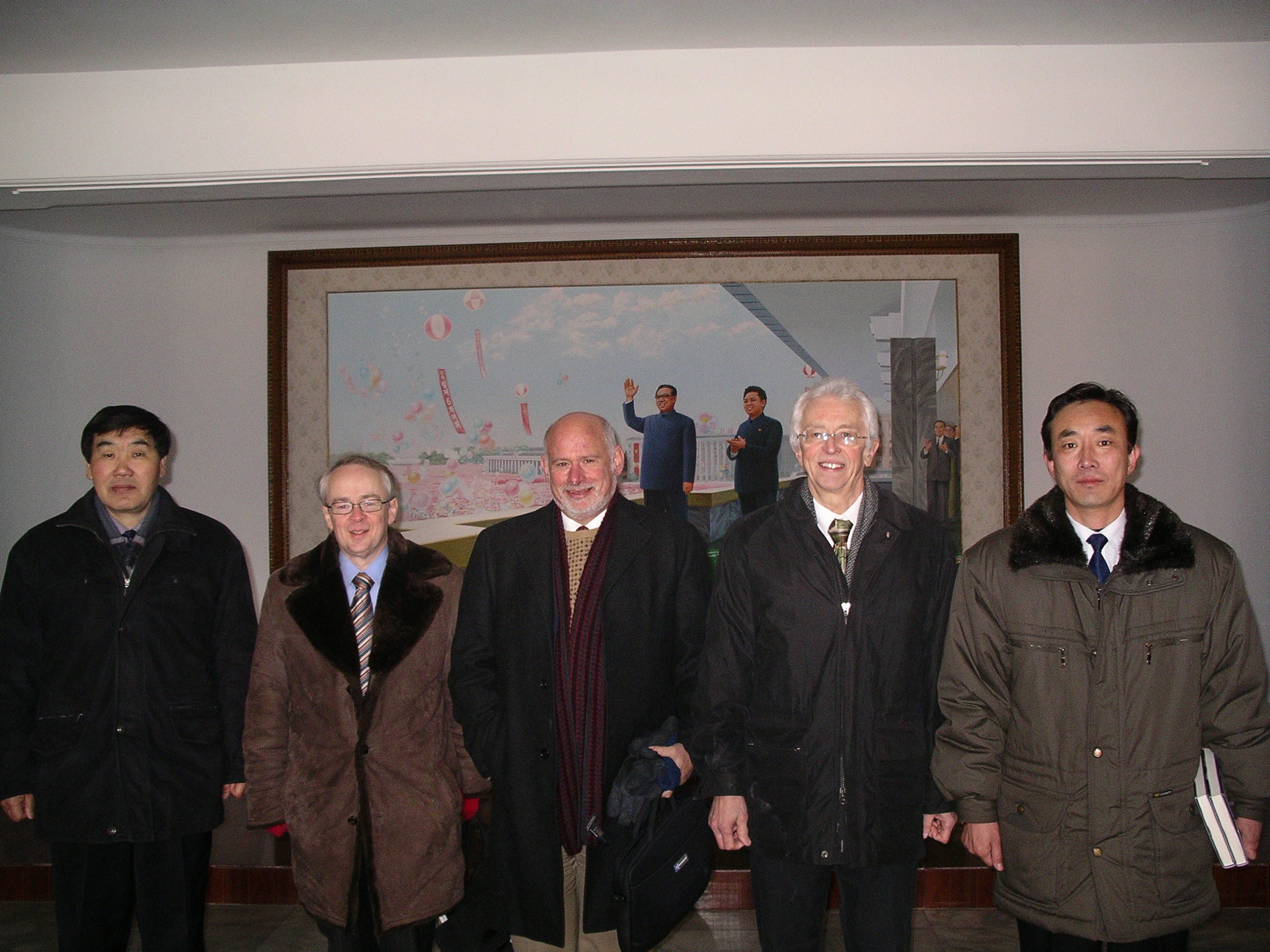
Stanford team (Luse, left, Wit, and Hecker) with Korean hosts at the Pyongyang University of Foreign Studies.
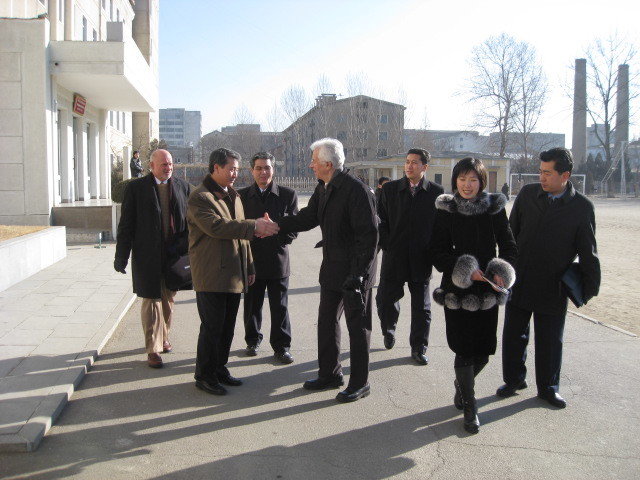
Stanford team accompanied by North Korean guides on the way to next visit.
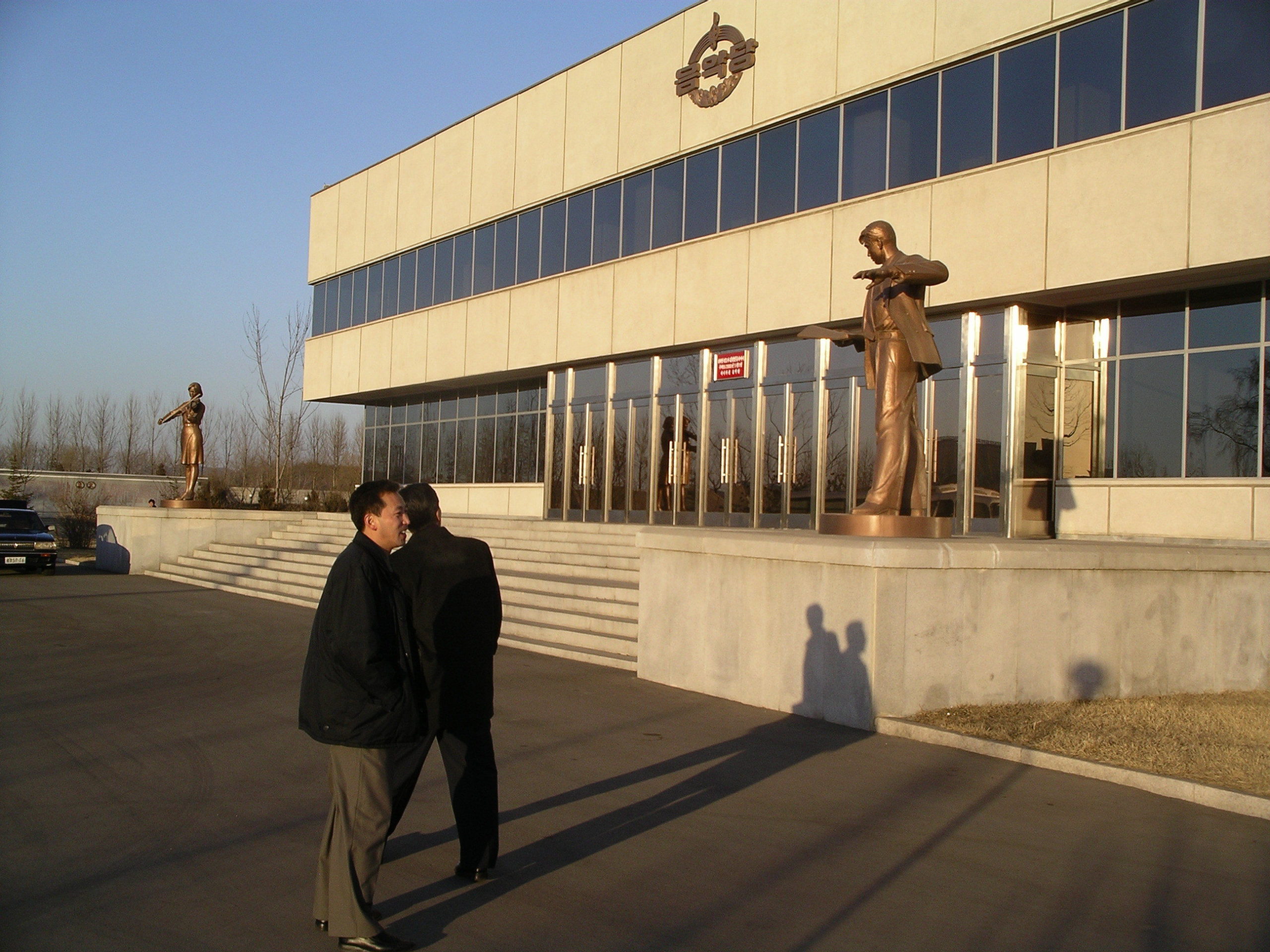
The façade of the University of Music and Dance, another visit stop.
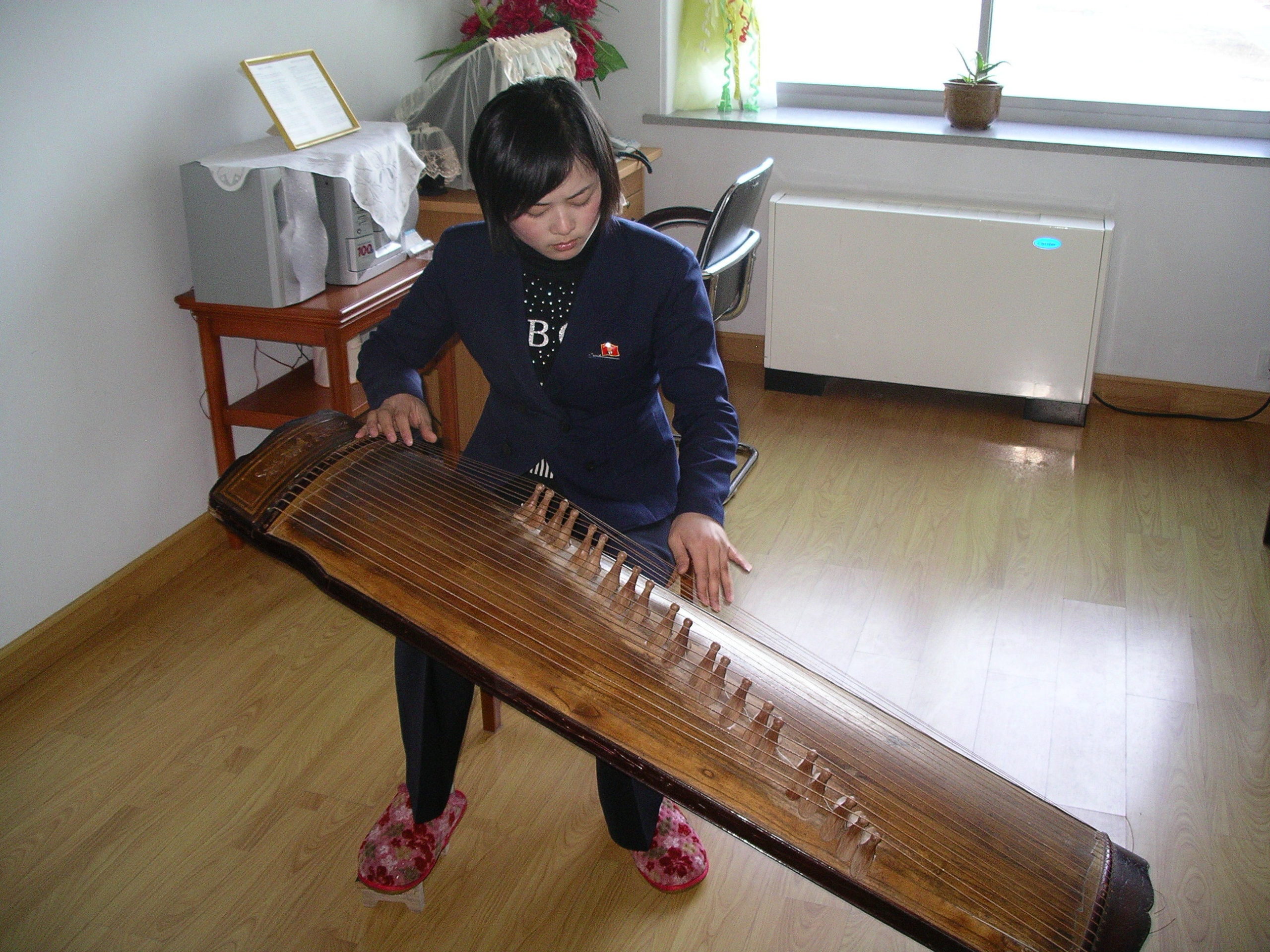
Student playing the kayageum, Korean traditional board stringed instrument.
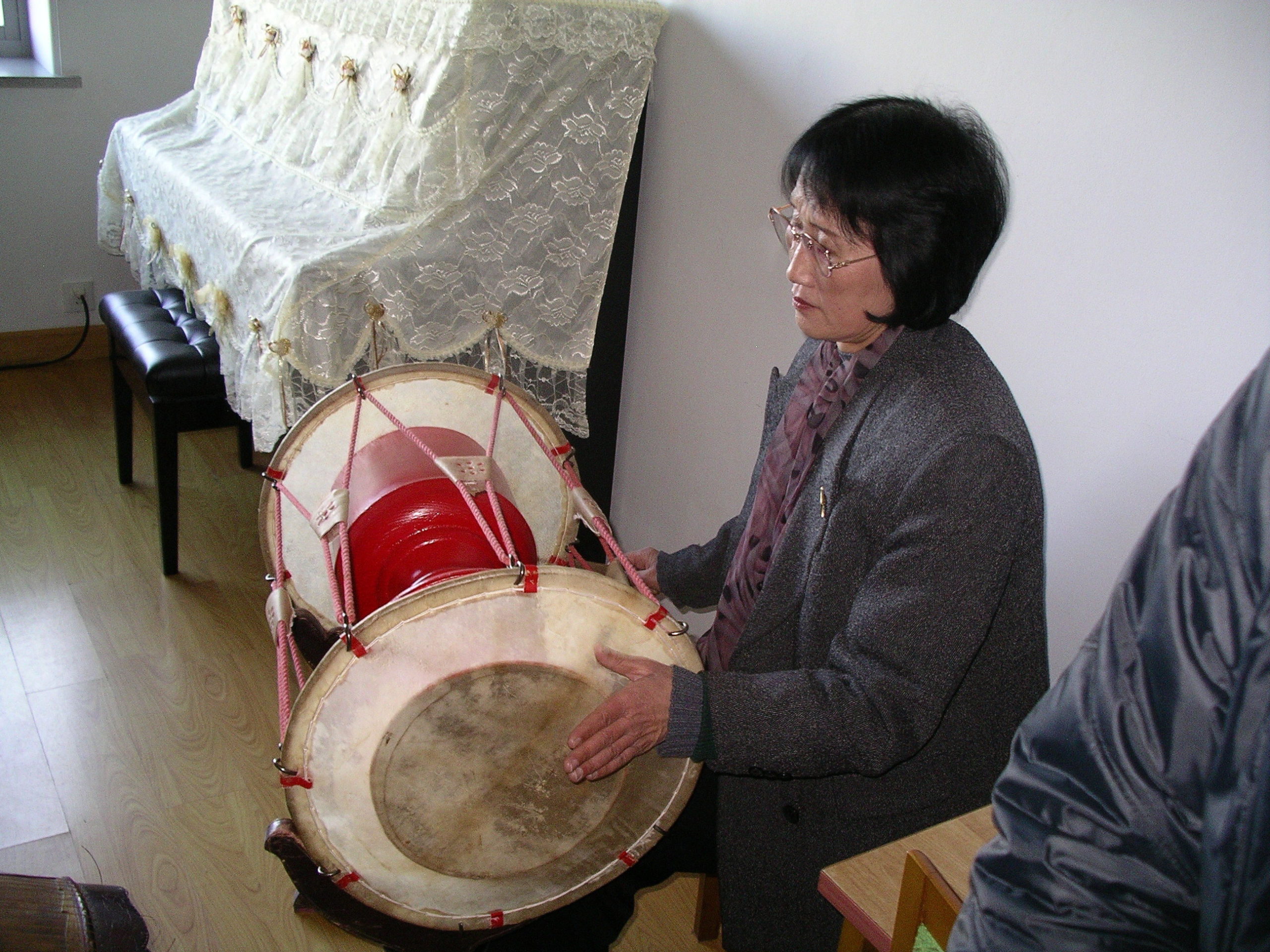
The kayageum is often accompanied by the changgu (junggu) drum.
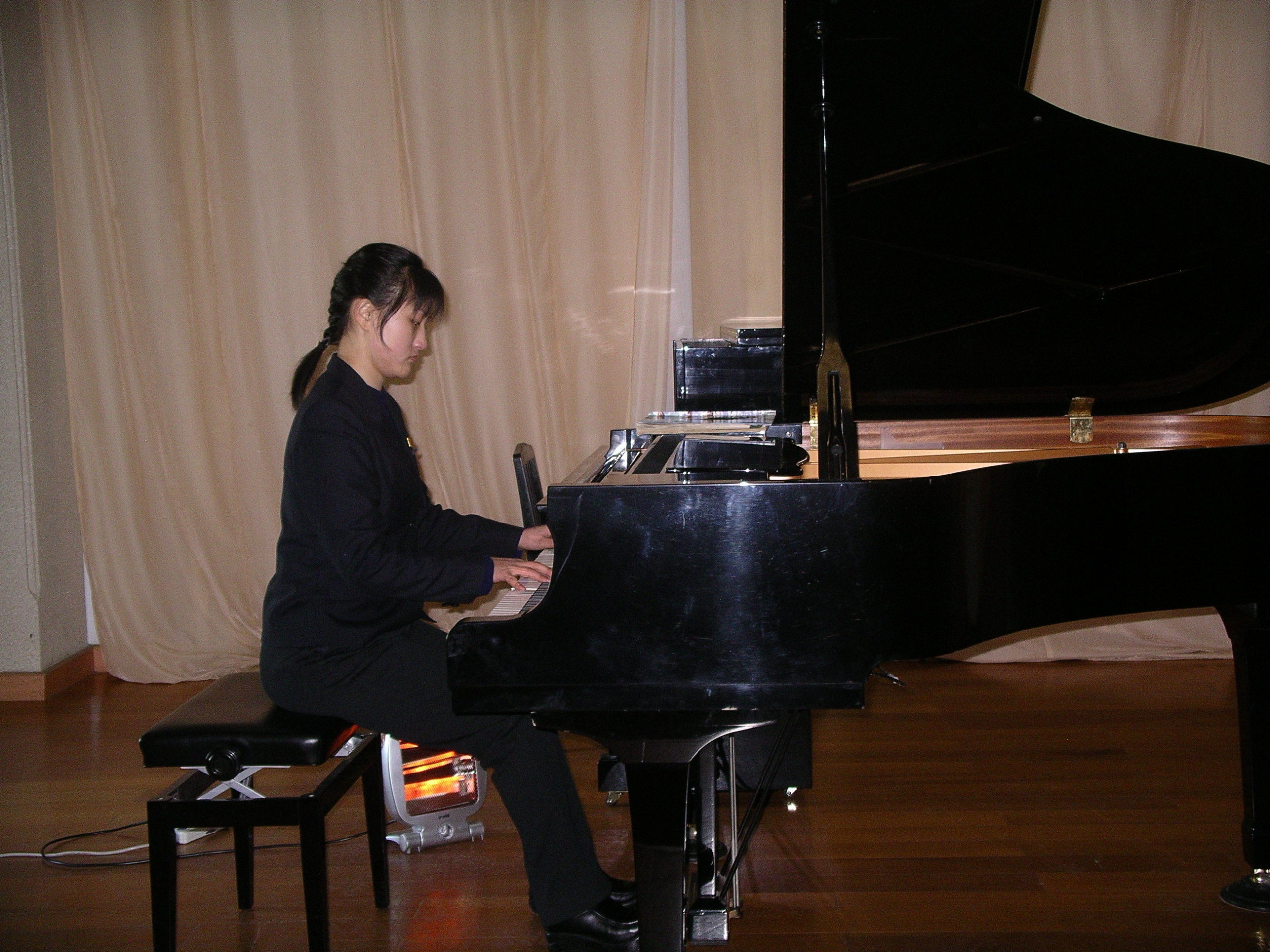
Piano class in University of Music.
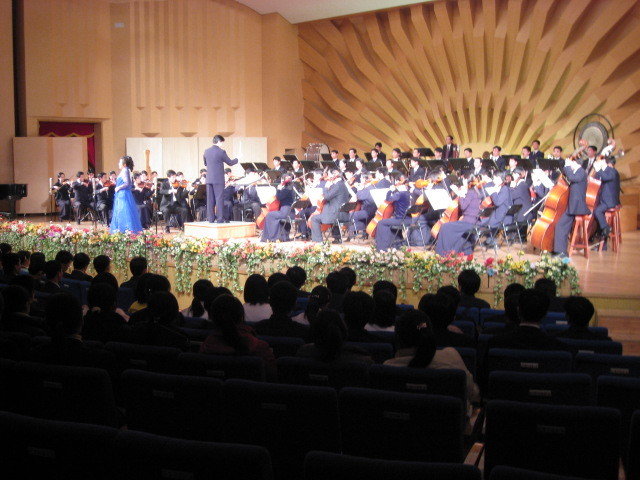
Performance in the concert hall of the University of Music and Dance.
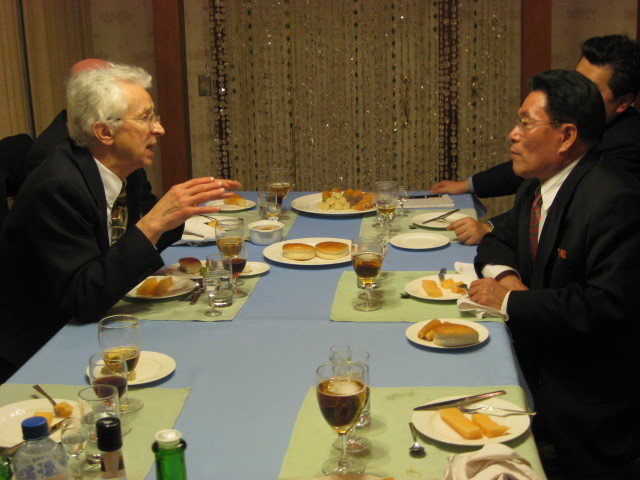
Hecker (left) and Ri Gun engaged in discussion over dinner.
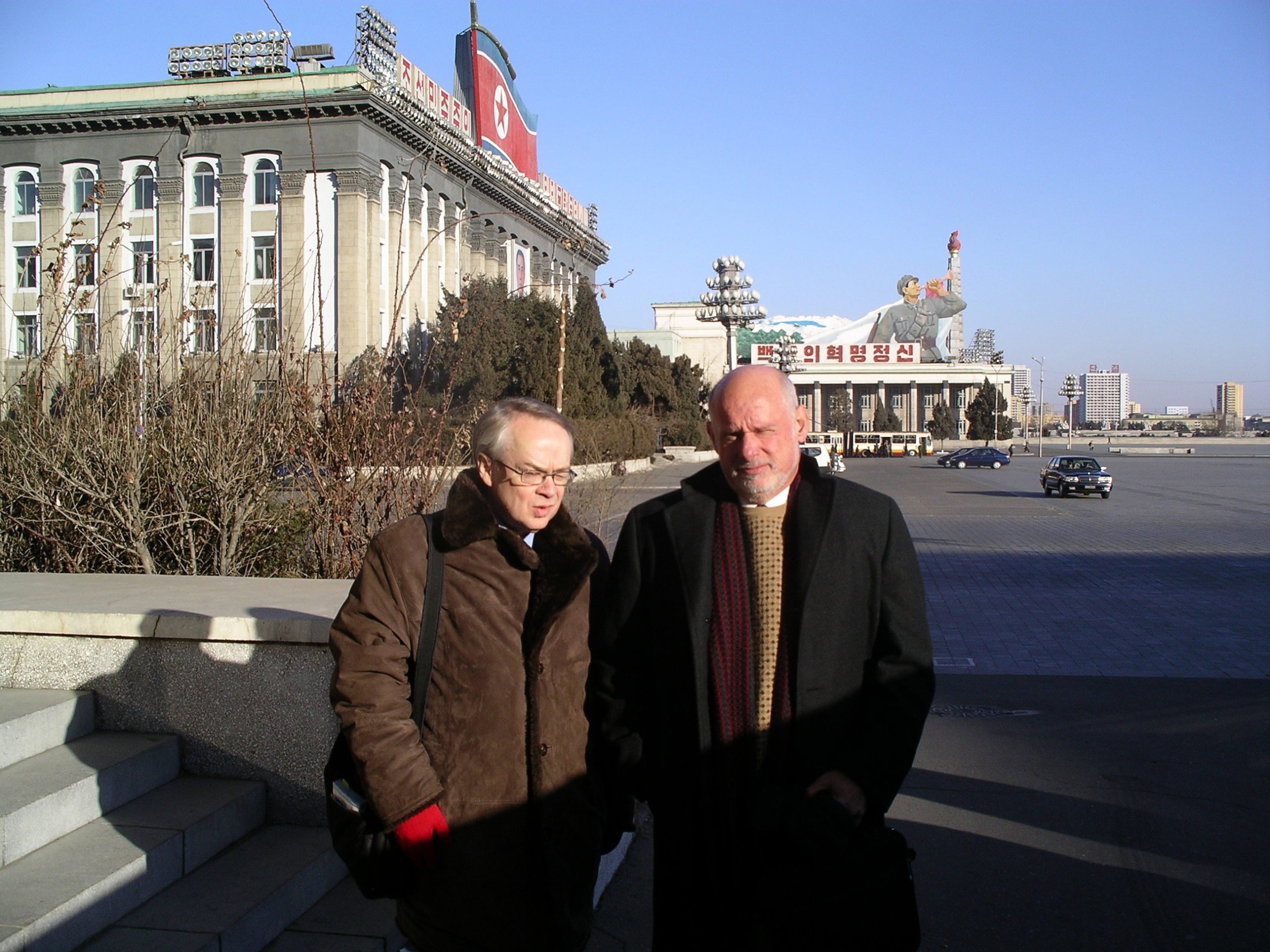
Luse (left) and Wit at the Pyongyang central square.
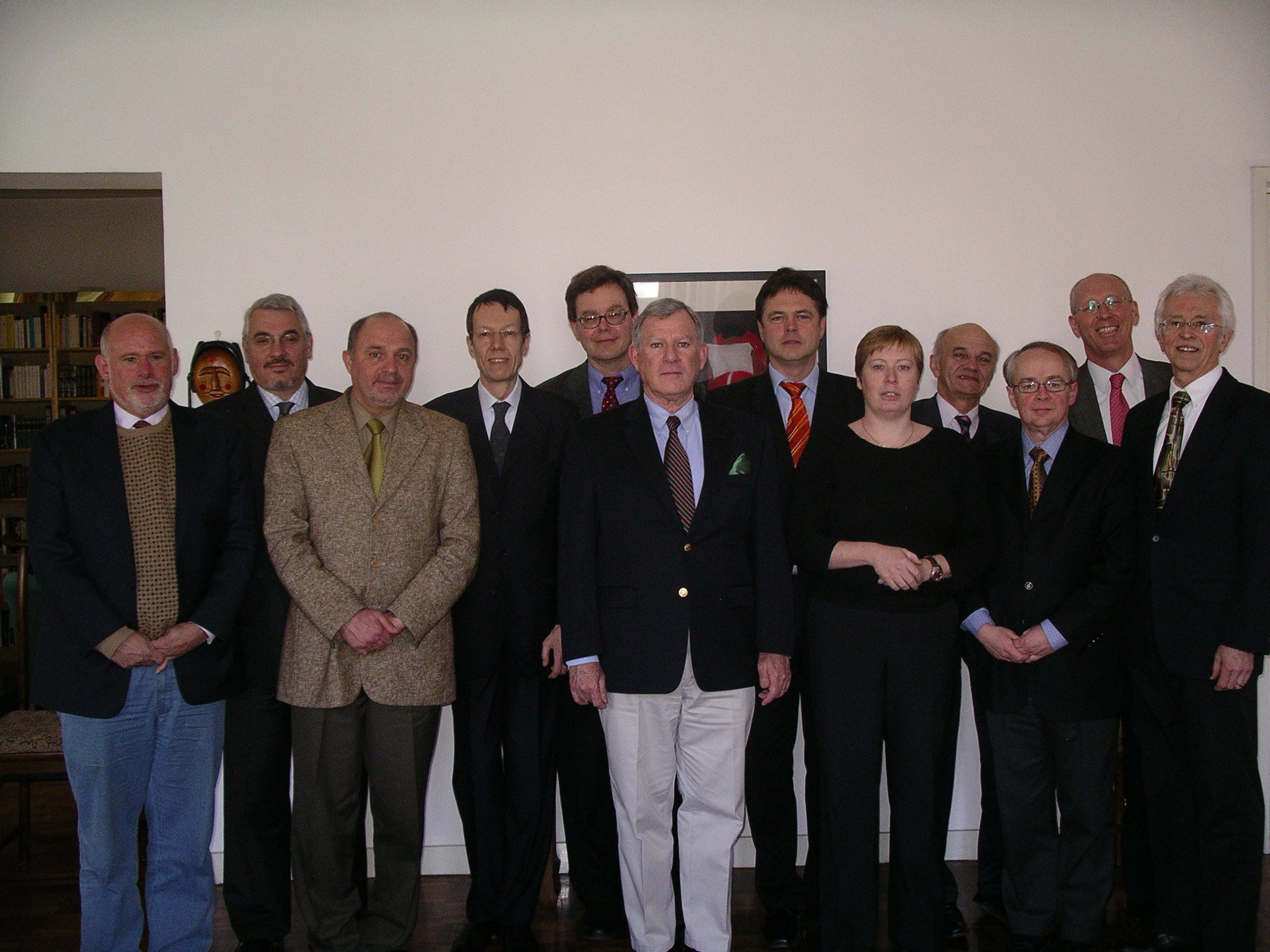
Lunch meeting with diplomats from several foreign embassies at the home of Swedish Ambassador.
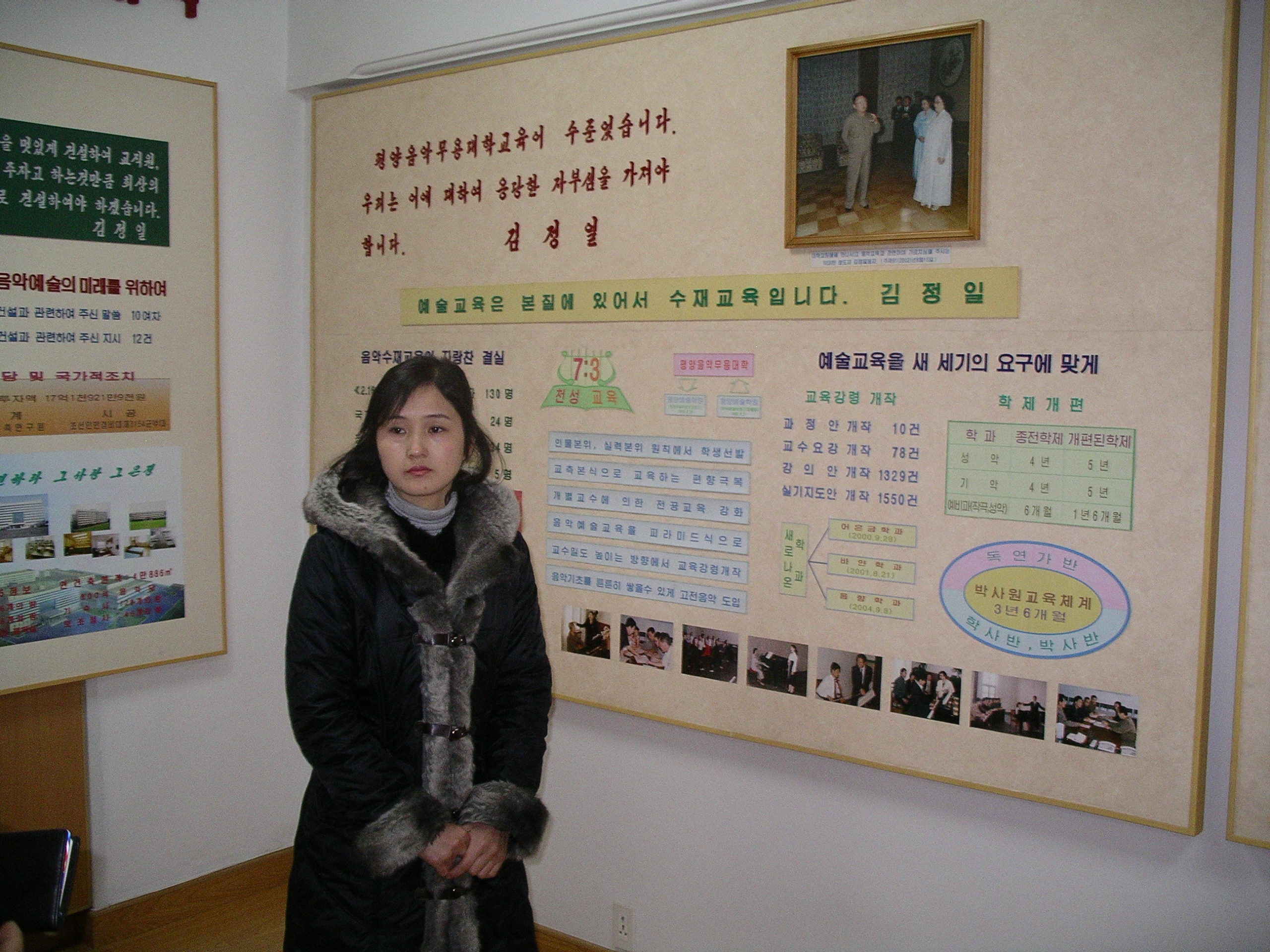
Guide narrating the life of Dear Leader Kim Jong Il.
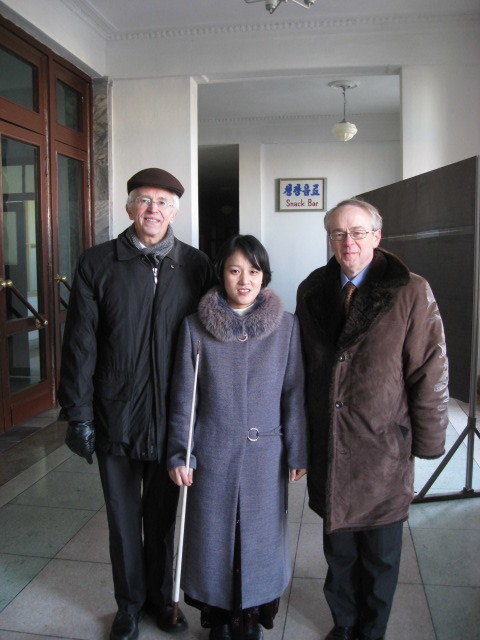
Hecker (left) and Luse posing for photo with the guide who masterfully took the Stanford visitors through the times at Art Museum.
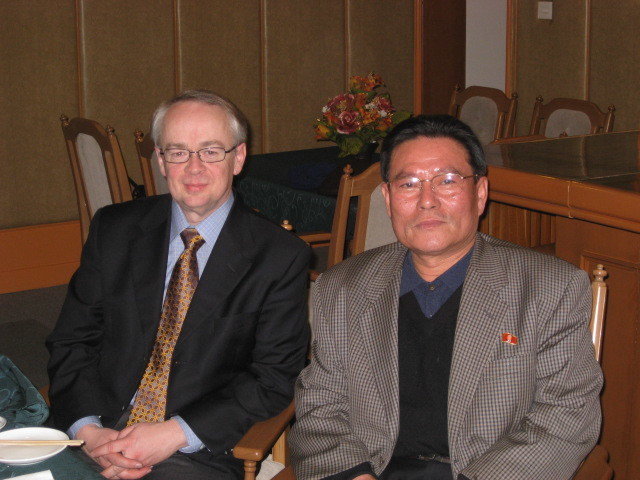
Luse (left) and Ambassador Ri Gun at dinner to mark the conclusion of the visit.
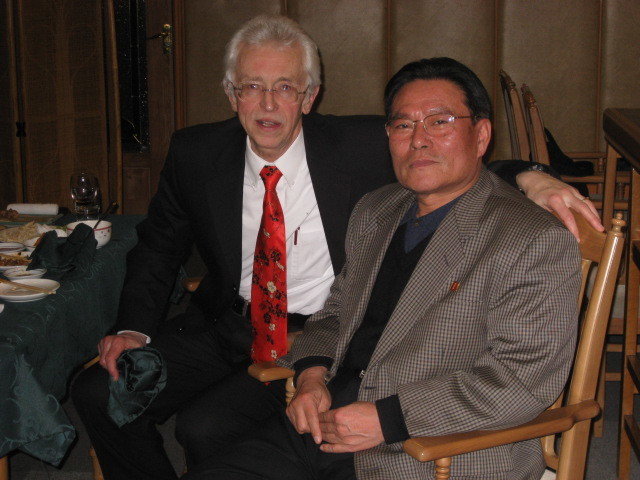
Hecker (left) and Ambassador Ri Gun wrapping up the last of the three discussions held during the visit.
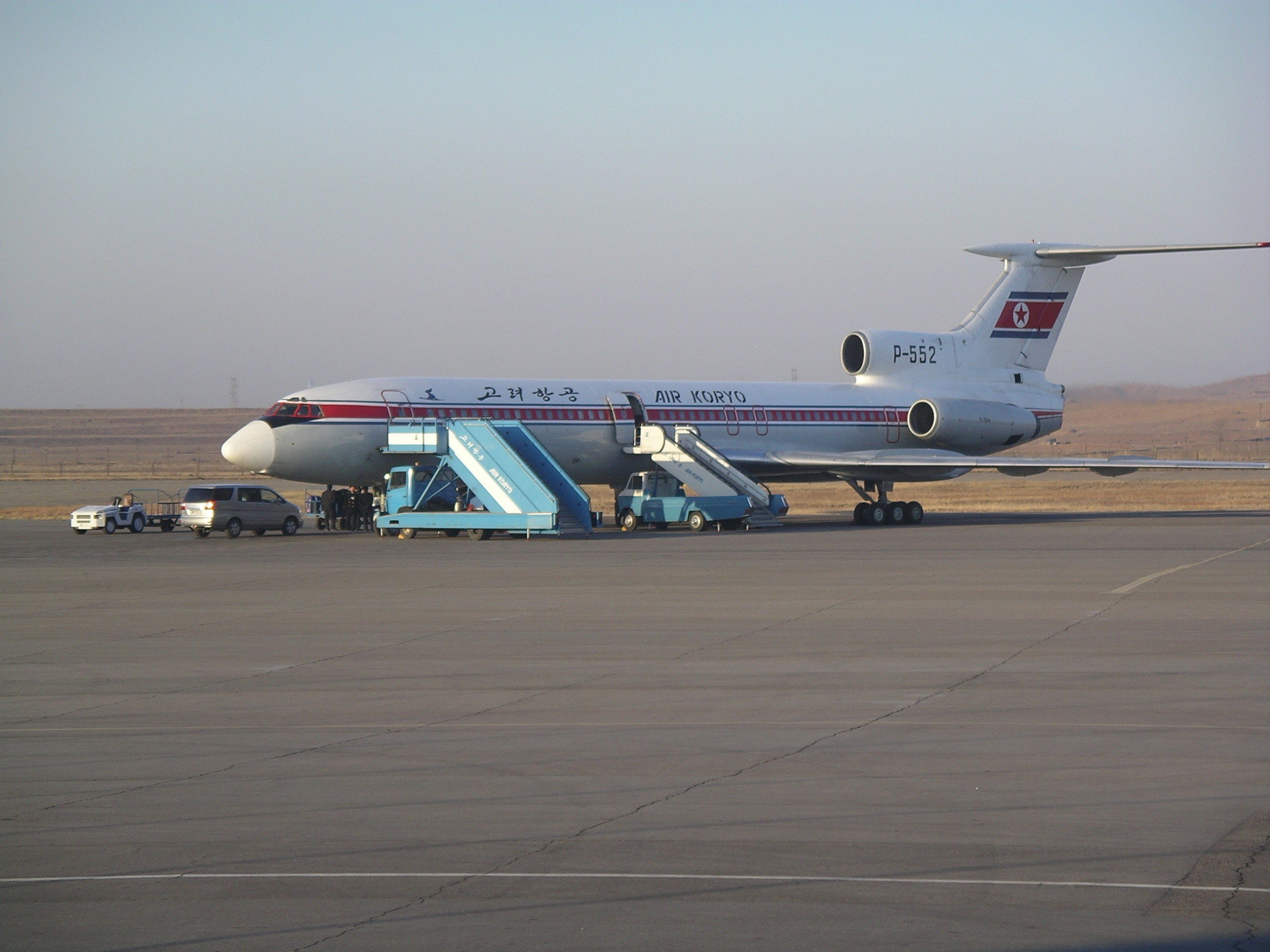
Air Koryo flight to Beijing ready for boarding.
